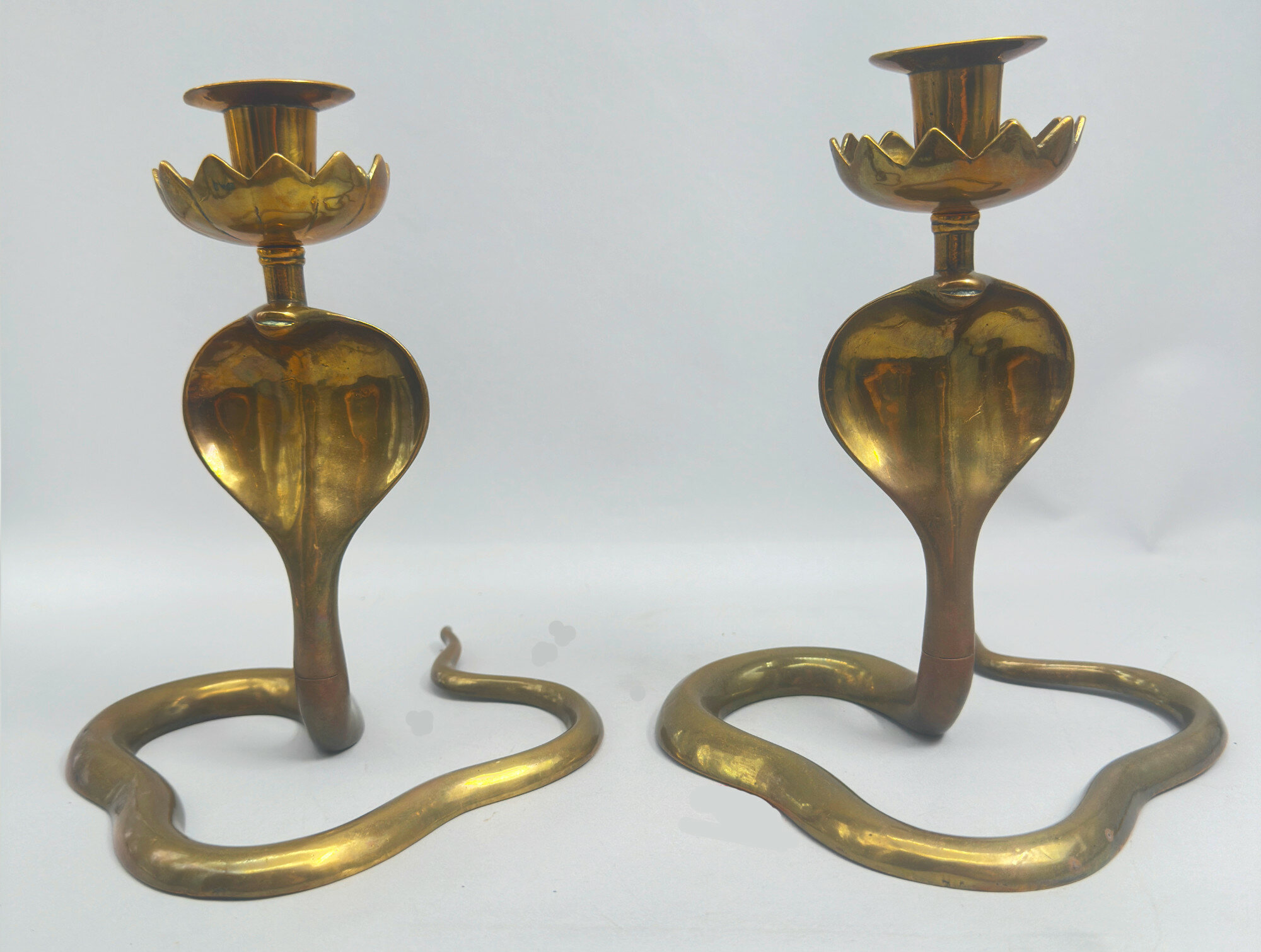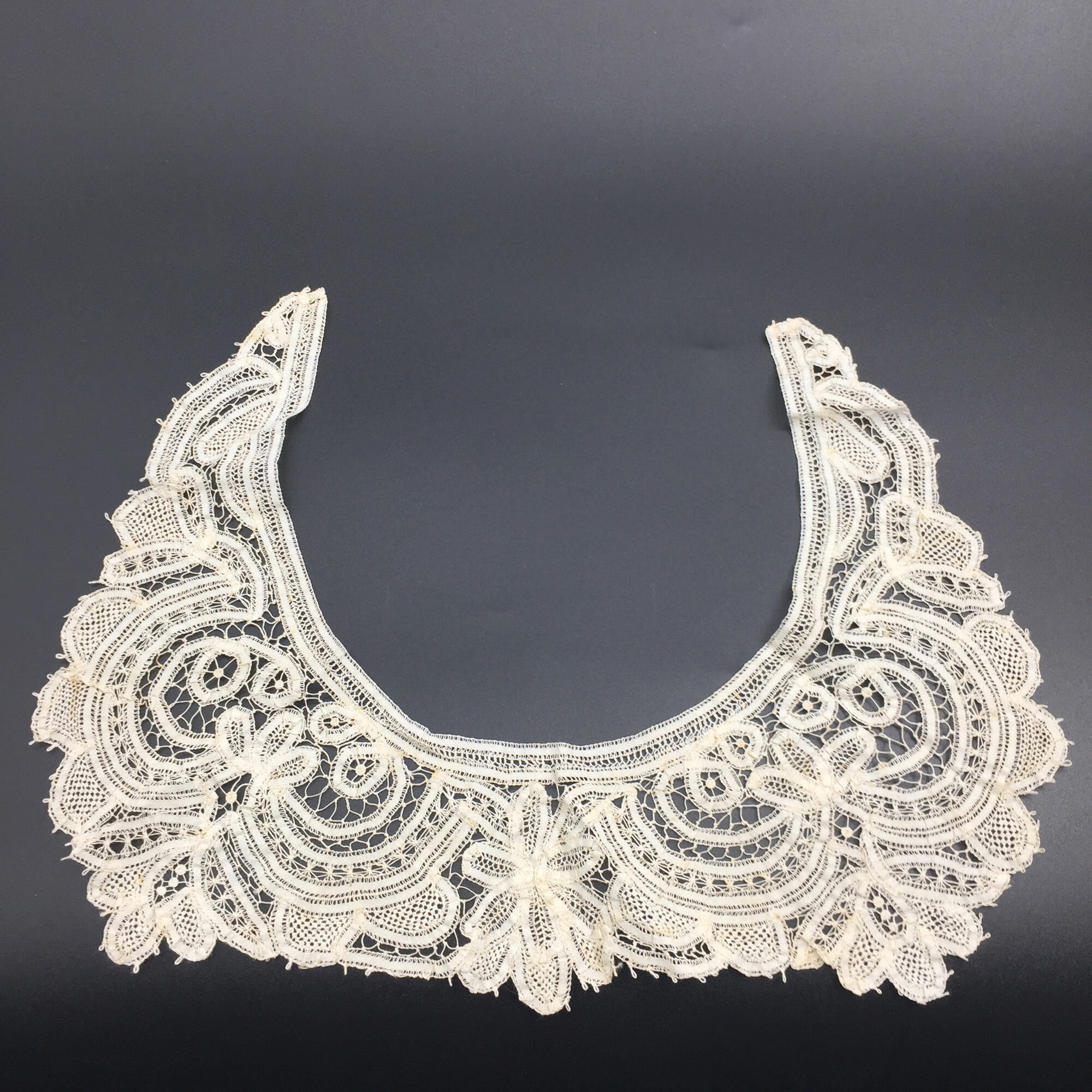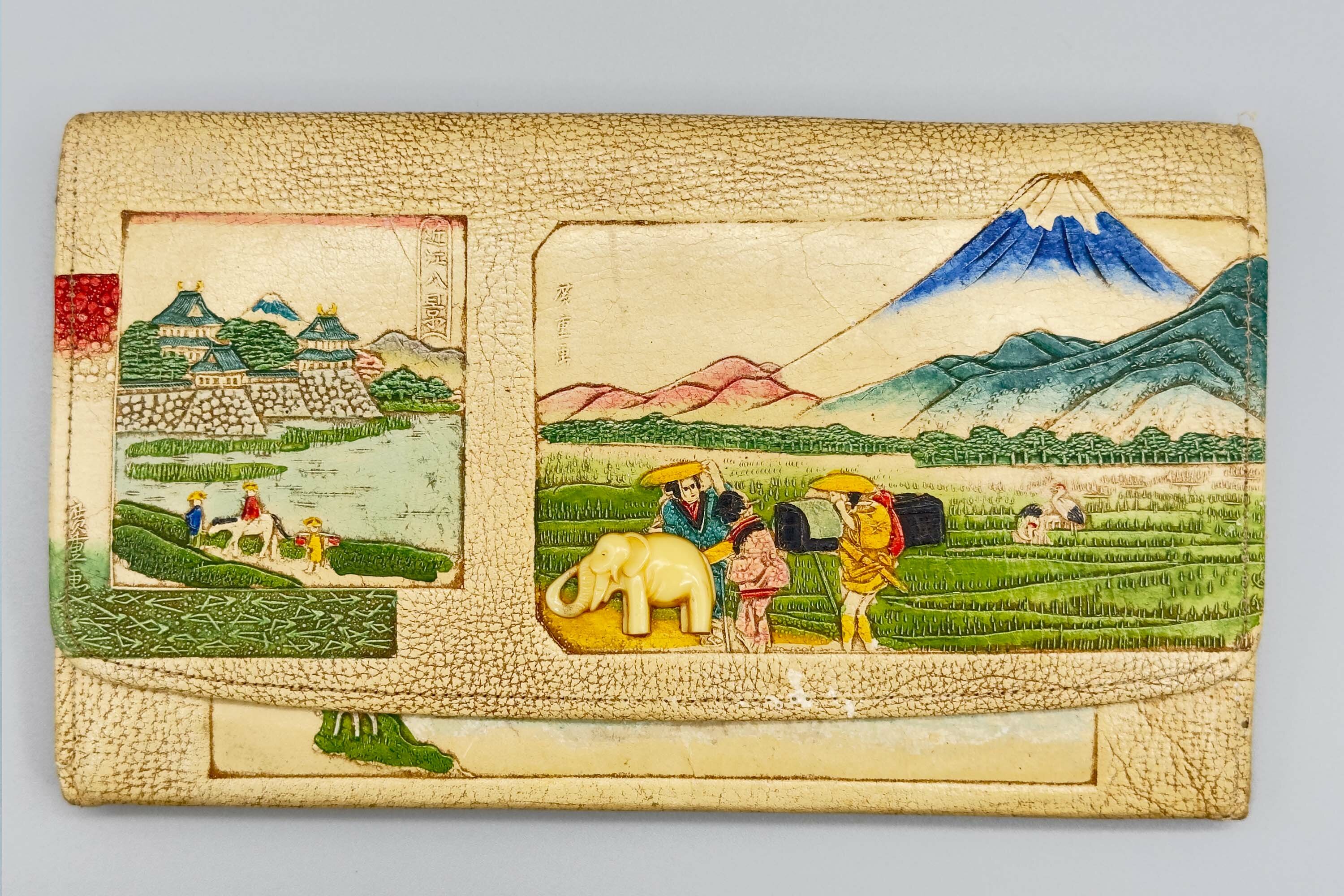
Japanese tooled and painted Leather Clutch Bag, 1930s
Price: £85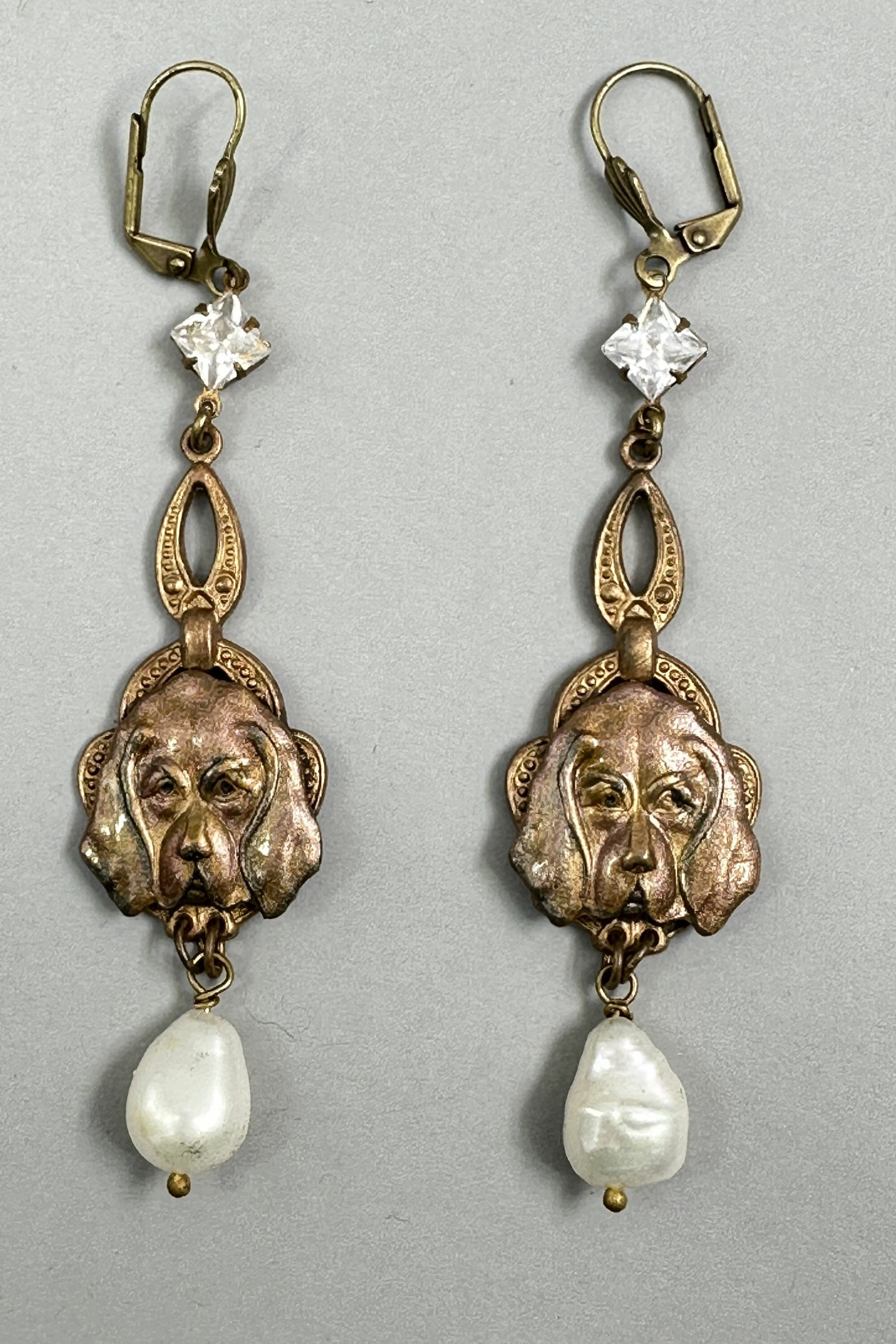
Charming Dog motif Earrings c1930
Price: £15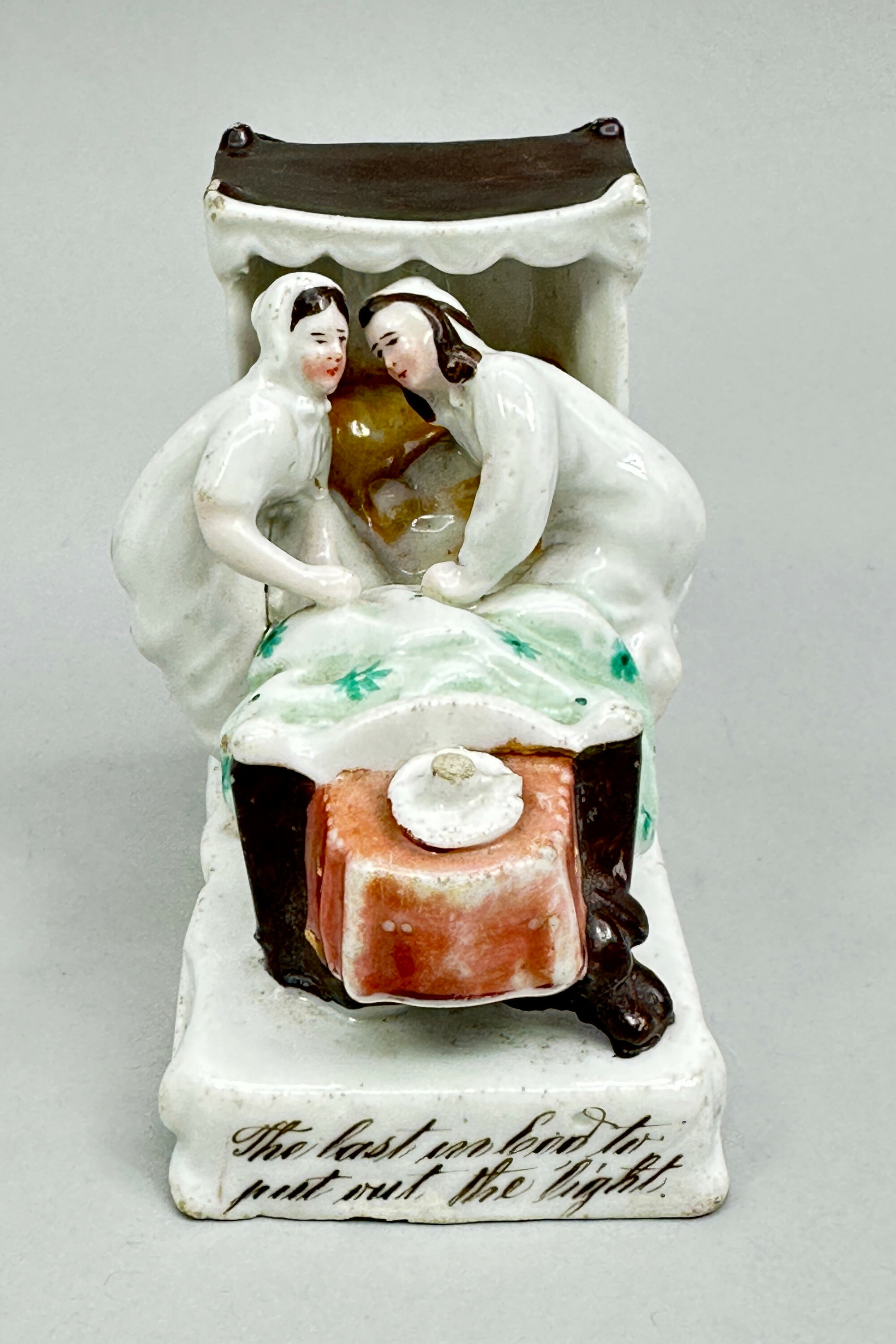
Fairing Figurine - The last in bed to put out the light, German, late Nineteenth Century
Price: £25The various figures were made in white glazed porcelain with coloured decoration. The compositions were sculptural and often accompanied by an inscription, as here. Many models are known. Two typical examples are 'Returning from the Ball' and 'Twelve Months after Marriage' but the most common example is represented here 'The last in bed to put out the light'. A couple are seen climbing into a covered bed at the foot of which stands a candle in a holder. These candles are usually broken off, most likely because of simple damage over the years but it has been suggested that this was done deliberately for good luck.
Some of the fairing figurines are marked, as here. The impressed number '2851' comes from the first series of figures produced by the Conta factory with numbers ranging from 2850 to 2899. The earlier examples do not have the shield mark found on most of the pieces which indicates an earlier dating here, more towards the middle of the nineteenth century.
Fairings have been collectors' items for many years now and still hold a naif charm which makes them appealing display items, with a history of their own.
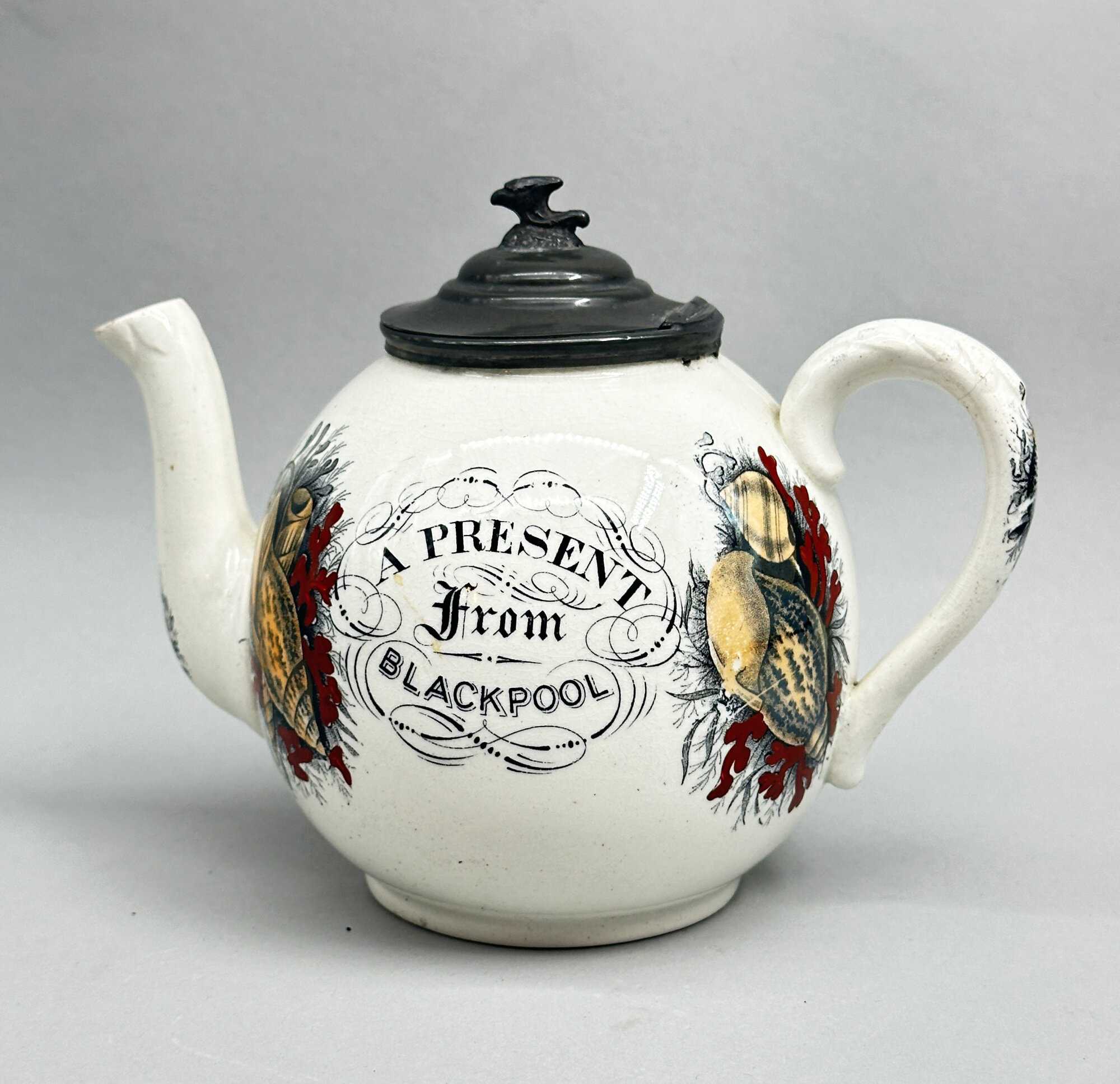
Blackpool souvenir teapot c1920
Price: £35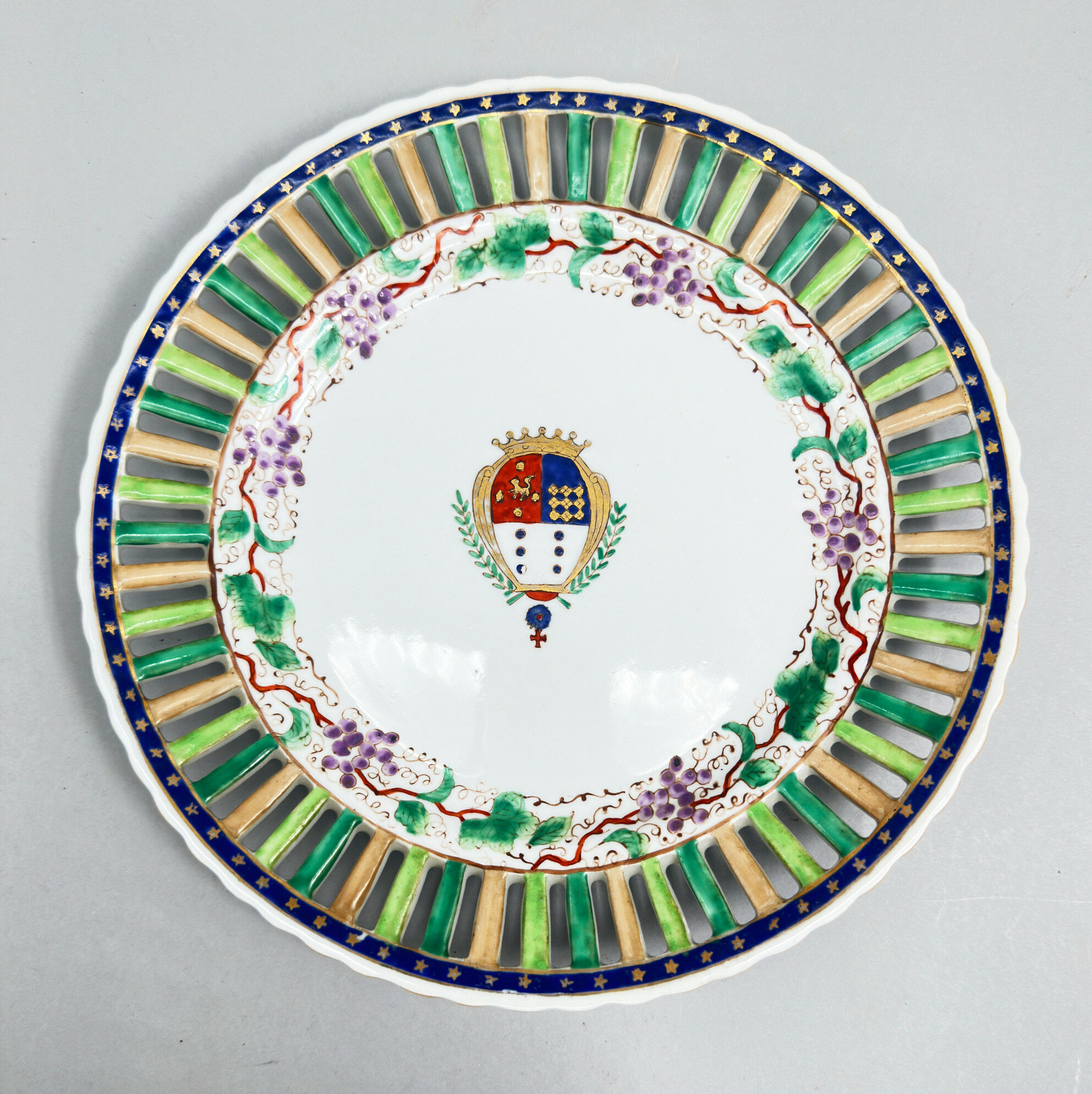
Compagnie des Indes style reticulated edge Armorial Plate, Chinese C20th
Price: £45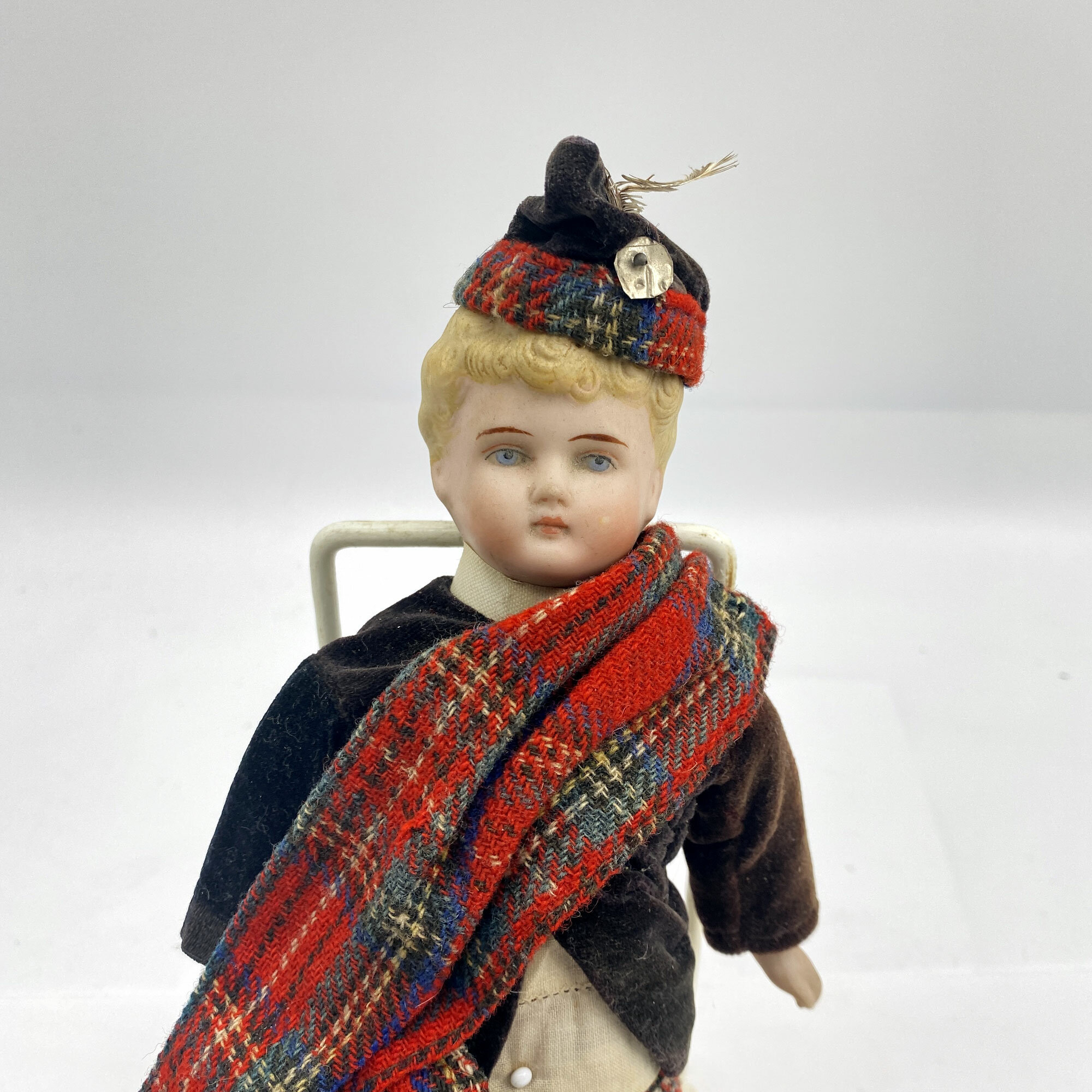
Bisque Scottish boy character doll c. 1900
Price: £60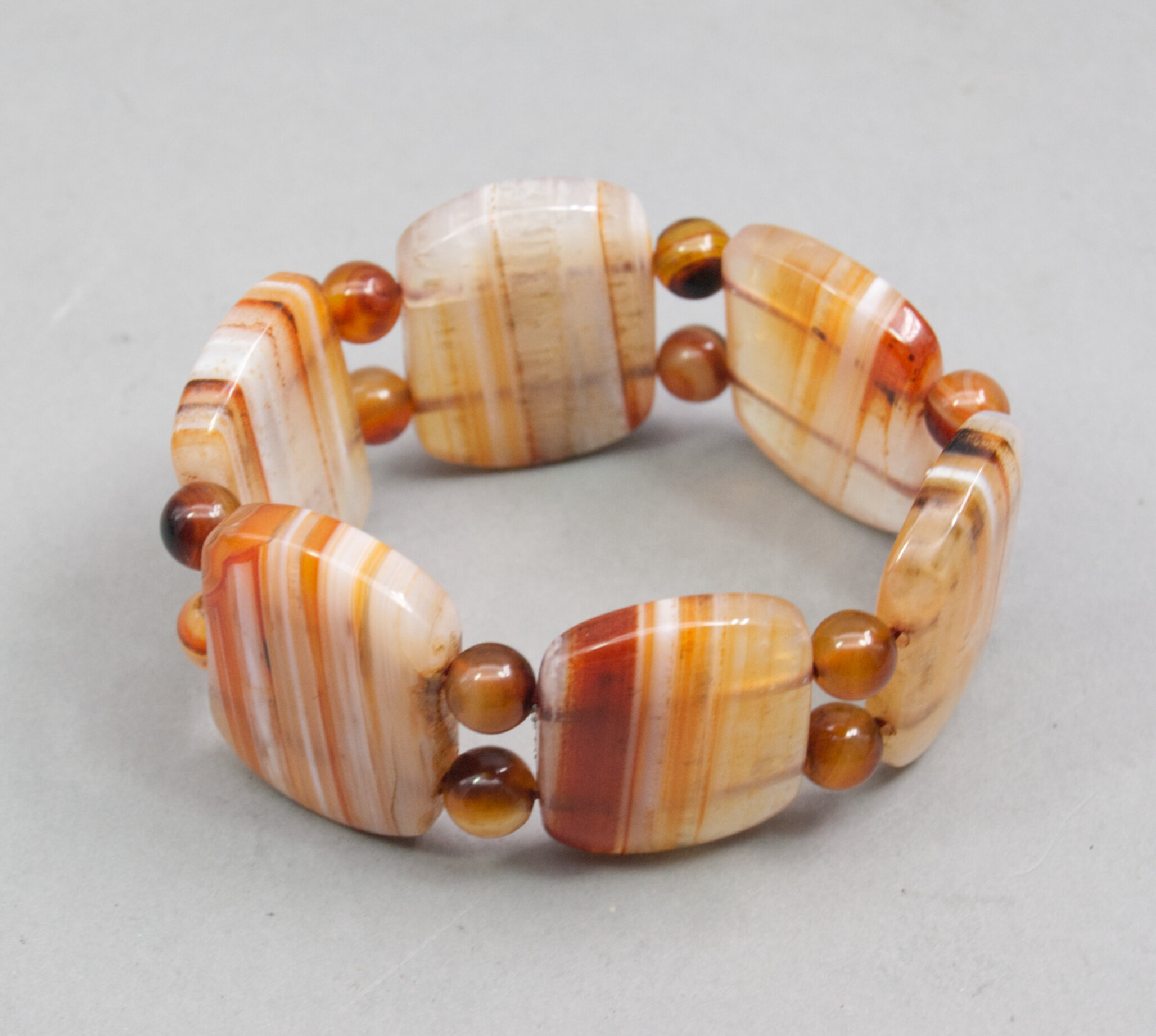
Very unusual banded carnelian panel bracelet
Price: £45
Daum pate de verre bowl, Gingko
Price: £750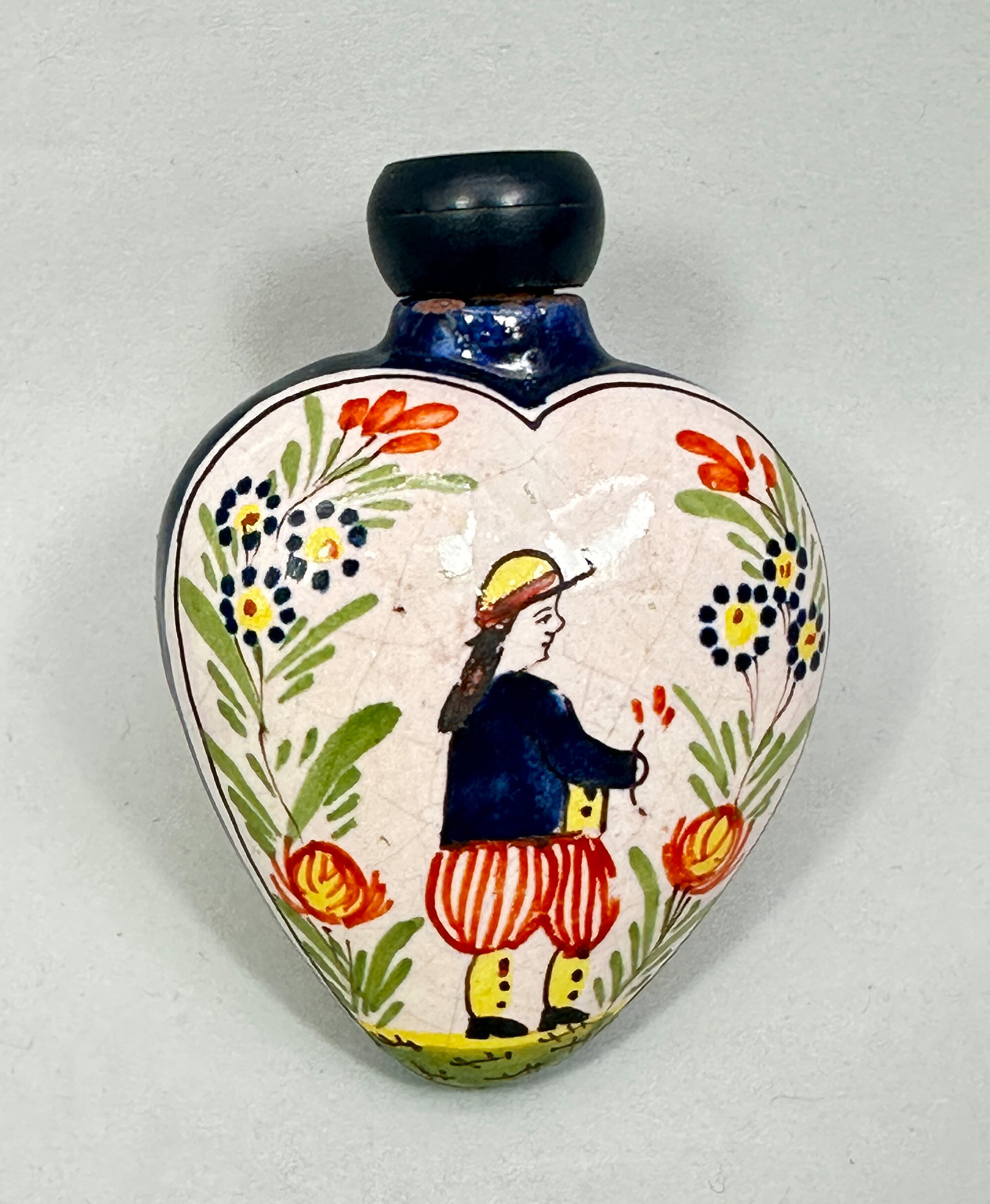
Faience Perfume Bottle and Stopper, Quimper France, C20th
Price: £75This bottle has the Breton gentleman on its front face and a fleur de lis to the reverse. The stylised lily, known as fleur de lis, became a symbol of the French royal family and France in general. It occurs, for example, on the Canadian flag but was also regularly used as a decorative motif by the Quimper potteries. These bottles can date to as early as the beginning of the twentieth century but a later time of production is probably a safer assumption here, perhaps to the 1950s. Few of these bottles survive with their fitted stoppers and the traces of cork to the top interior suggest that this stopper has been in place for some time and probably since the date of manufacture.
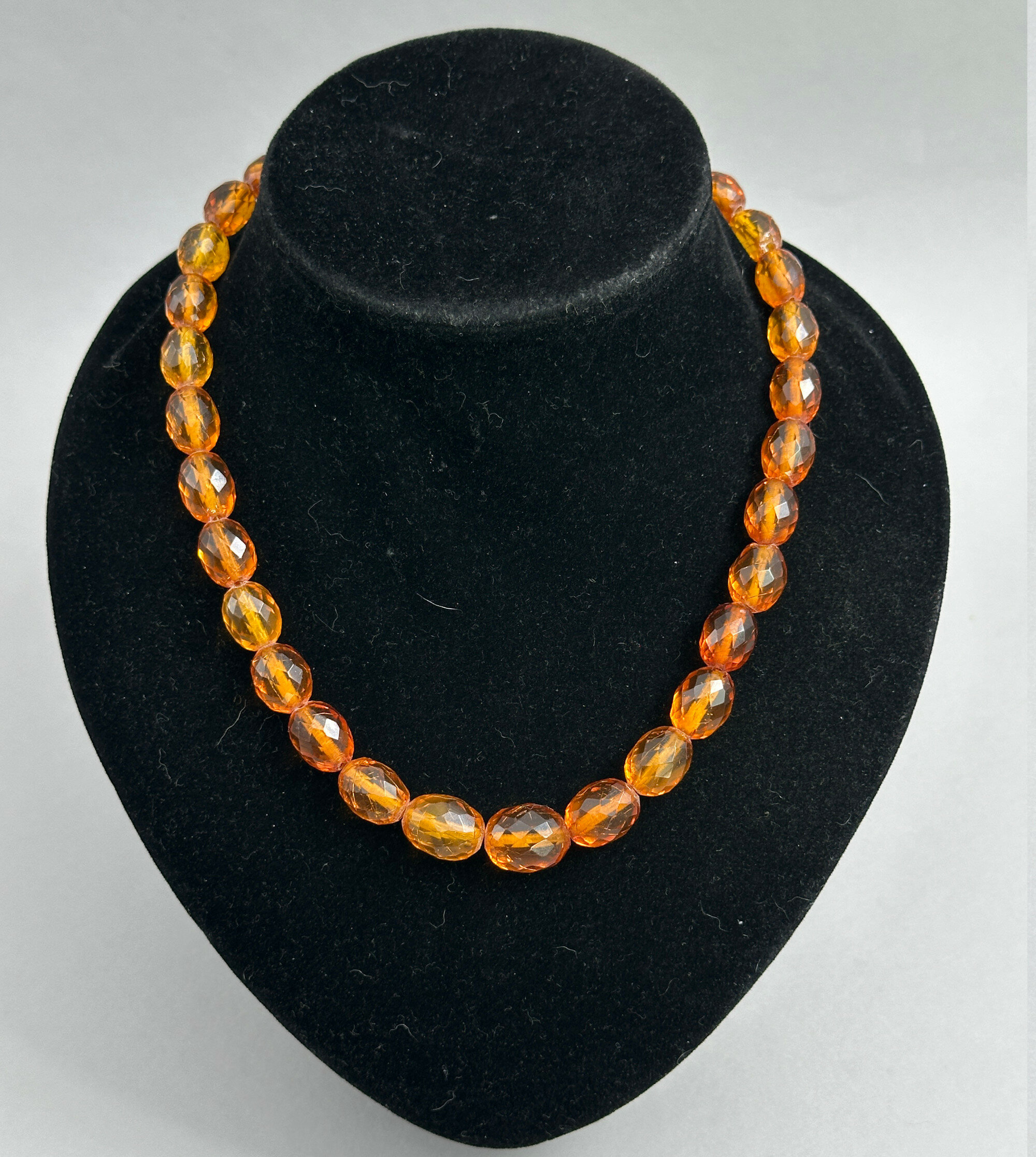
Victorian facetted amber bead necklace c1900
Price: £125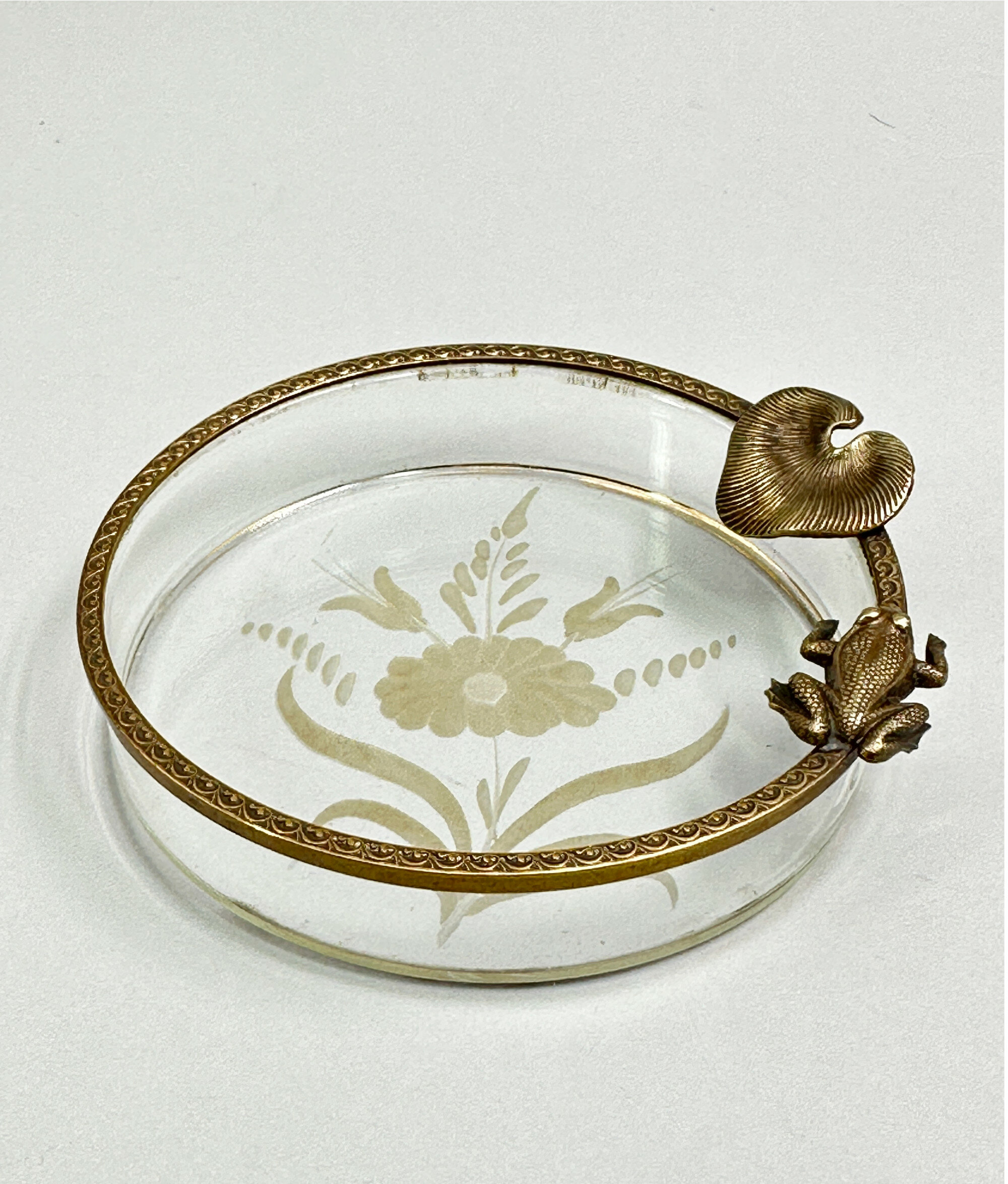
Fine Quality engraved French Glass Dish with naturalistic Ormolu Mounts, early C20th
Price: £25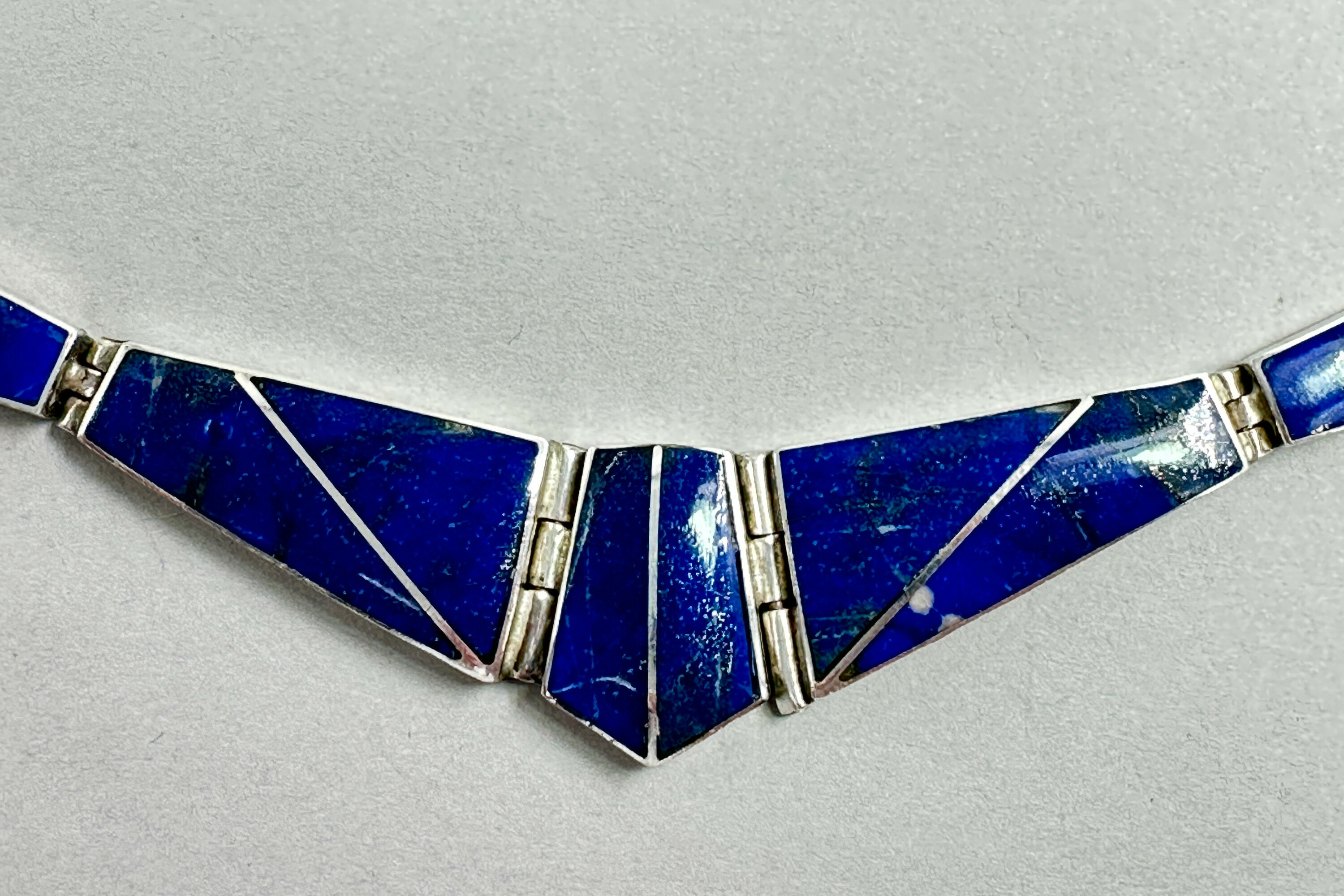
Silver Lapis lazuli collar necklace, probably Taxco Mexico, c1990
Price: £65
African rosewood sculpture of a seated musician c. 1960
Price: £75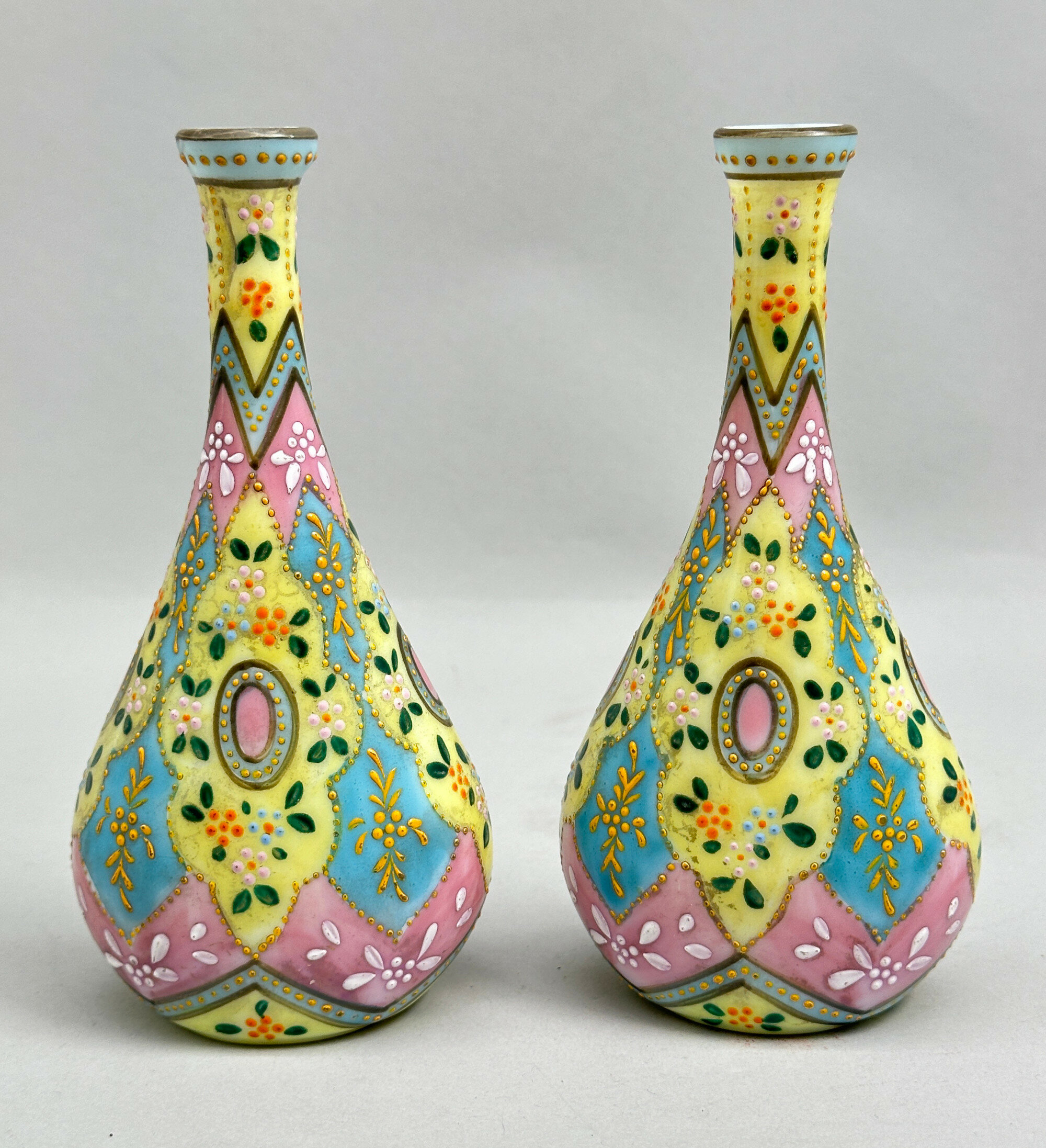
Pair of Bohemian Harrach Glass Vases, Morocco pattern, second half C19th
Price: £95The Harrach glassworks is named after Alois Raimund von Harrach (Count Harrach), on whose estate it was founded in Bohemia, in the early eighteenth century. Managed at first by one Elias Muller, the firm traded under a variety of names becoming known as Harrach in the nineteenth century and Harrachov, the name eventually given to the town where the factory was situated, in the twentieth. These opulent vases were a popular part of its range in the nineteenth century, the pattern being produced in a variety of similar shapes and always as shelf ornament pieces. The decoration here is particularly lavish with an attractive use of colour and has survived in excellent condition making these a desirable addition for collectors of Bohemian glass or admirers of nineteenth century glass style generally.
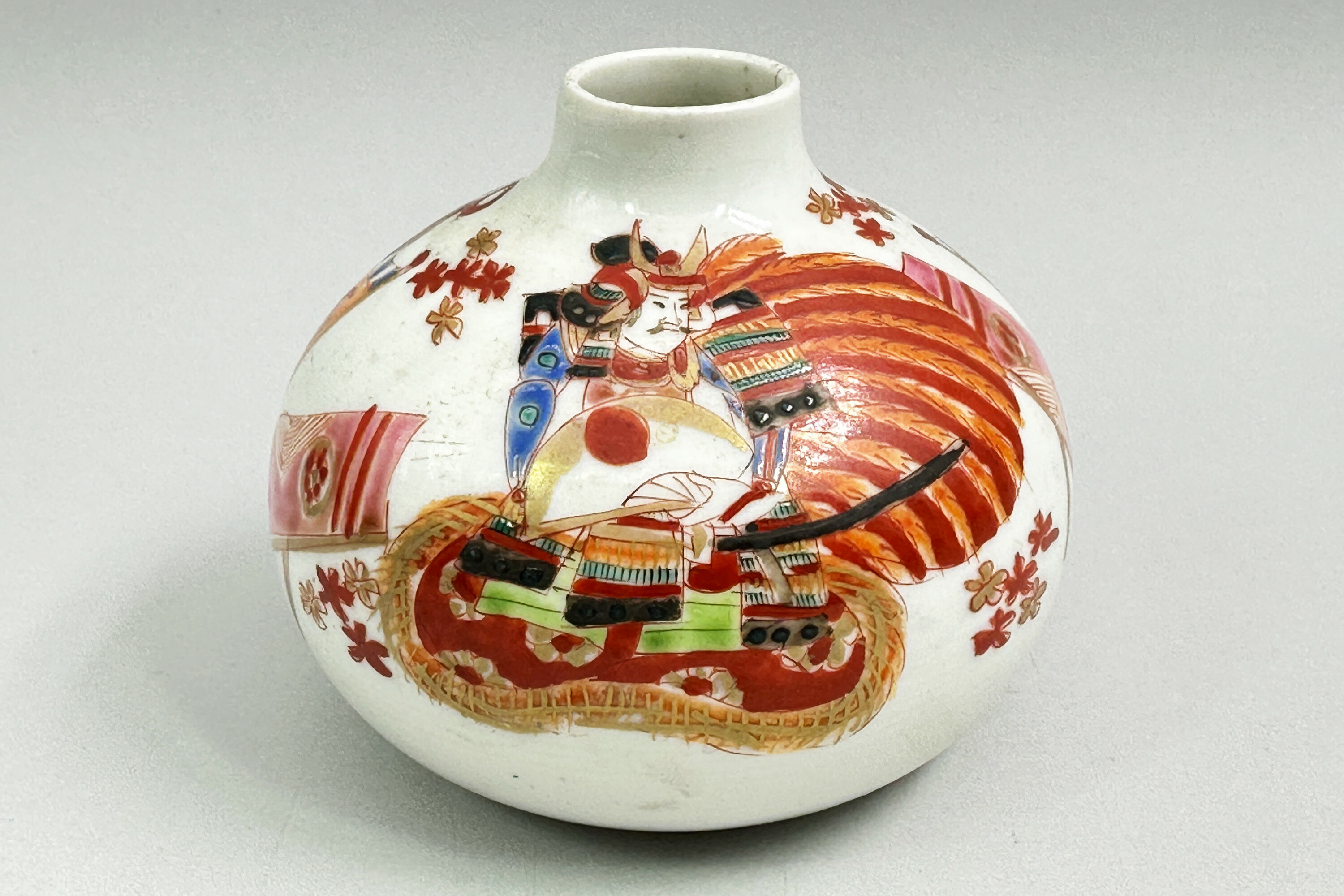
A Japanese Hichozan Shinpo Brushwasher circa 1880
Price: £25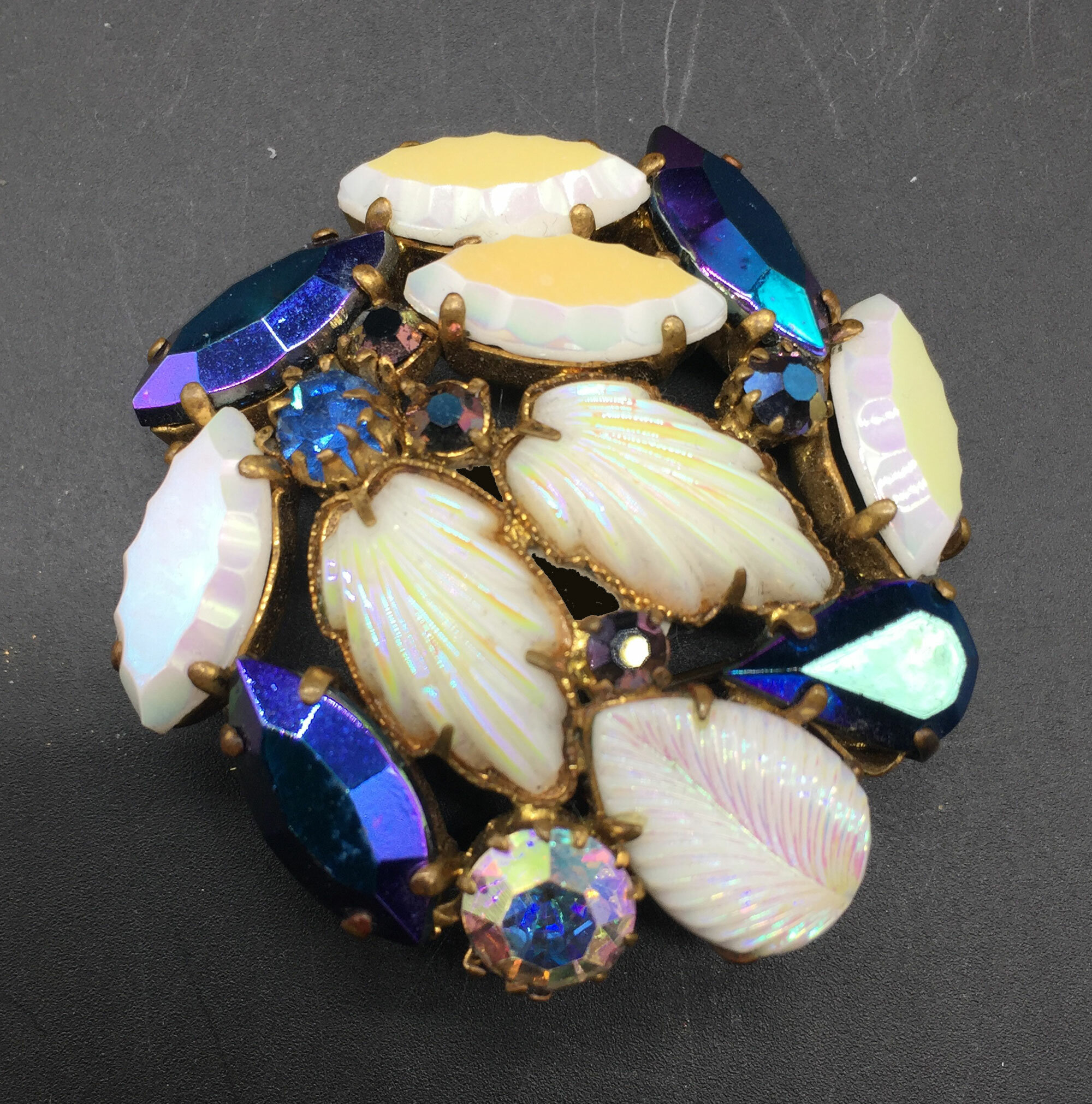
1950s aurora borealis brooch
Price: £15
Three Art Glass Paperweights, late C20th
Price: £75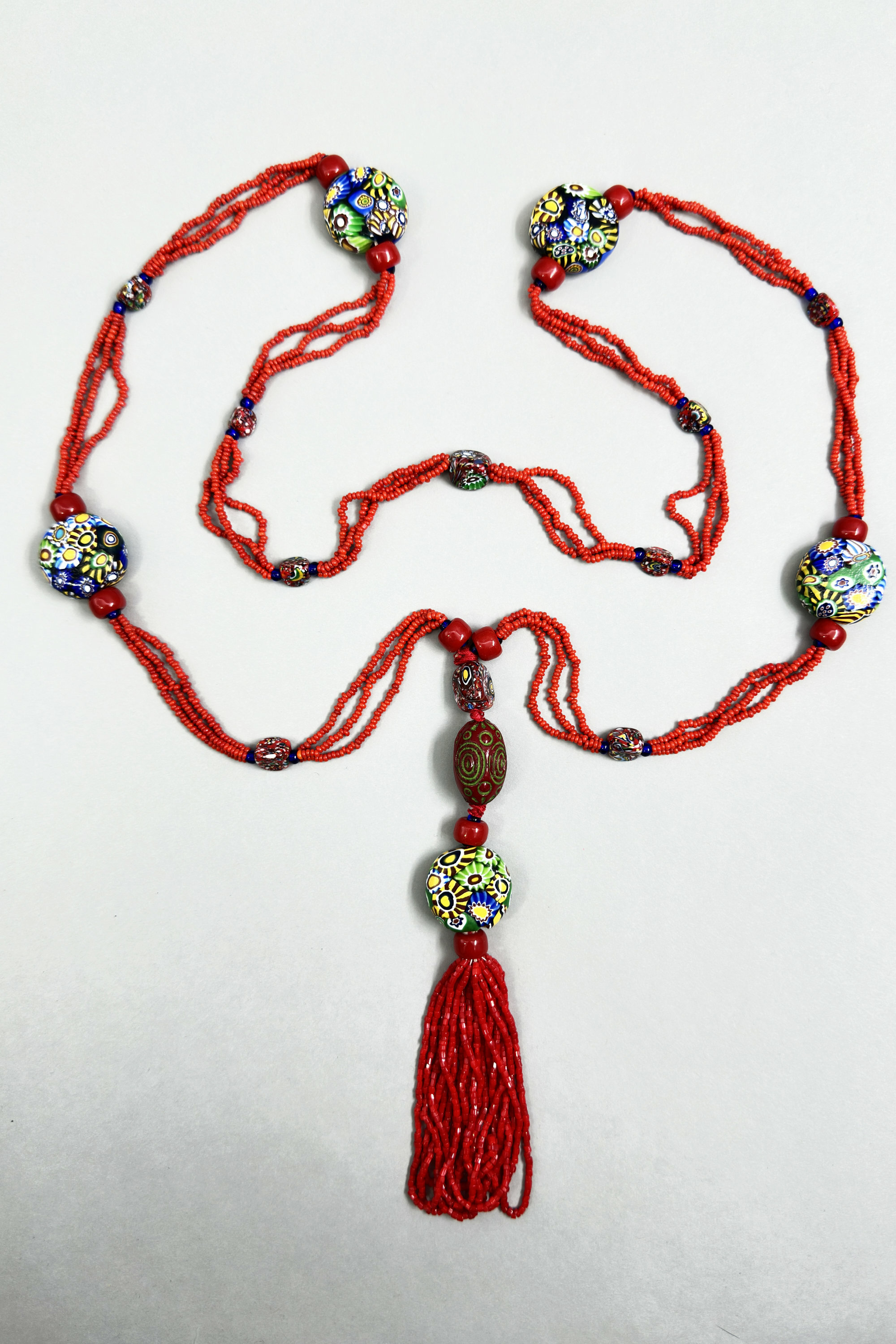
Mille fiore bead flapper necklace c1930
Price: £50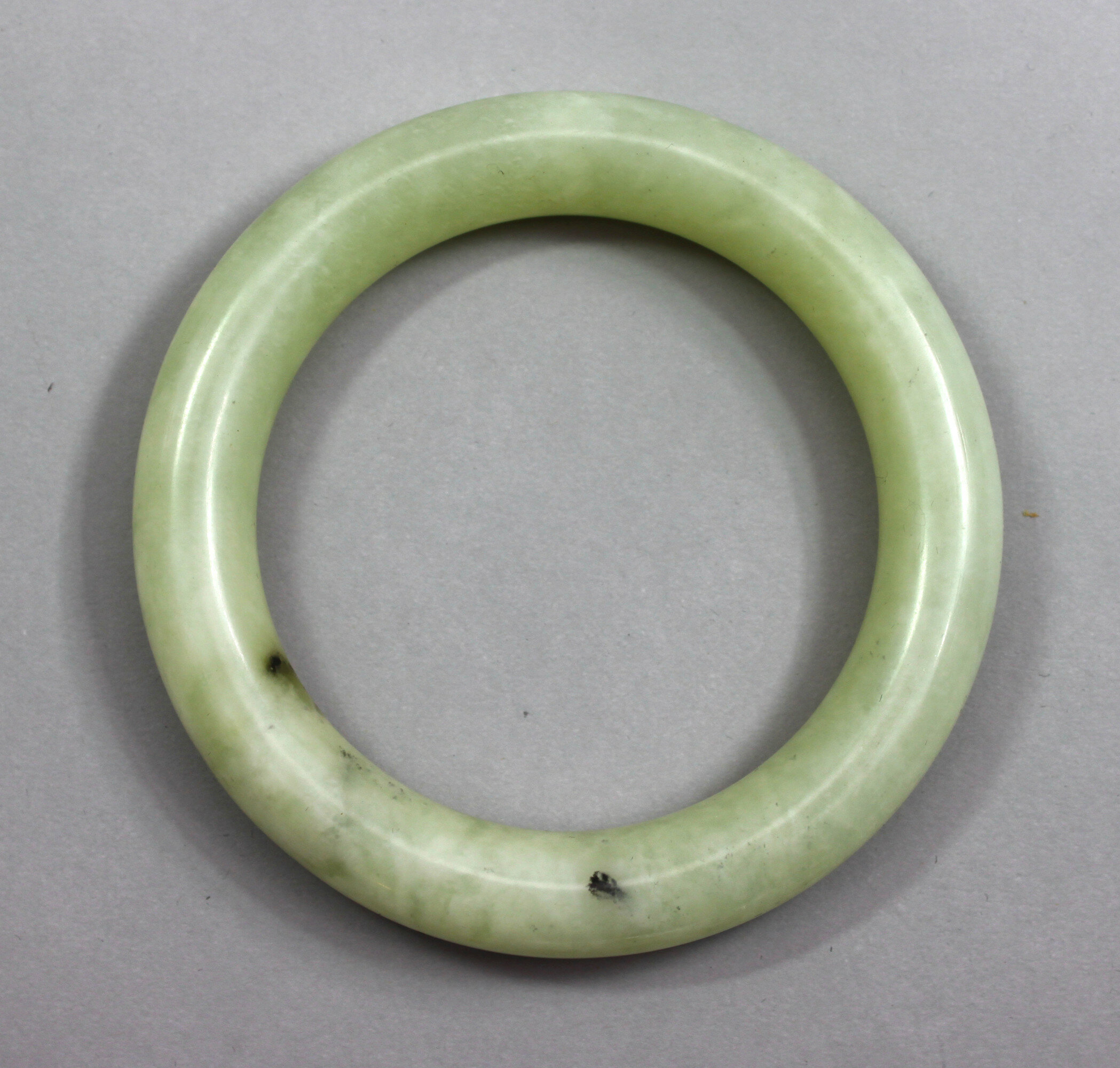
Chinese Pale Celadon Jade Bangle, probably Nineteenth Century
Price: £45Jade is usually divided into two types, nephrite jade and jadeite jade. The latter is heavier and slightly harder, making it more difficult to scratch. The weight of this piece suggests that we do have jadeite here. The stone was selected for carving on the basis of its attractive appearance and the finish, which bears no trace of machine tooled manufacture, suggests a pre twentieth century dating, but certainty in these matters is notoriously difficult
The size of this piece is unusually large, suggesting that it would have been intended for a male wearer. This too suggests an earlier rather than later time of manufacture. The stone is exceptionally pleasant to the hand and would have been an elegant accompaniment to any wardrobe.
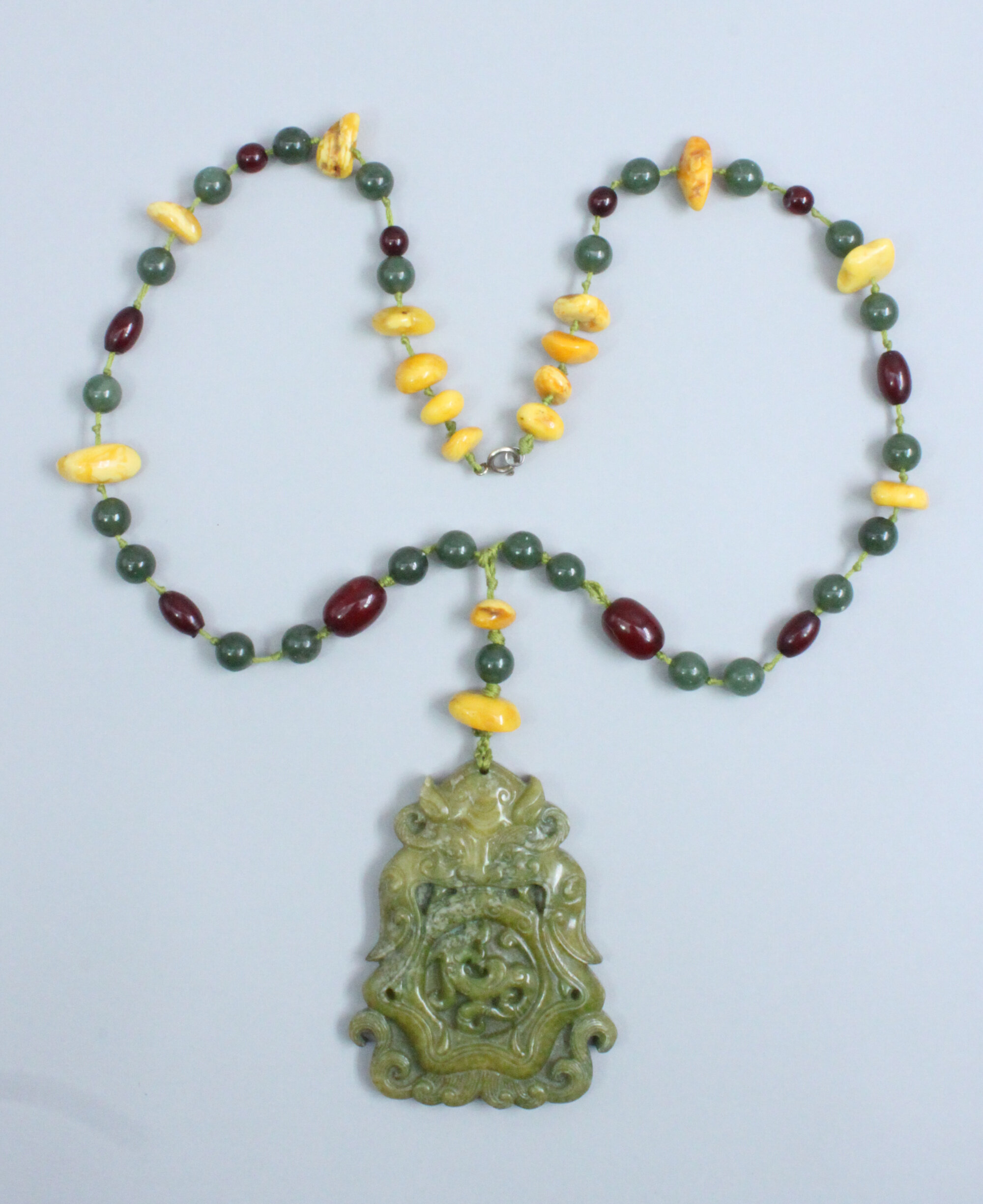
Constructed necklace with jade, egg yolk amber and cherry amber
Price: £250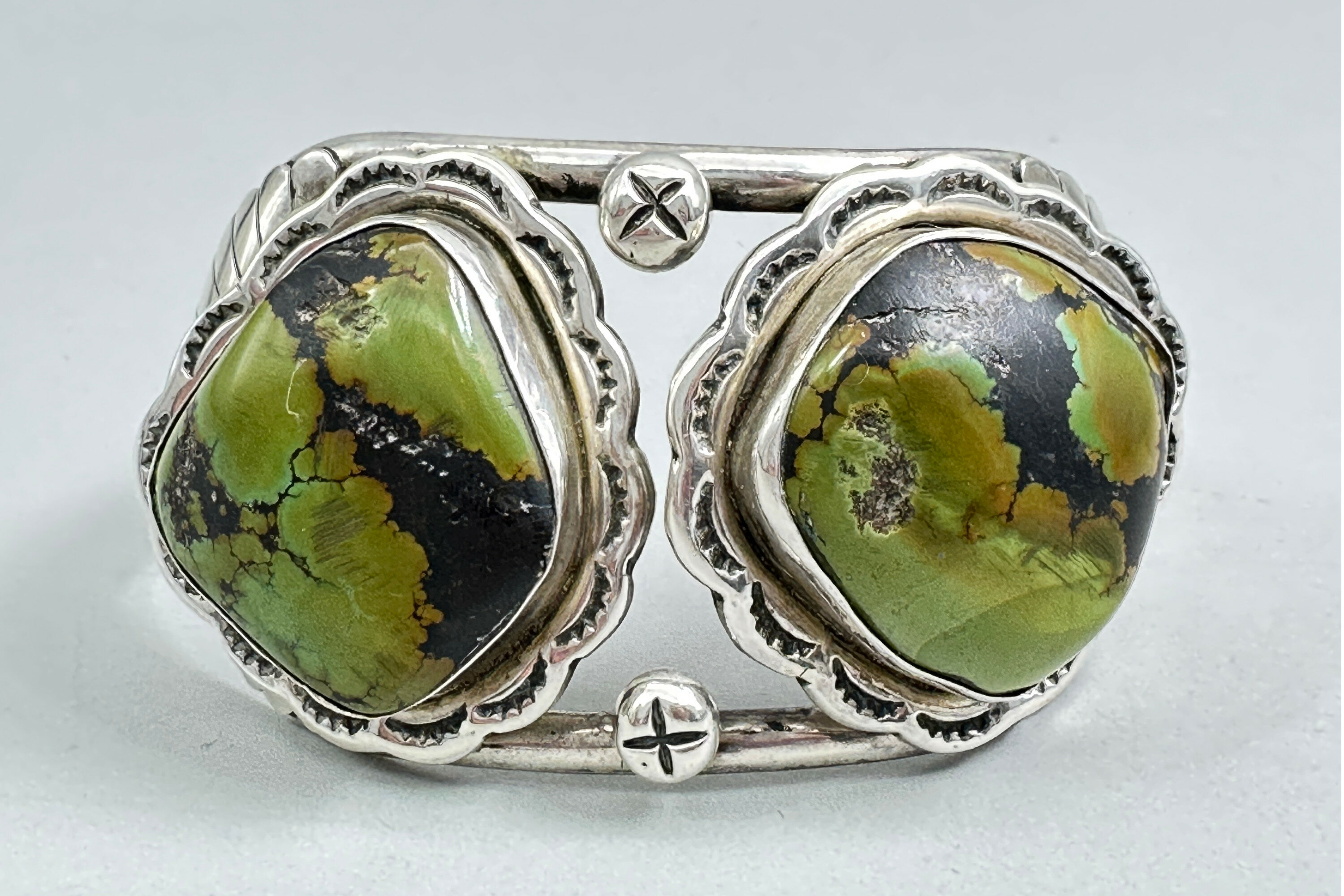
Native American turquoise cuff bracelet, 1960s
Price: £225
Golden Amber Webb Glass Vase, marked, 1950s
Price: £45Thomas Webb began his glass career in 1829, when he became a partner in the Wordsley Glassworks. Various career changes followed and in 1859 he was joined by his sons Thomas Wilkes Webb and Charles Webb and began trading as Thomas Webb & Sons based in Stourbridge. The firm was run by various family members until mergers started to occur in the early twentieth century and Sven Fogelberg, previously from Swedish glassworks Kosta, became manager in 1932. Production continued with more mergers in the 1960s and 1970s until the firm closed in 1990. This vase was made by Thomas Webb during the 1950s as part of their 'Gay Glass' range in a design called 'Old English Bull's Eye' and has the typical 'Webb England' mark to the base.
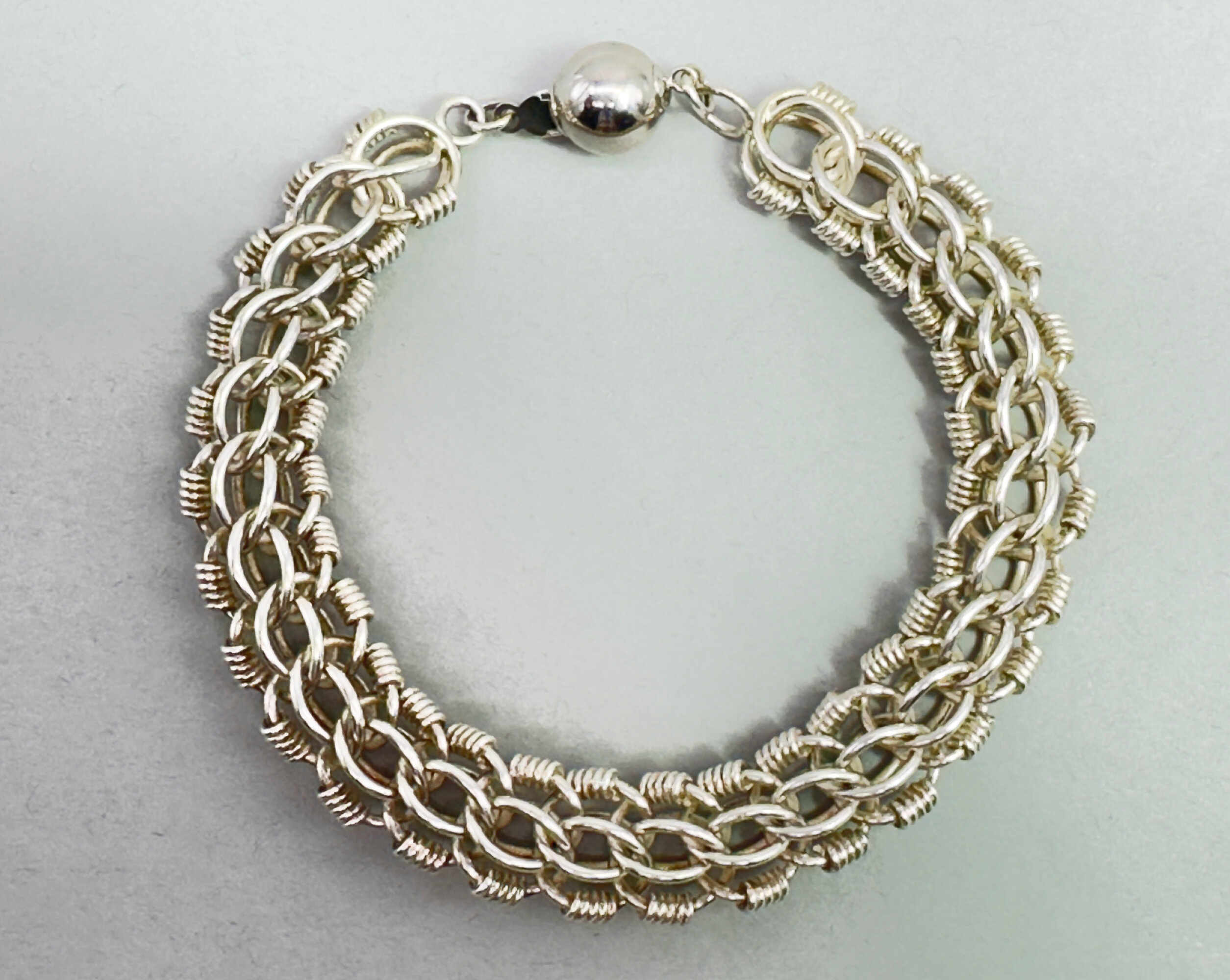
Large silver fancy link Bracelet, modern
Price: £50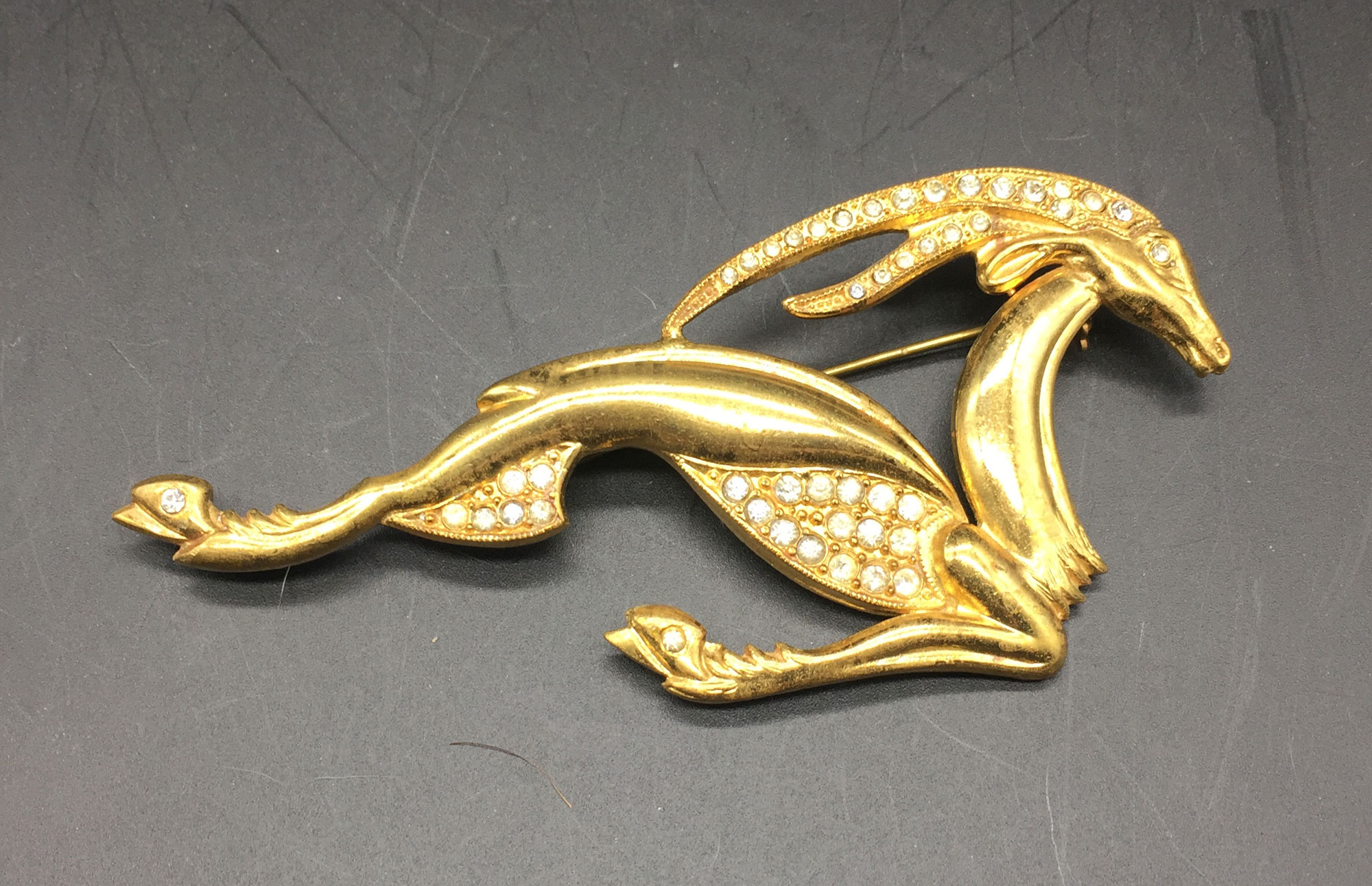
Art Deco style Antelope brooch 1940s
Price: £20
Geode form Murano dimpled sommerso glass bowl, Galliano Ferro, mid C20th
Price: £55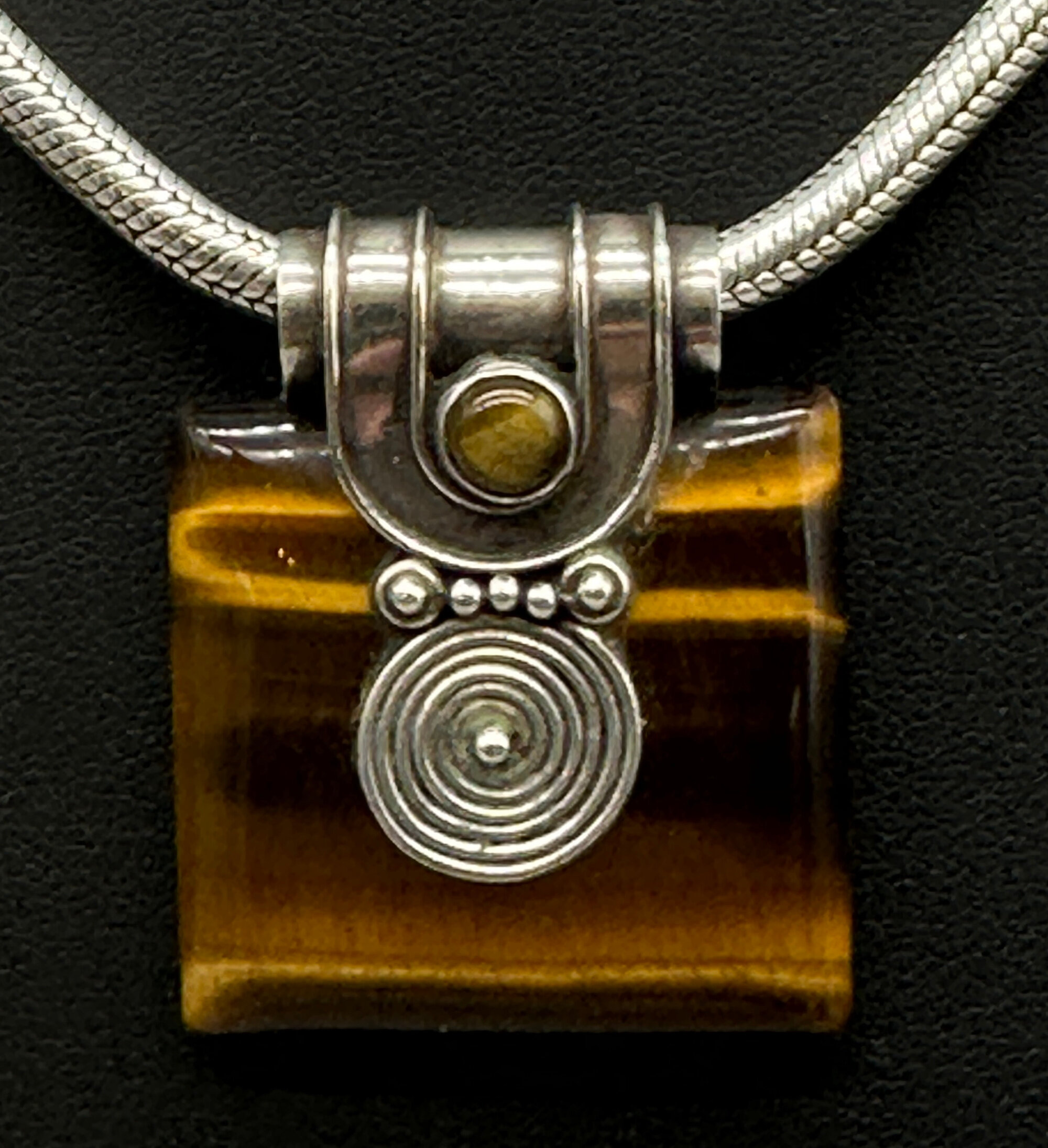
Balinese tigers eye Necklace, C20th
Price: £55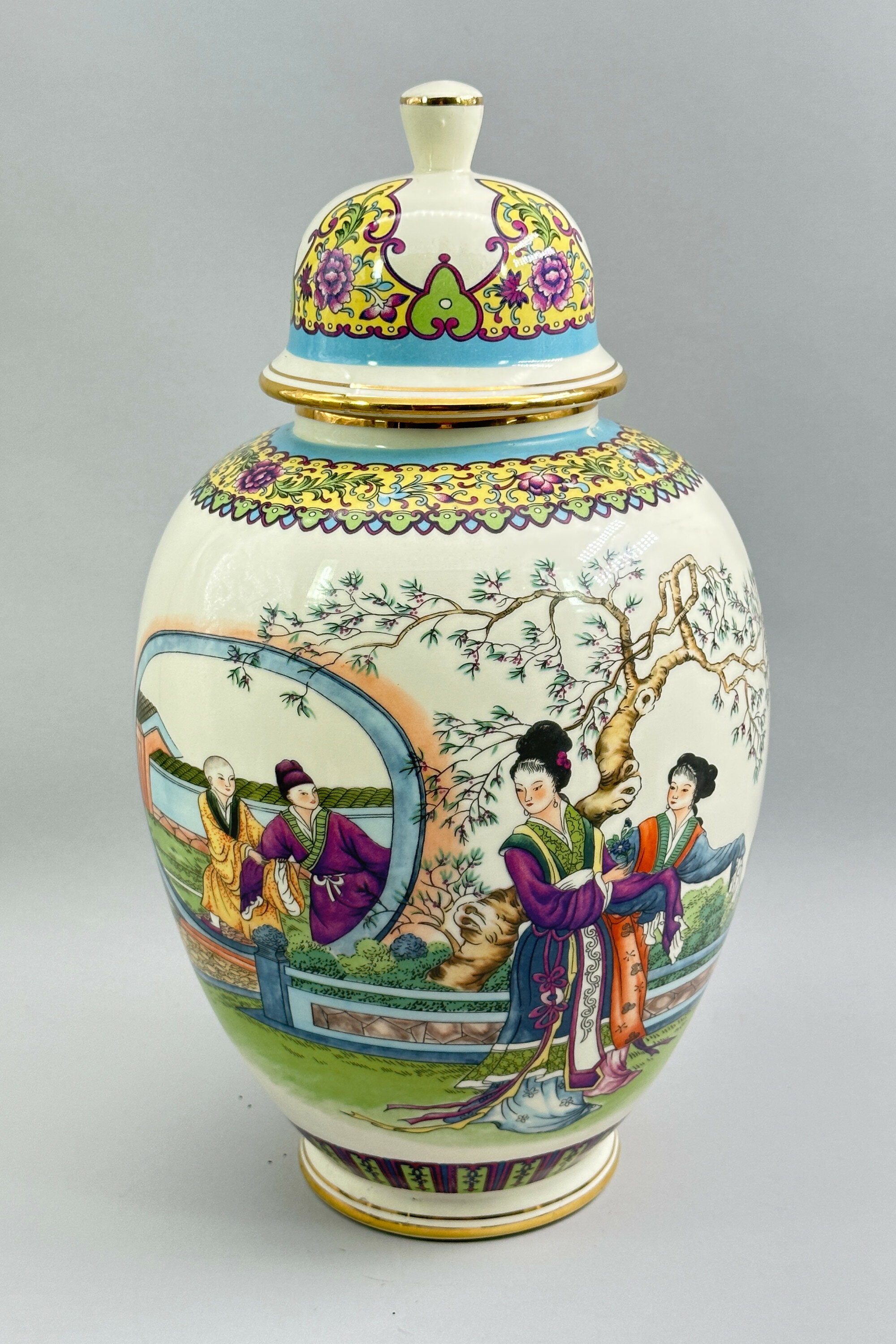
Chinese style Vase and Cover decorated with ladies and courtiers in a garden scene, C20th
Price: £55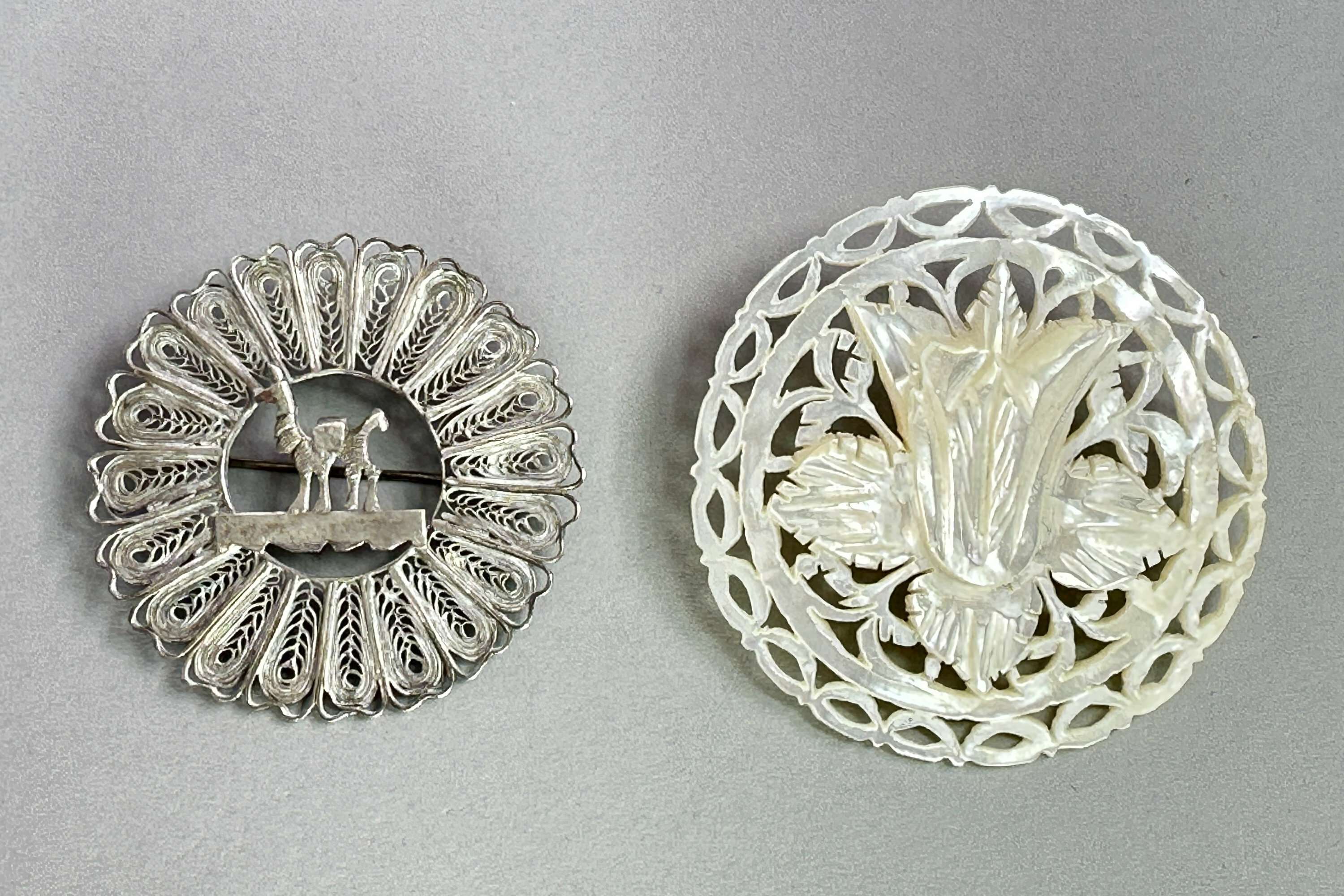
Two brooches - Jerusalem Mother of Pearl and Egyptian Silver, 1950s
Price: £15PLEASE NOTE THAT THERE IS FREE UK SHIPPING ON THIS ITEM. For international buyers the shipping cost will be reduced by the UK shipping cost, so don't worry if you are outside the UK, you still receive this benefit!
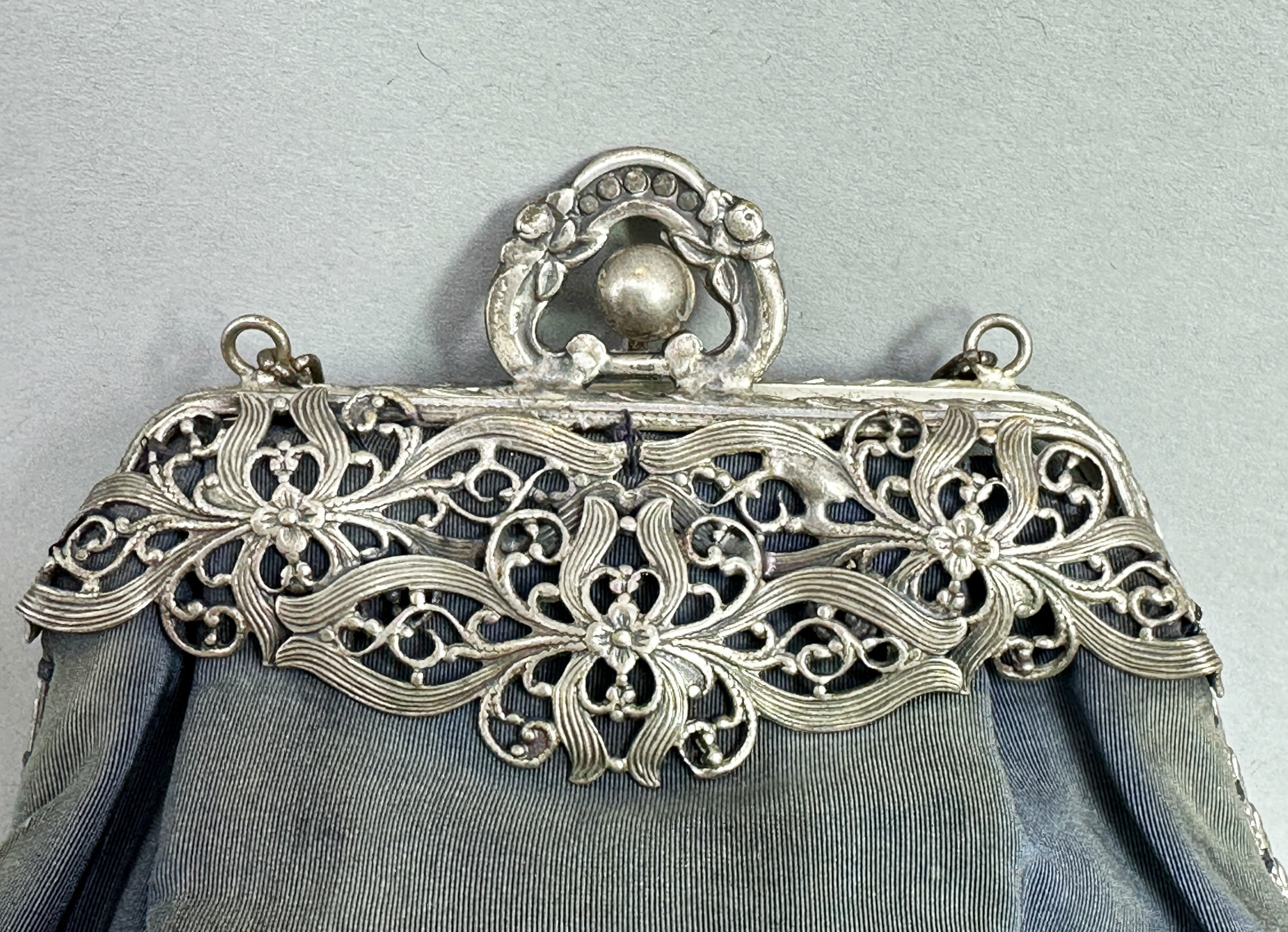
Victorian filigree style handbag c1900
Price: £25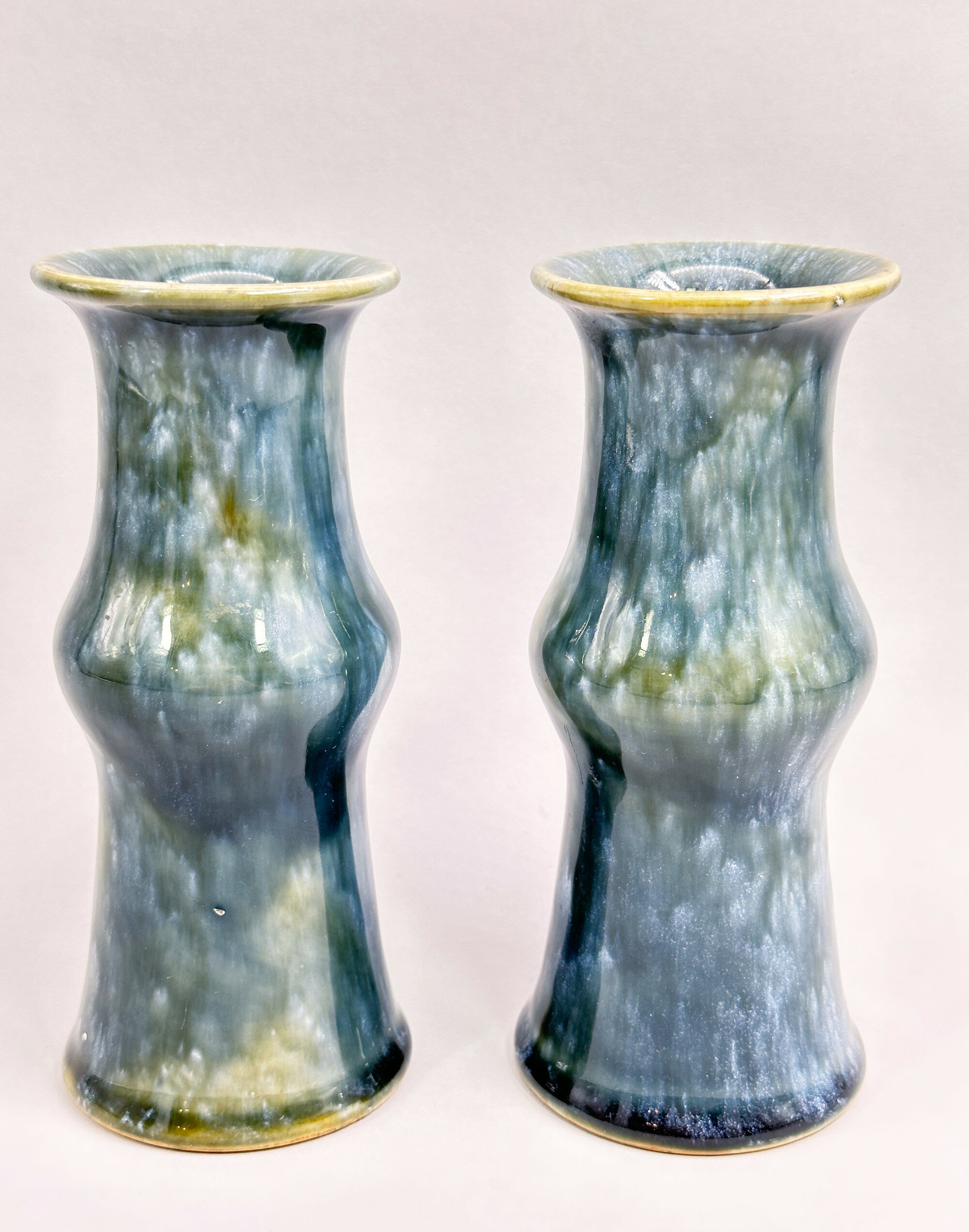
Pair of Royal Doulton slender Ku form Vases, 1920s
Price: £75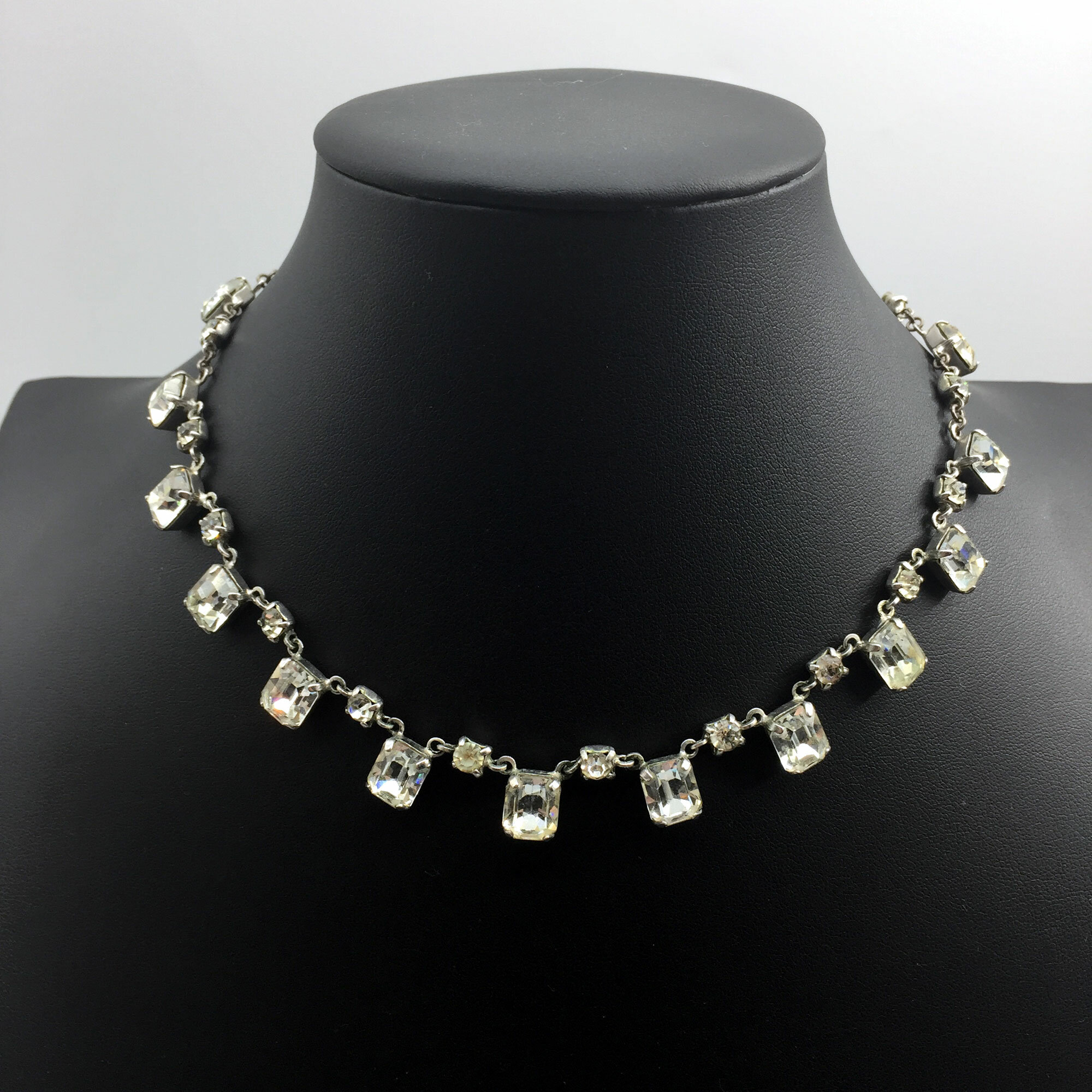
Stunning 1950s paste necklace
Price: £25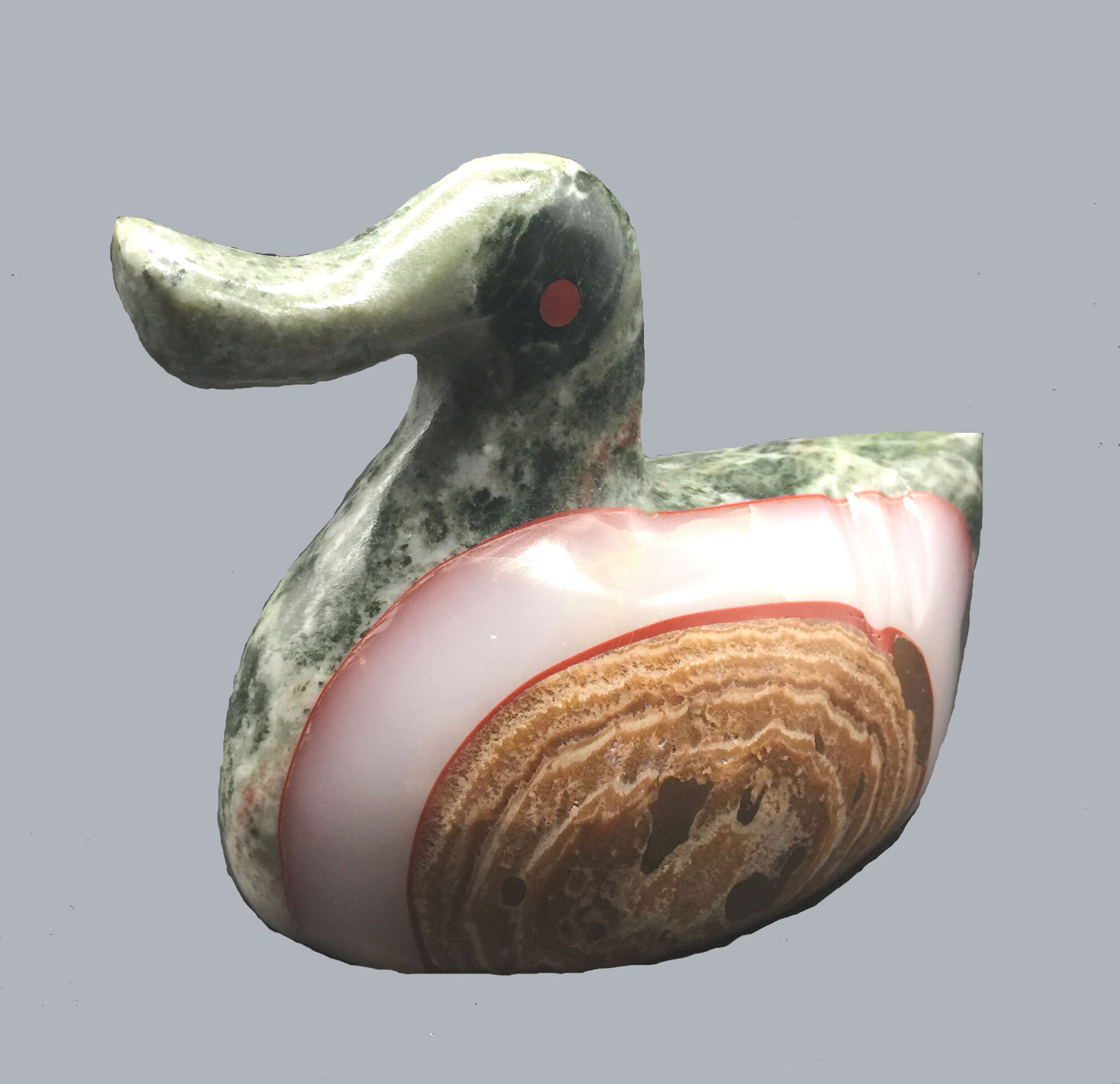
Italian marble and alabaster decorative figure of a mallard Duck, C20th
Price: £55
Perfume Bottle and Stopper, Stuart Akroyd, signed J S A, late C20th
Price: £75The signature here, which occurs on other pieces by the same artist, is for Stuart Akroyd, a celebrated English glassmaker who worked from studios in Sunderland then Sheffield from 1991 to 2021(see image 8). Born in 1966, Akroyd studied at Sunderland University, following this with a Post Graduate Diploma at the International Glass Centre, Brierley Hill. After working as the head maker at Lakeland Crystal, Cumbria he went on to establish his own business, Stuart Akroyd Glass Designs, in 1991, renaming it Stuart Akroyd Contemporary Glass when he moved from Sunderland to Sheffield in 2000. Best known for his sculptural pieces which were inspired by the ‘Skylon’ structure, the well known symbol of the 1951 Festival of Britain, Akroyd also worked on a smaller scale and there a number of small bottles by him of which this is an excellent example. The glass effects are skilful and inventive and the flat panel to the body is both decorative and functional, allowing the level of fluid in the bottle to be seen clearly. Many of his sculptural pieces were made in his later Sheffield workshop which, with its greater space, allowed him to employ the techniques necessary to create them, so it is a reasonable guess that this bottle and its companions belong to the first phase of his output.

Octagonal Agate Mortar Bowl, C20th
Price: £25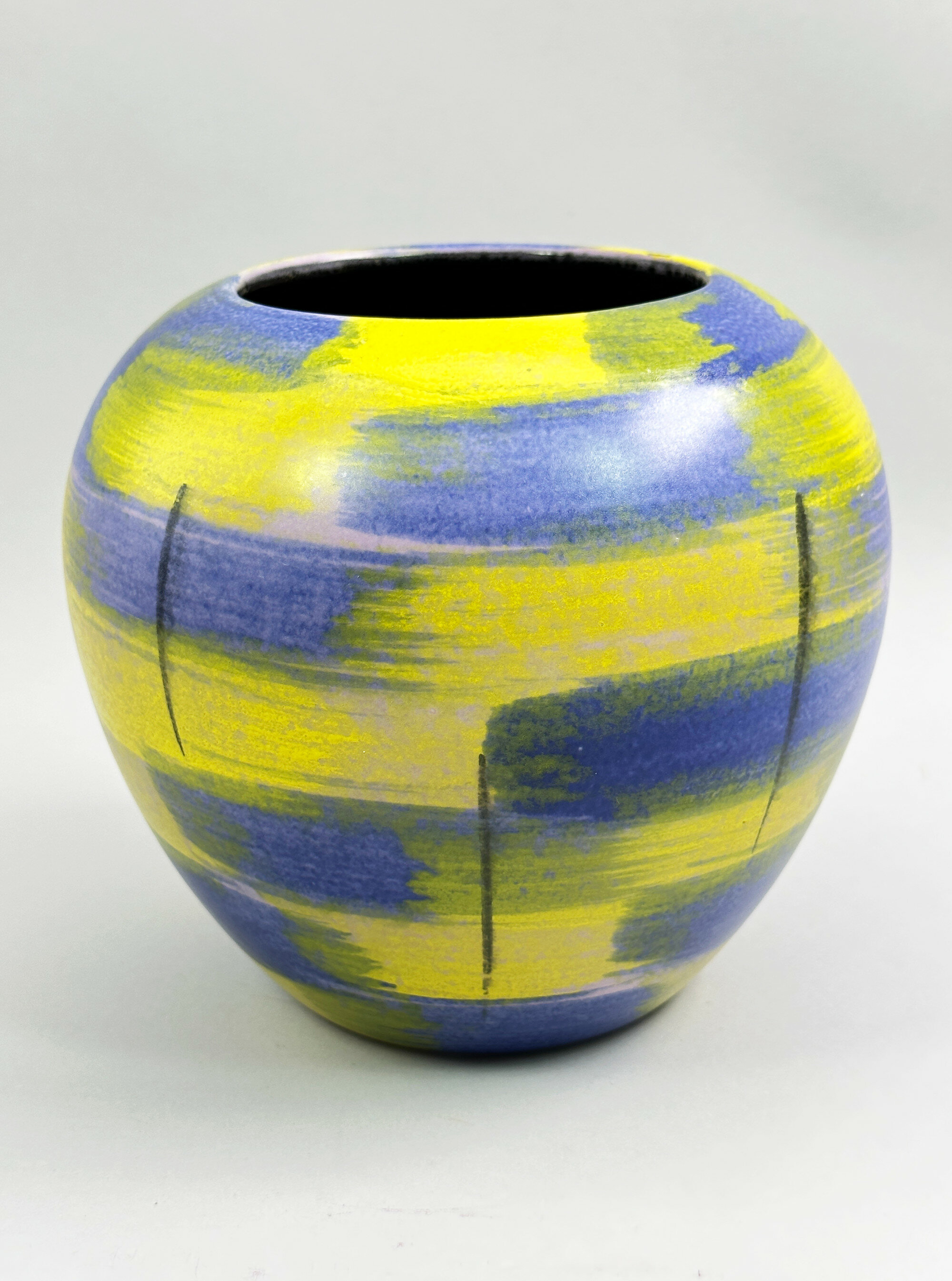
East German Ceramic Vase, VEB Haldensleben, 1950s
Price: £35The factory mark, a shallow dish superimposed over the letter 'H' inside a circle, is that of the East German pottery VEB Haldensleben. VEB stands for 'Volkseigener Betrieb', meaning a people-owned enterprise and used in relationship to the state owned workplaces in the GDR. Haldensleben is a town in Saxony-Anhalt, Germany and a ceramics factory was created there in 1945 with the nationalization of the Carstens Uffrecht plant that followed the division of Germany at the end of WWII. Halsdenleben focused primarily on the manufacture of vases. Its output tended to be of superior quality and employed more restrained glazes than those used by its West German counterparts. Upon the reunifucation of Germany in 1990, the factory was returned to its original owners, the Carstens family. The pattern number here is found on other pieces with the same shape but the abstract decoration used is quite individual and evocative of 1950s and early 1960s designs.
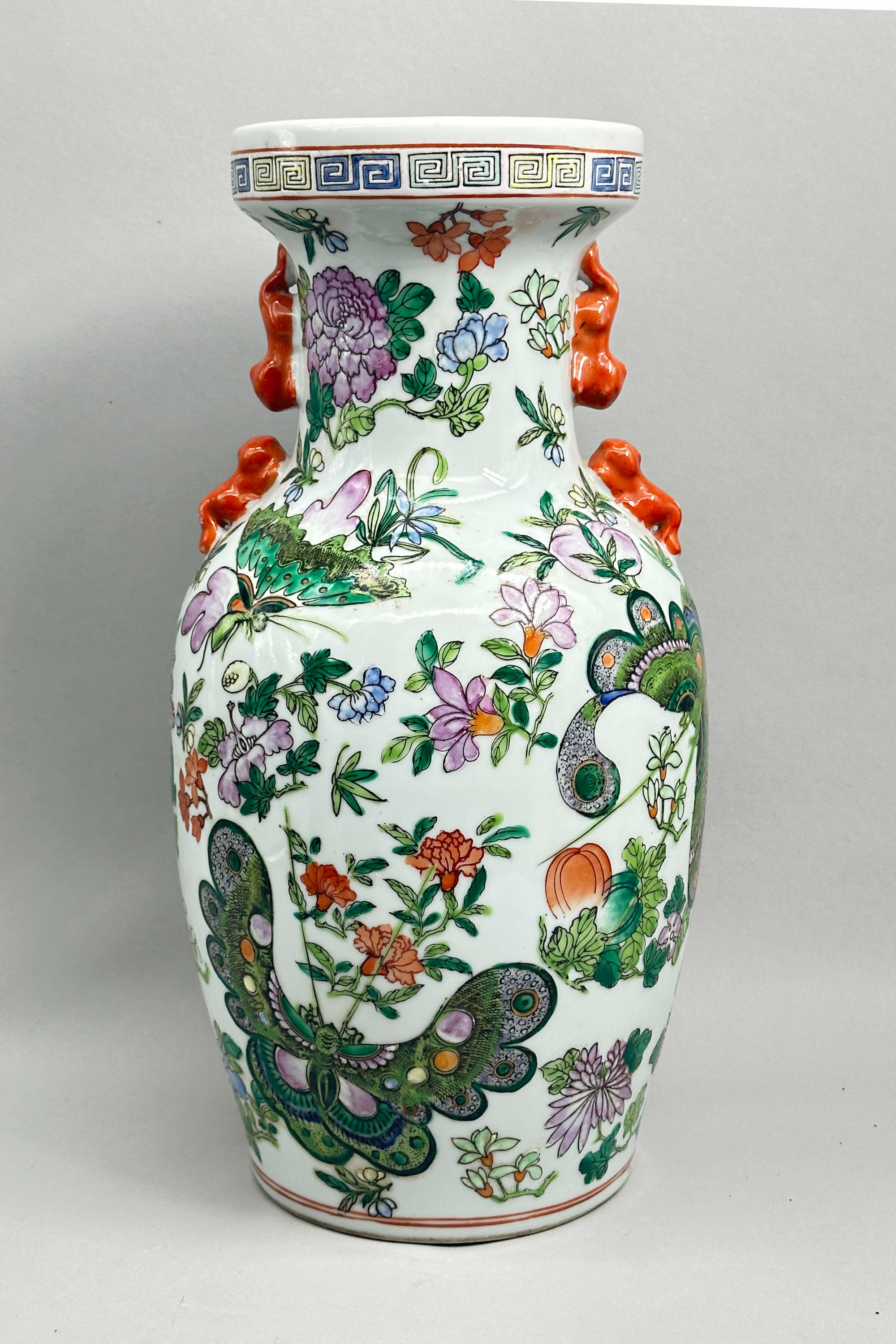
Chinese Cantonese style Vase decorated butterflies, late C20th
Price: £150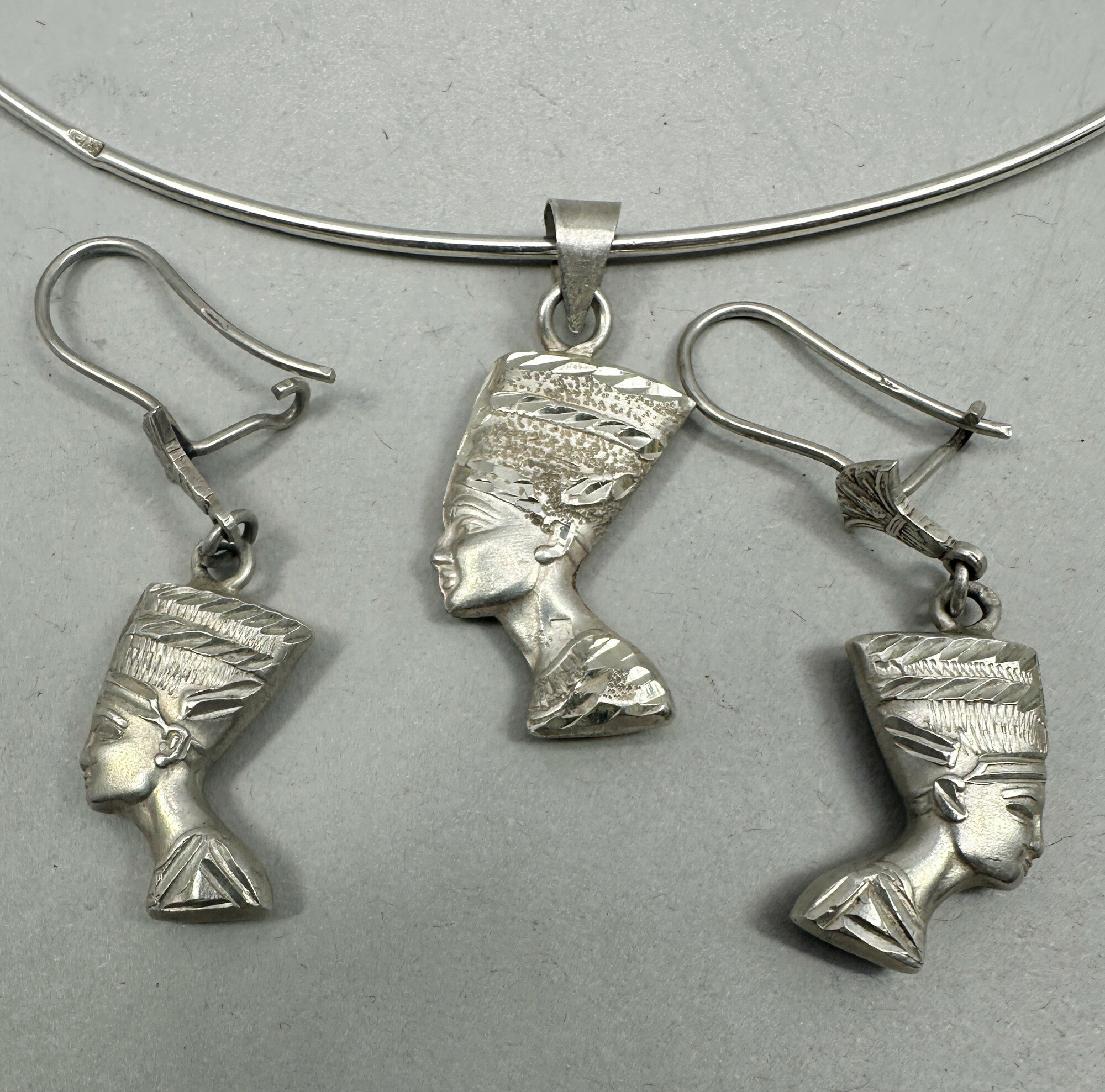
Nefertiti suite of pendant necklace and earrings, 20th century
Price: £50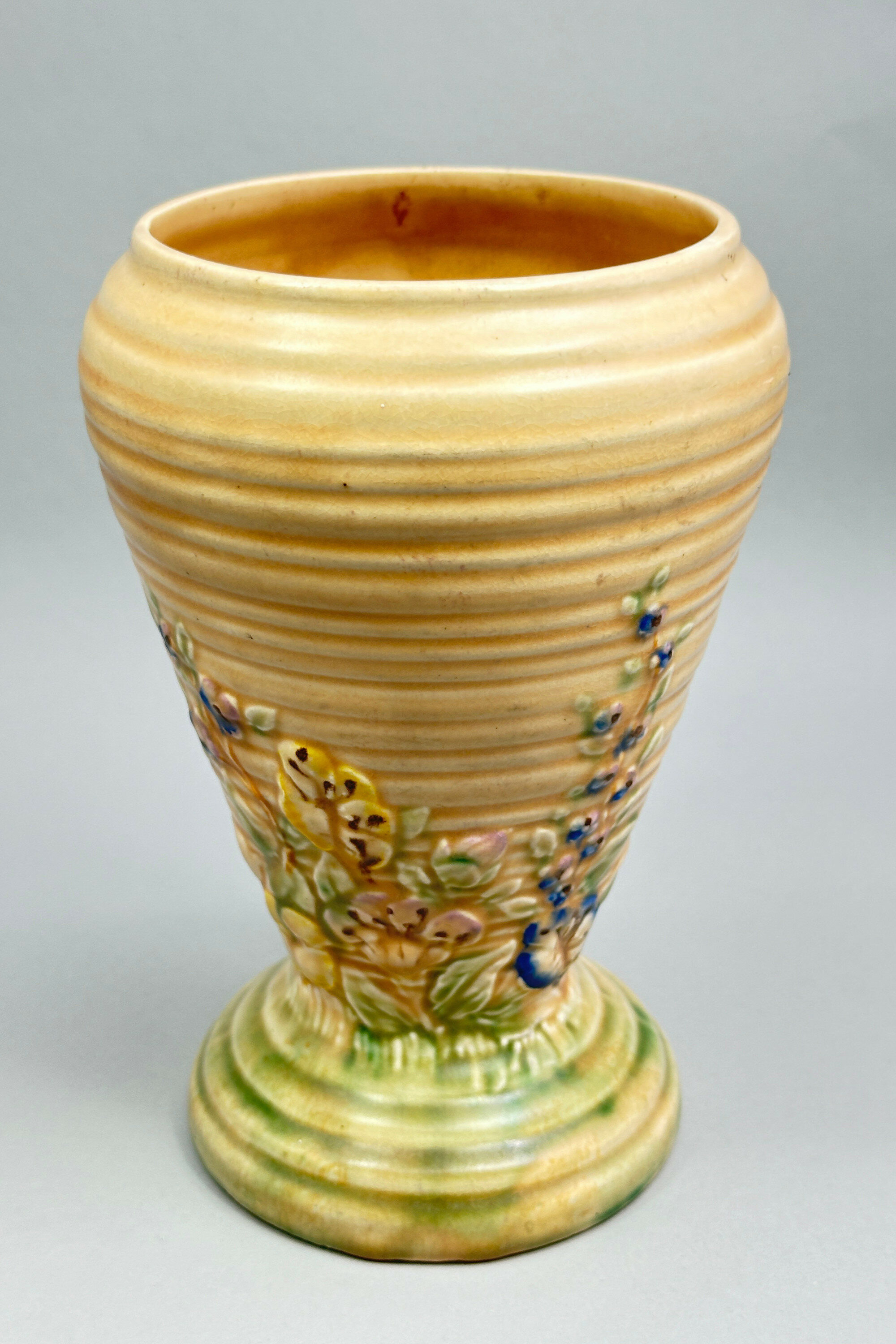
Art Deco Vase, Springtime, Price Brothers, Staffordshire, 1930s
Price: £35Price Bros was an earthenware manufacturer established at the Crown Works, Burslem, Staffordshire, England, in 1896 by the Price brothers. They specialised in tabletop accessories and teapots and success was rapid such that in 1934 they moved to larger premises at the Top Bridge Works in Longport, where they became known as Price Bros Ltd. A close association with another firm, Kensington Potteries, was finally cemented when the two firms merged in 1962 taking on the name ‘Price and Kensington’ and continuing to manufacture their popular wares to the present day. This vase is typical of the decorative pieces which Price Bros produced during the 1930s and, as with so much of the pottery produced at that time, it reflects the Art Deco styles, particularly in the semi abstract shape. This vase was mould made as can be seen from the joins at each side (see image 7) but there is nothing mechanical about the finished result with its pleasing combination of colour and decoration.
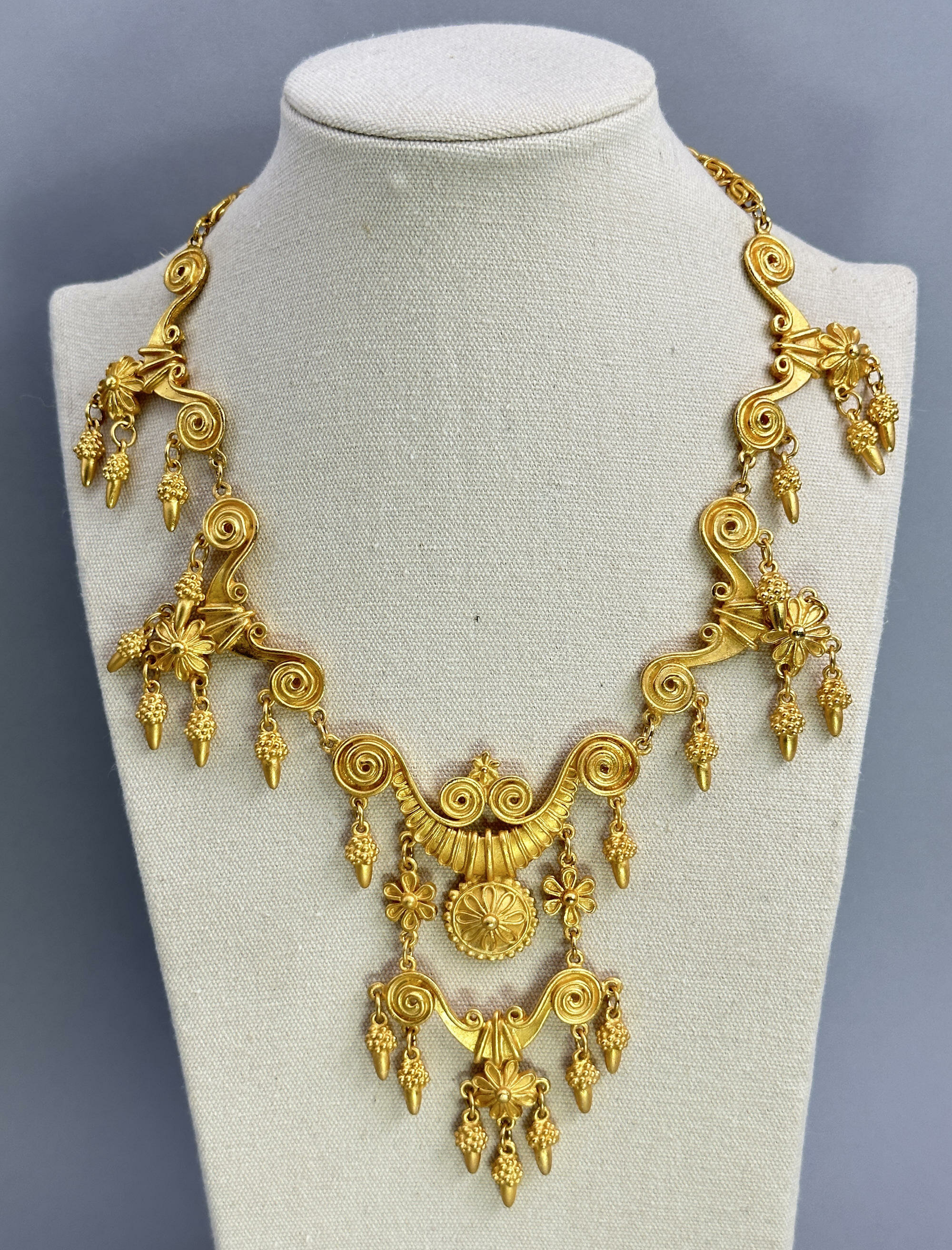
Estruscan style necklace in the manner of Lalaounis c1990
Price: £75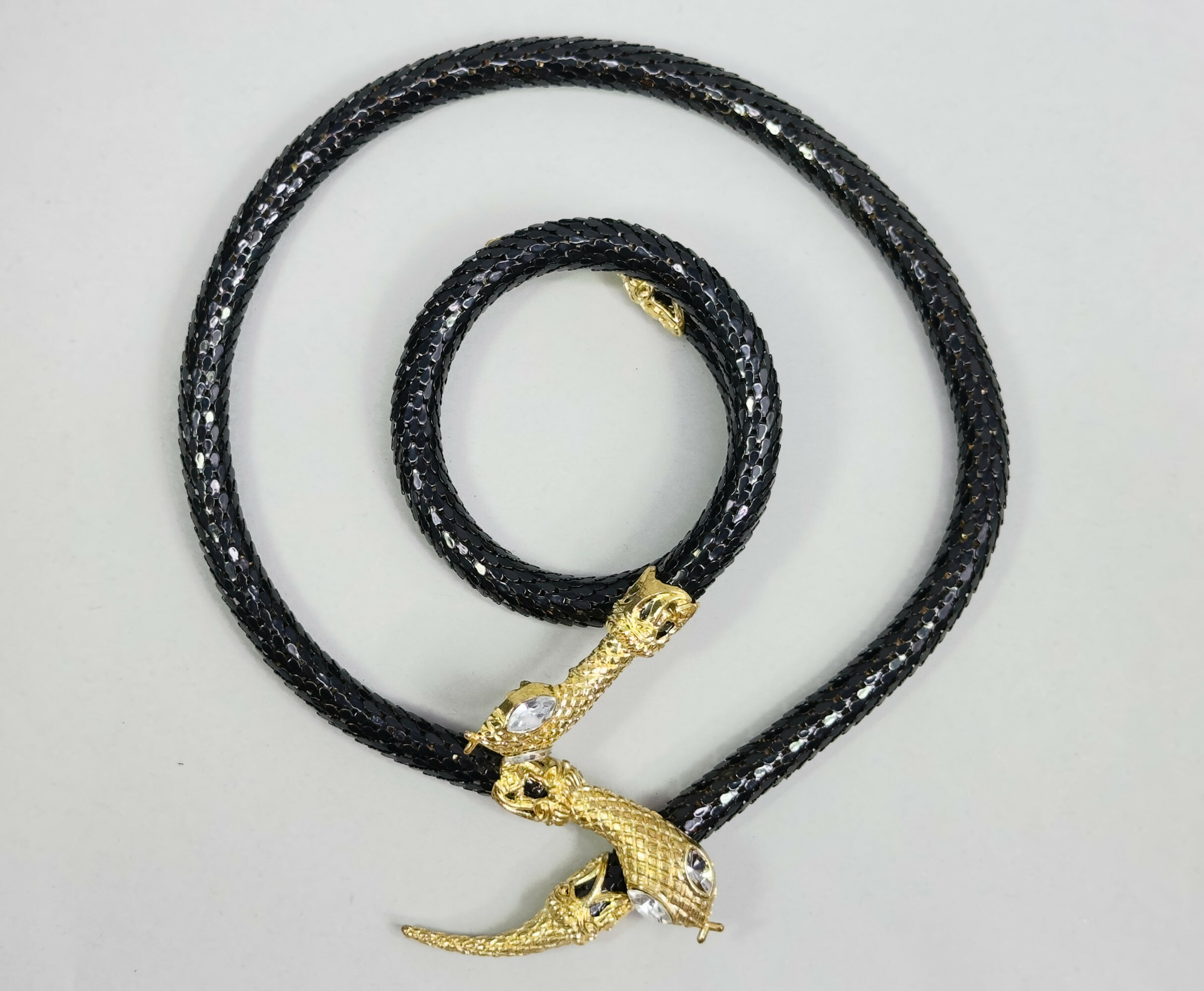
Egyptian Revival style snake motif bracelet and necklace 1980s
Price: £45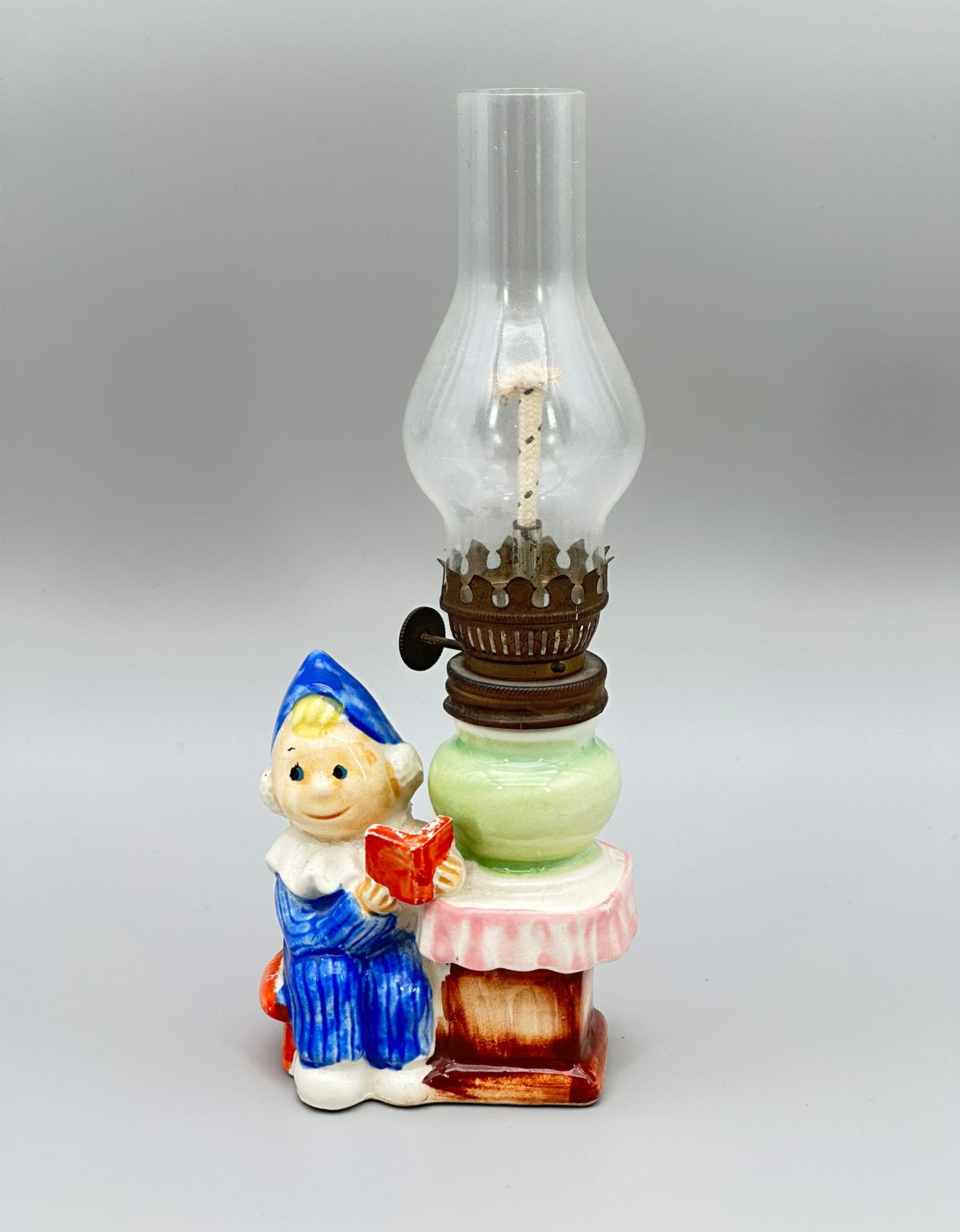
Andy Pandy Oil Lamp, German, Karl Meyer, 1950s
Price: £35TV linked merchandise was created even in the earliest days of the medium and this charming small ceramic oil lamp, hardly the safest accessory for the nursery, is an amusing example. Andy sits next to a table with an urn on the top which forms the base of the lamp. Oil or paraffin would have been contained inside and once lit the wick could be adjusted by turning the round flat knob on the side. This has the trademark symbol for the German toy manufacturers Karl Meyer (see image 7). The base is marked ‘FOREIGN’ which was a common requirement for items imported into the UK after the second World War and allowed the makers to conceal their country of origin, which might have been useful to some of them at the time. A true piece of nostagia whether the figure represented is familiar or not.
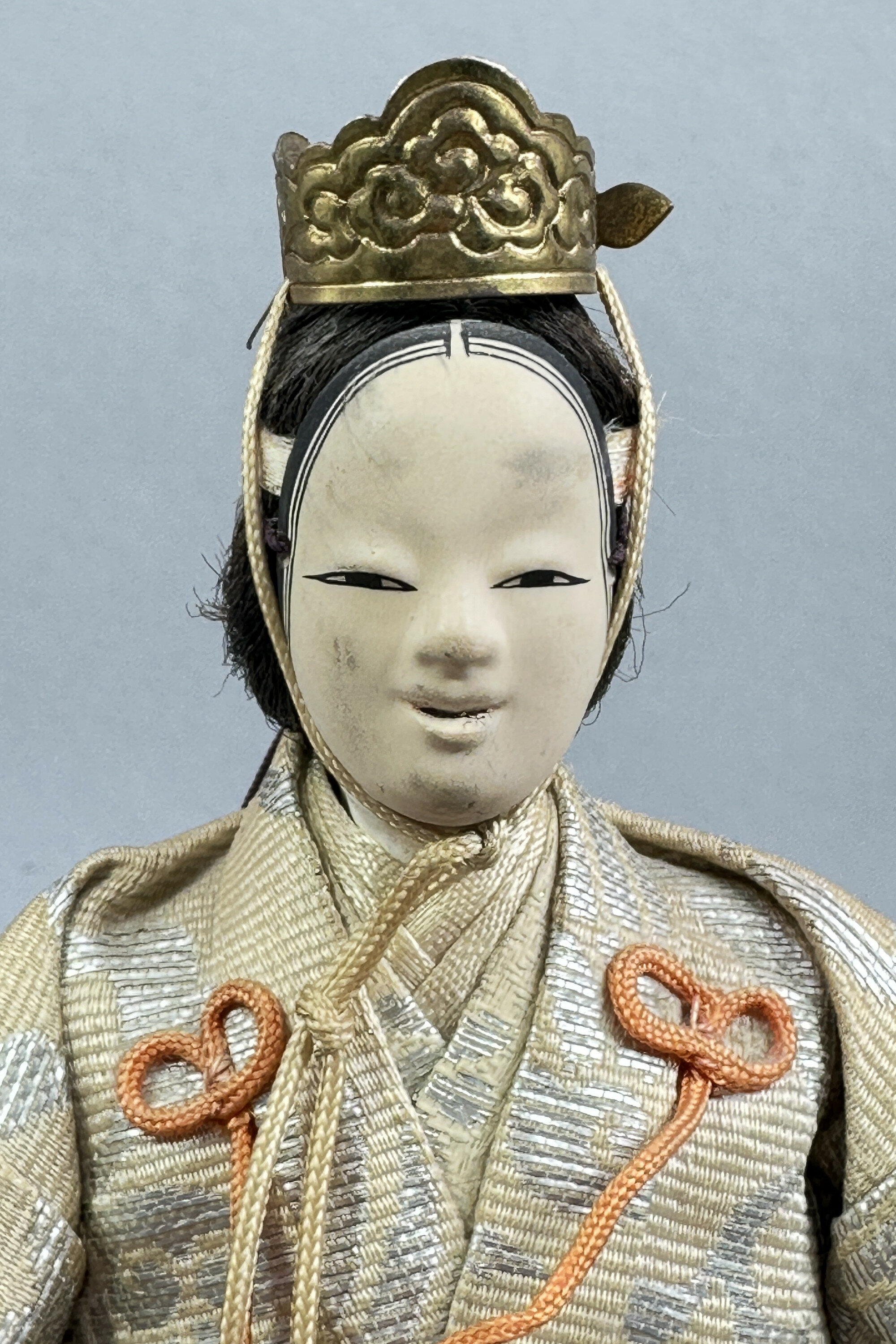
Japanese Noh Figure Doll of a Lady, Showa Period (1926-1989)
Price: £55Dolls such as these were made for display, sometimes at the special ‘Doll’s Day’ or ‘Girls Day’ festival held annually on the third of March and termed ‘Hinamatsuri’. The elaborate dress is sometimes known as ‘Hagoromo’ (‘feathered’) and the mask with its fixed expression derives from the well known ‘Noh theatre’, a major form of Japanese musical drama created in the fourteenth century which combines dance, music and song and is still performed today. The actors are all male and play the female roles wearing a lady’s mask.
The craftsmanship of this piece is self evident and it was most likely made in the second half of the C20th. It can stand equally well on its own or as part of a wider collection and would be a desirable acquisition either way.
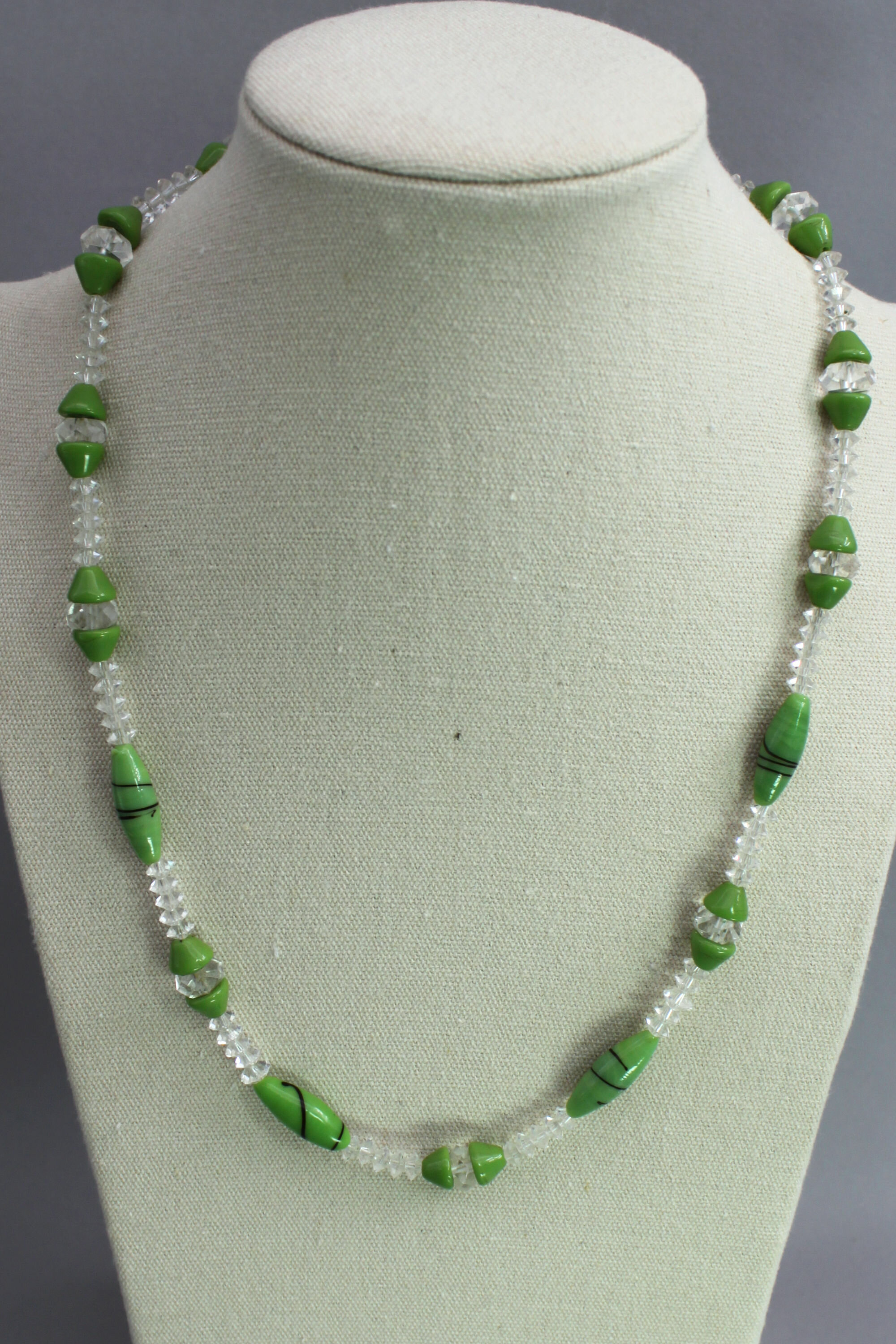
Art Deco glass bead necklace
Price: £20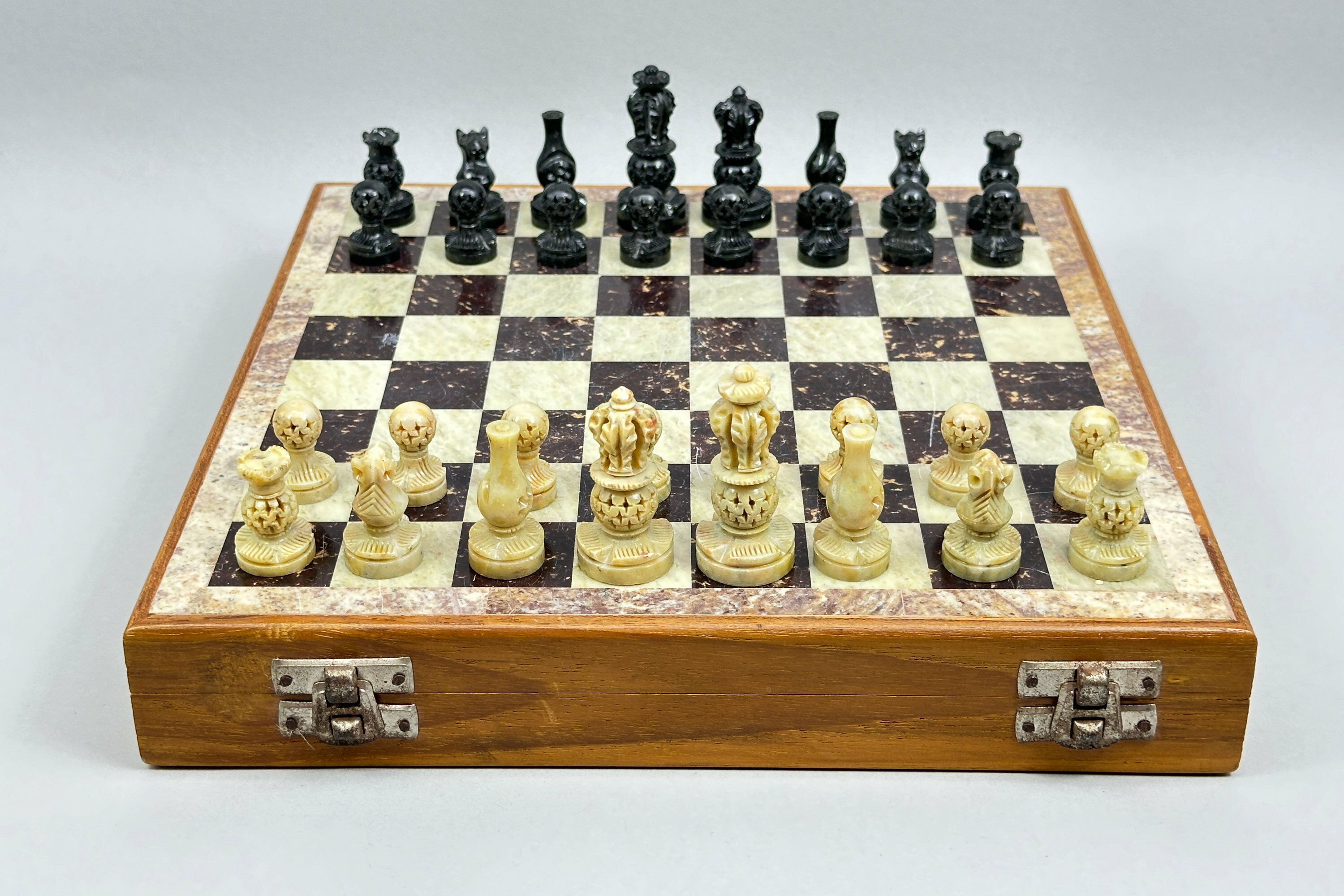
Art Deco onyx Chess Set with board and fitted box, 1930s
Price: £110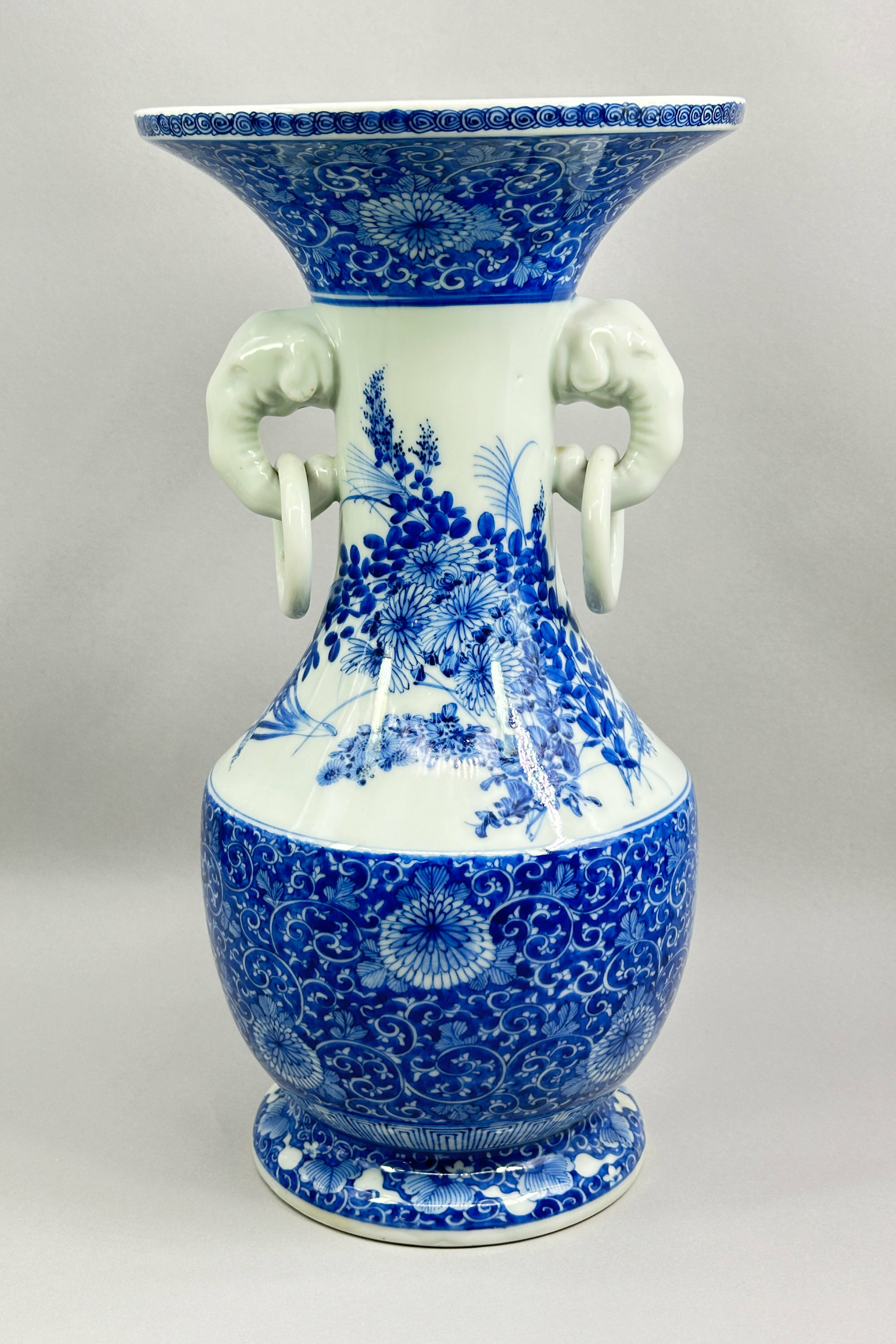
Japanese Seto Ware Blue and White Vase, late C19th
Price: £450A fine quality Japanese porcelain vase, the ovoid body with a curved flaring foot and rising to a tall concave neck with a well defined shoulder, applied elephant and ring handles to the sides and a galleried rim, decorated in bright underglaze blue with two bands of stylised flowering chrysanthemum at the top and bottom between a continuous scene of flowering peony and chrysanthemum, the top rim with repeating whorl design on the exterior and stylised leaf design inside, the stepped base glazed white.
The kilns at Seto in the Aichi prefecture of Japan and situated close to Nagoya form one of the traditional ‘Nihon Rokkoyo’, the six old kilns of medieval Japan. The location of Seto was ideal for the production of ceramics with an abundance nearby of both porcelain clay and forests to provide firewood for the kilns. Production began as early as the Heian period (794-1185) and continued without a break thereafter, the earlier pieces being more pottery forms copying Chinese wares. It was in the early nineteenth century that the kilns turned to producing porcelains decorated in underglaze blue and white, a development initiated by the potter Tamikichi Kato who went to Arita to learn the techniques of its production there, returning to Seto in 1807. Production grew and developed and was directed towards the export market in the Meiji period (1868-1912) with Seto wares being displayed at the European and North American exhibitions and fairs. Their delicately painted designs of birds and flowers proved to be immensely popular and were, in their time, to influence Art Nouveau and Art Deco designs. Some of the forms produced were truly virtuoso creations including, besides vases, screens, jardinieres and even ceramic tables.
Signed pieces are known and besides Tamikichi Kato the distinguished potters included the Kichiemon brothers, Kato Chuji and Kawamoto Jihyoe, and Kawamoto Hansuke. But not all the best pieces carried an artist’s signature as this vase well demonstrates. Formed from fine quality clay, as can be seen from the foot rim (image 10), the complex shape with its spreading base, angled shoulder and galleried rim would have been difficult to create. The handles show remarkable skill with the rings somehow formed so as to hang loose (presumably some form of kiln waster technique was used). The detail and artistry of the painting speaks for itself. Note in particular the shading effects on the peony flowers. While not perhaps an exhibition piece, this vase is definitely of exhibition quality and would be a worthy addition to a collection of nineteenth century Japanese ceramic art.
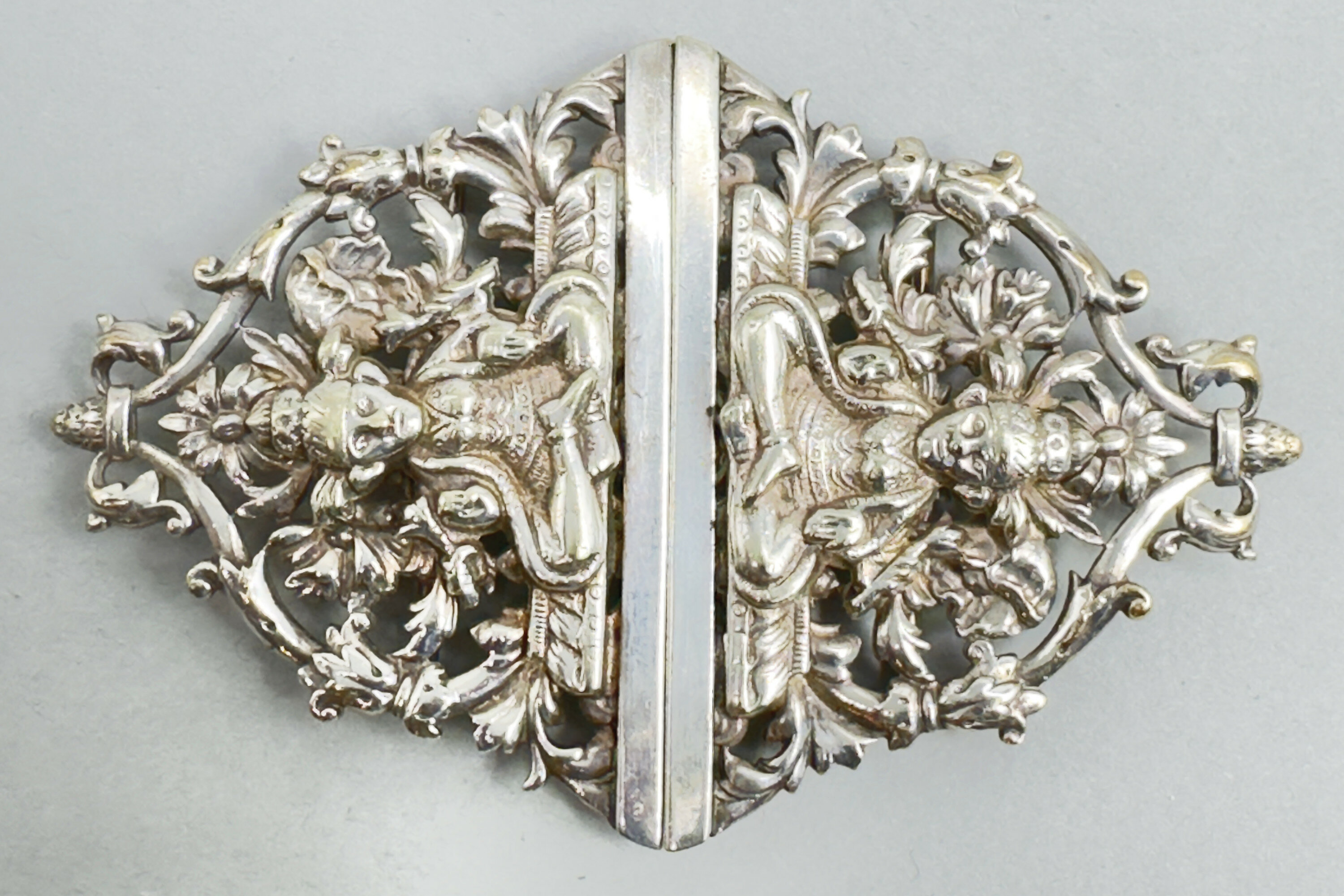
Indian silver buckle with Buddha figures, marked, 1920s
Price: £55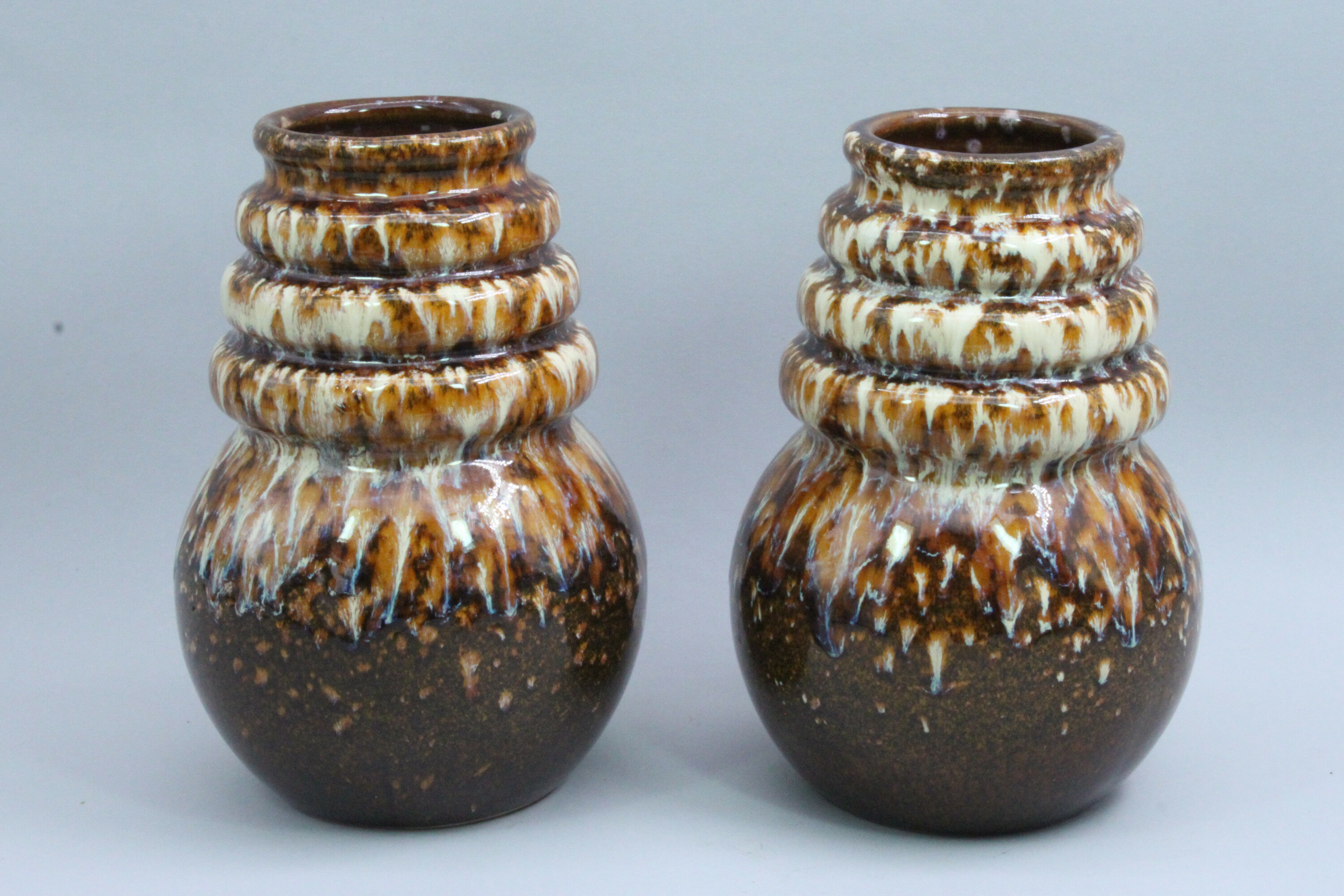
Pair of West German Scheurich Pottery ‘Wien’ Vases, model 269-18, mid 20th Century
Price: £45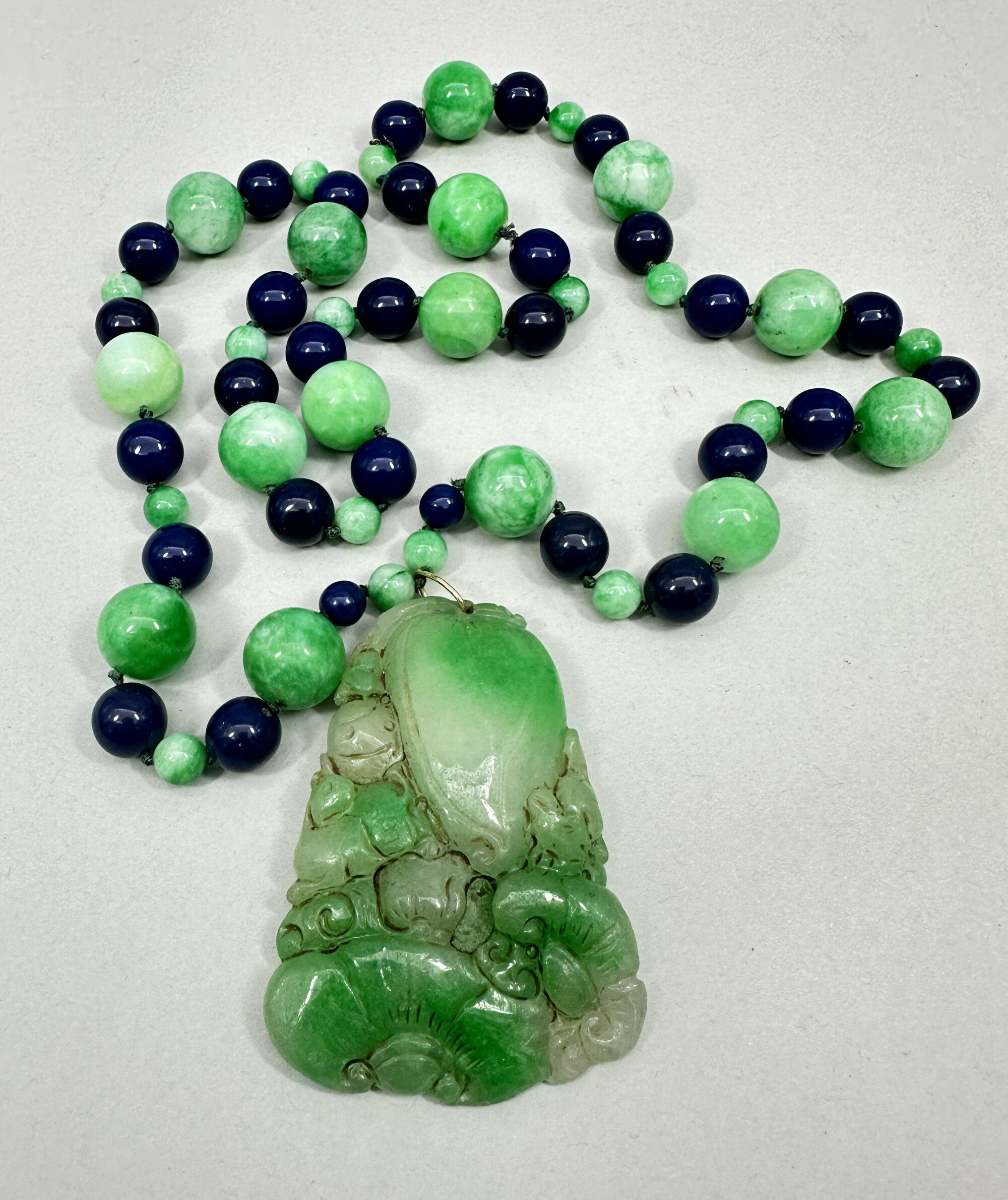
Beautiful long jade necklace with lapis lazuli and large carved jade pendant
Price: £950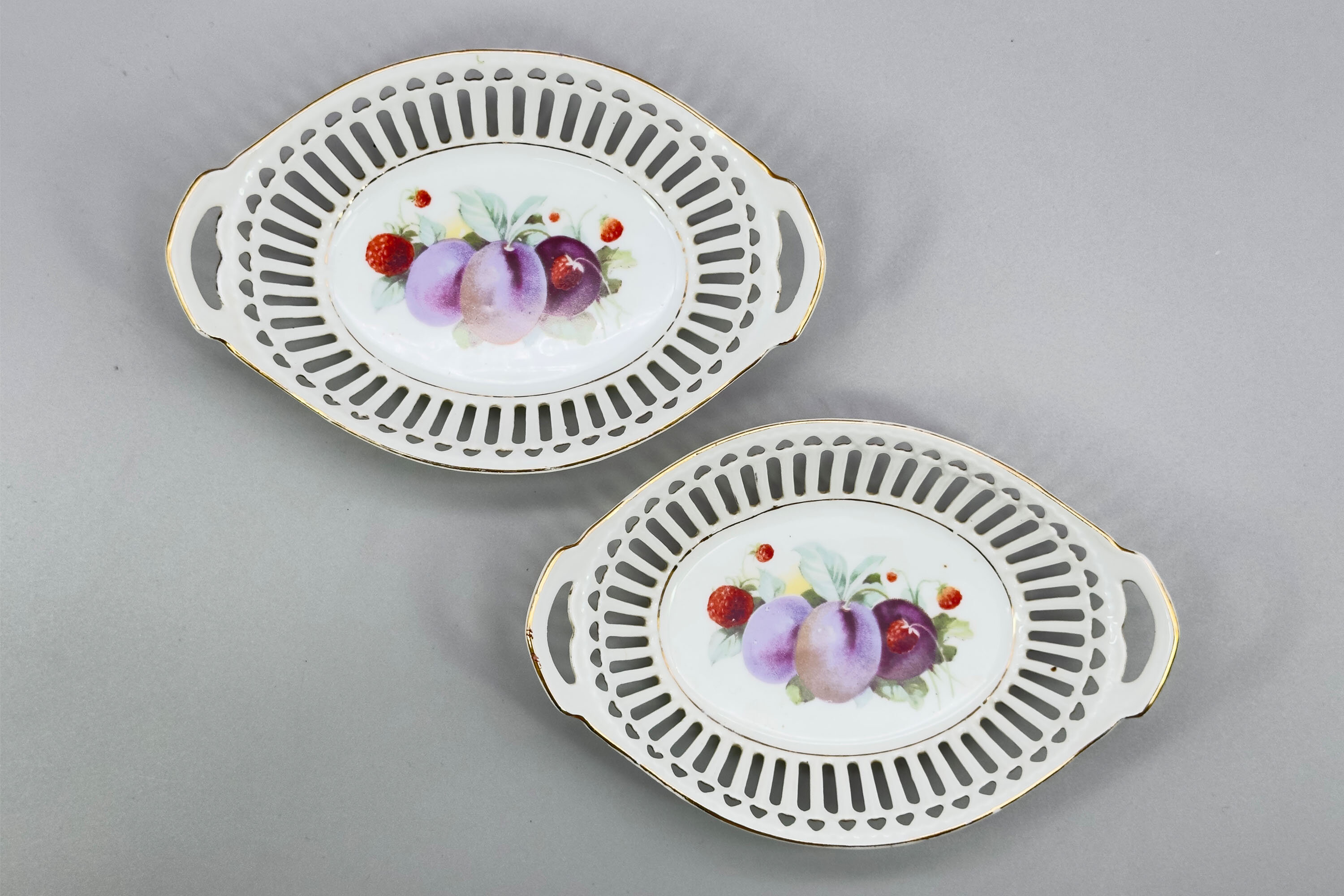
Pair of continental style openwork border Dishes, probably Chinese C20th
Price: £20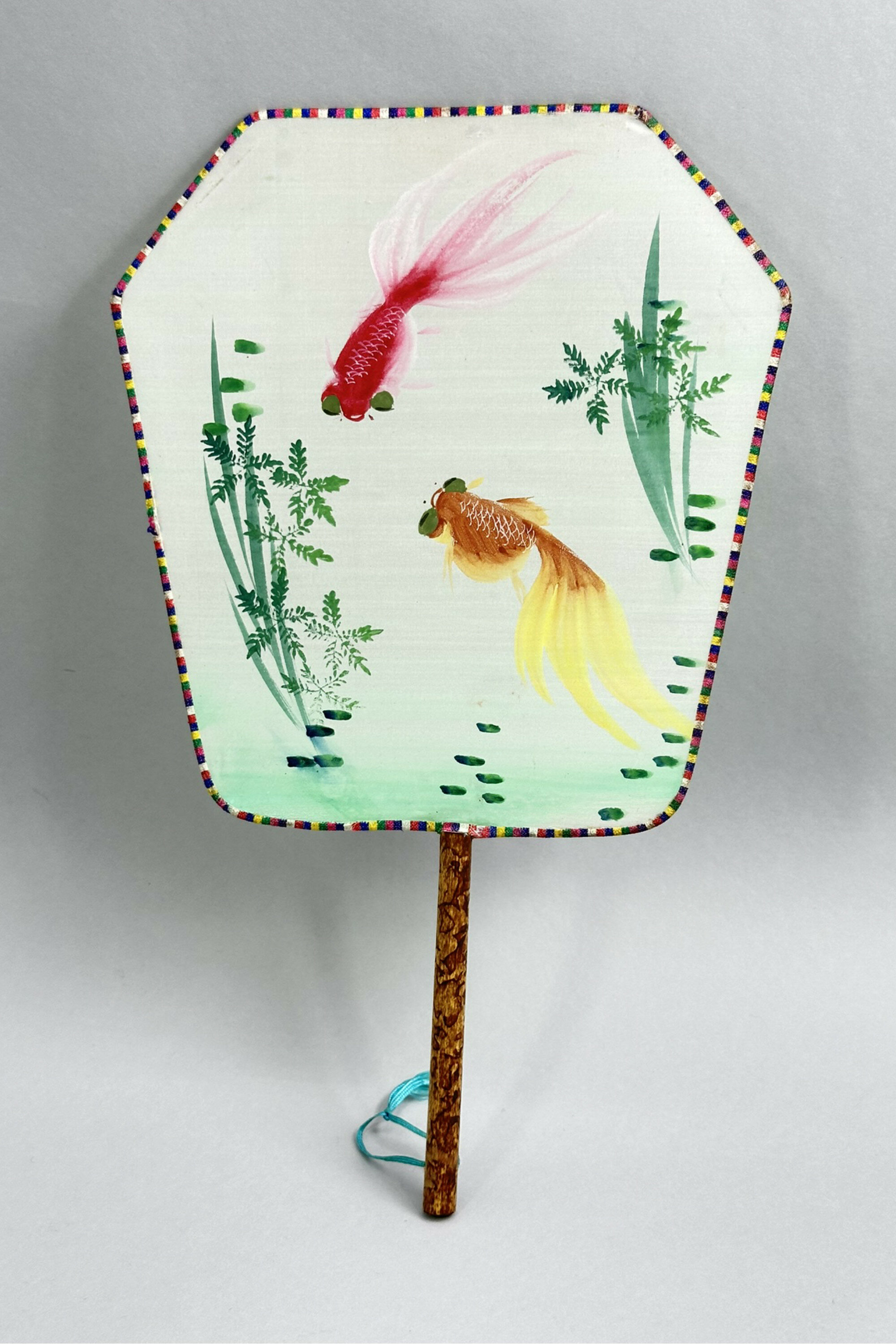
Chinese Fan, painting on silk, 1960s
Price: £15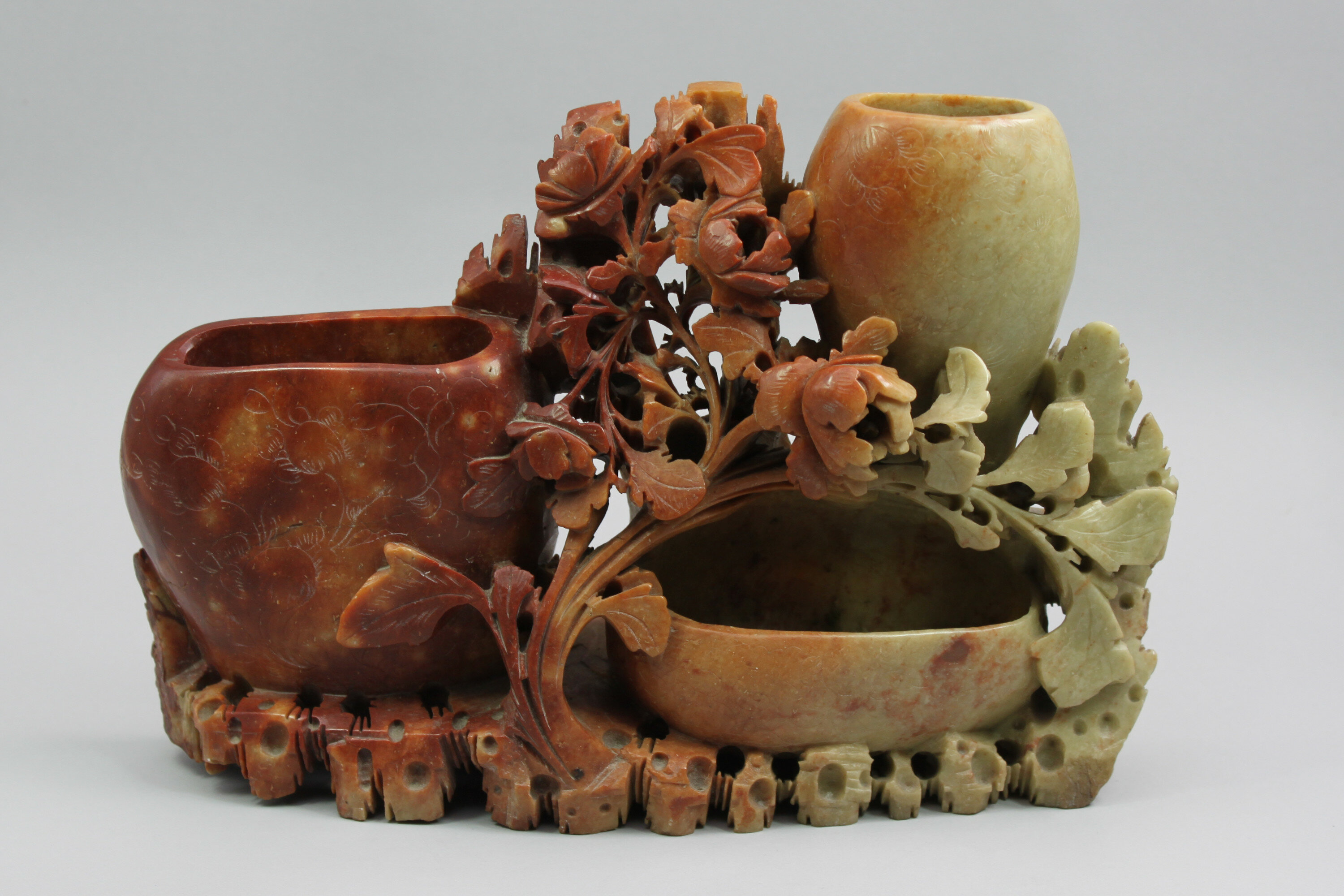
Chinese Soapstone Brushwasher decorated with flowering Lotus, early 20th Century
Price: £45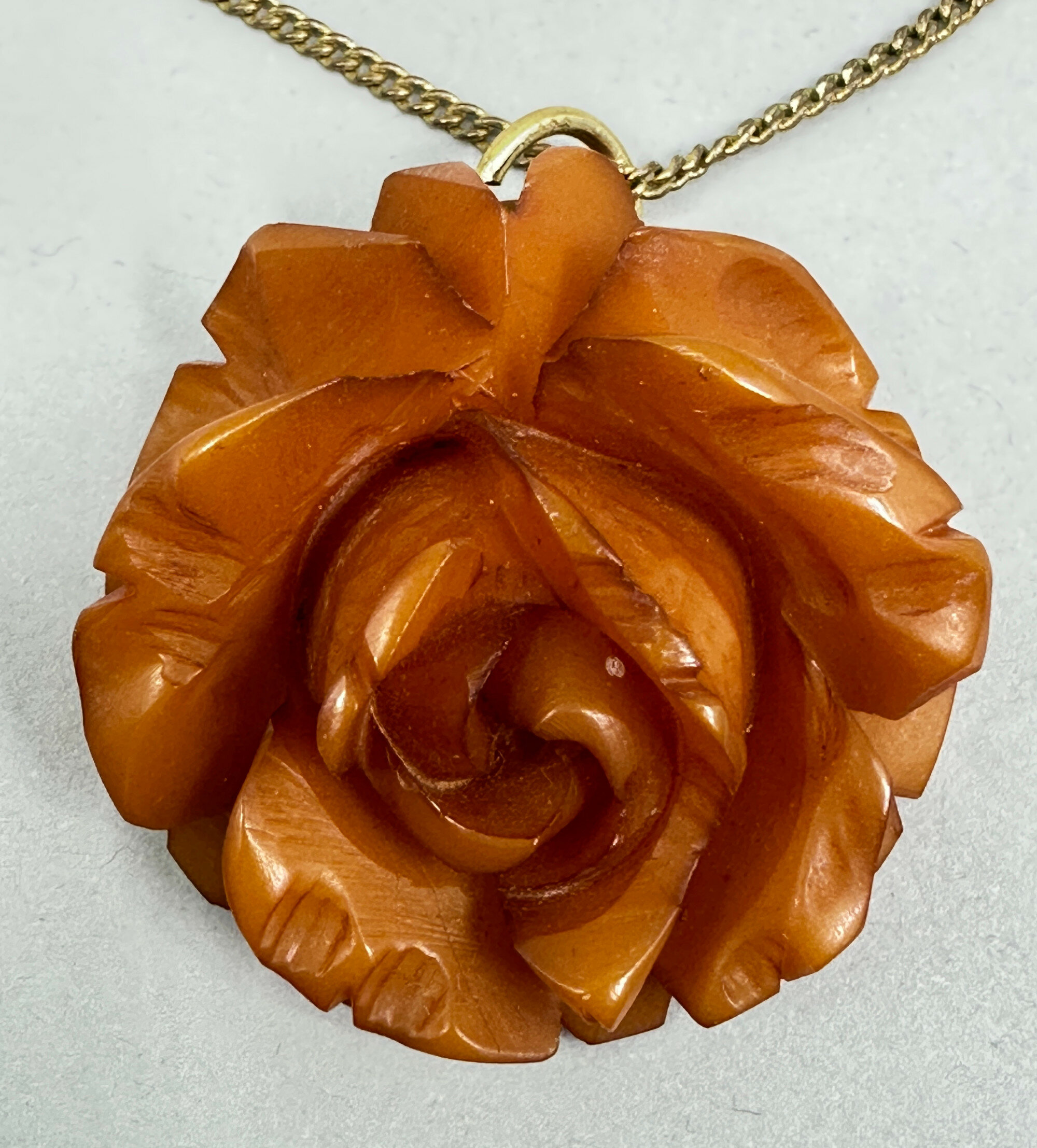
Attractive carved Orange Bakelite Bloom Pendant on modern gold tone chain, British 1930s
Price: £15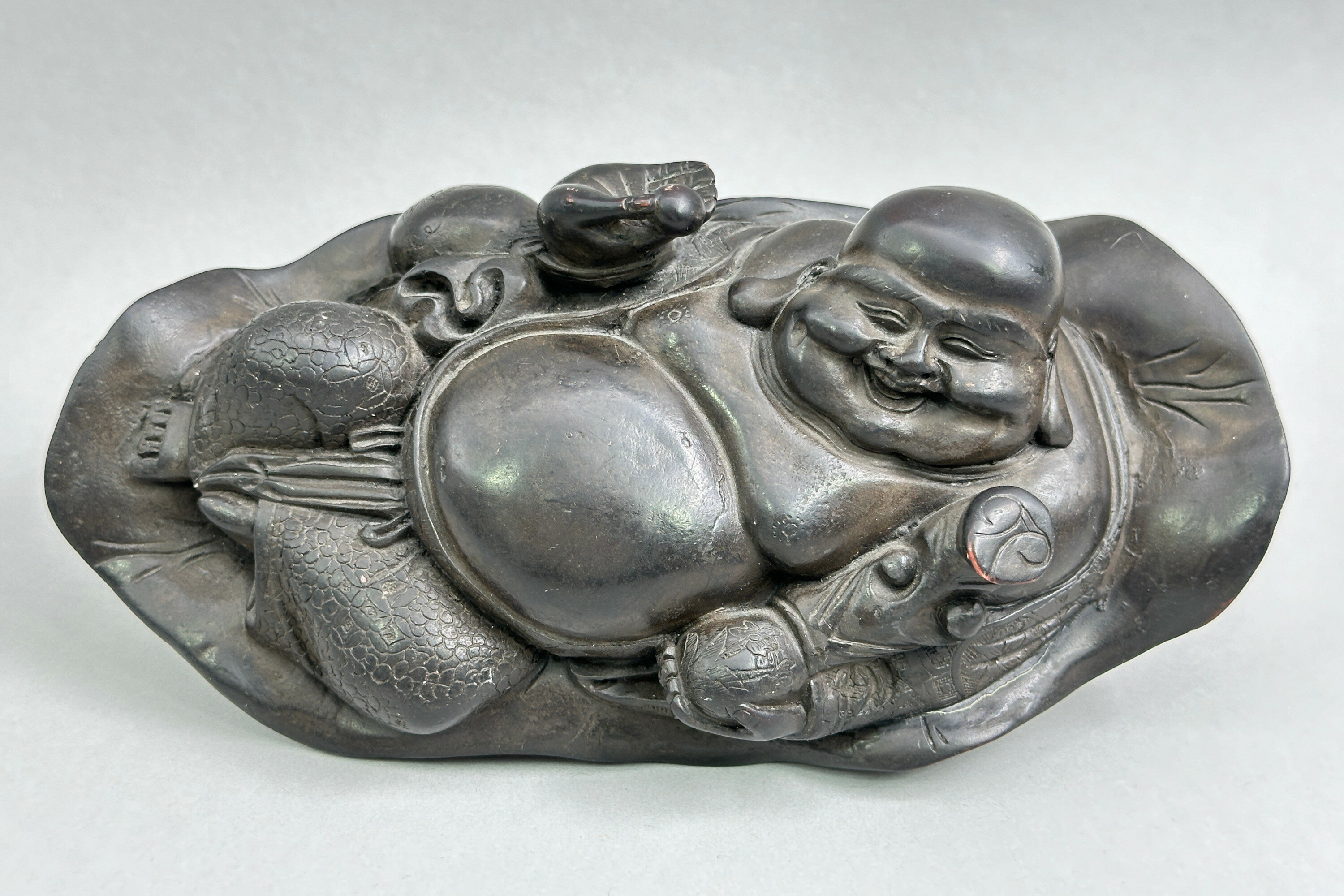
A Chinese Carved Wood Figure of Budai, signed, C 19th
Price: £75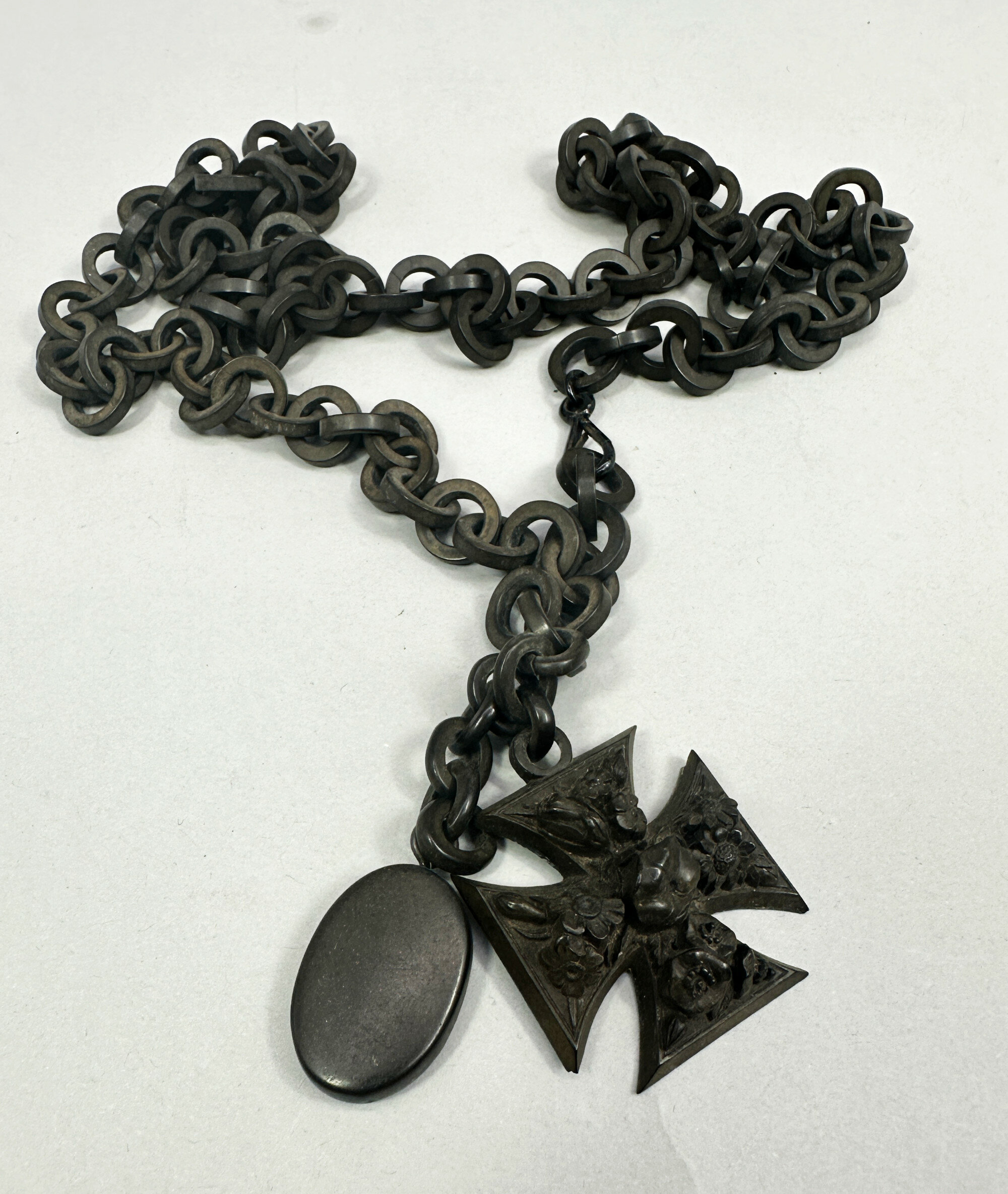
Vulcanite long necklace with Maltese cross and fob c1880
Price: £195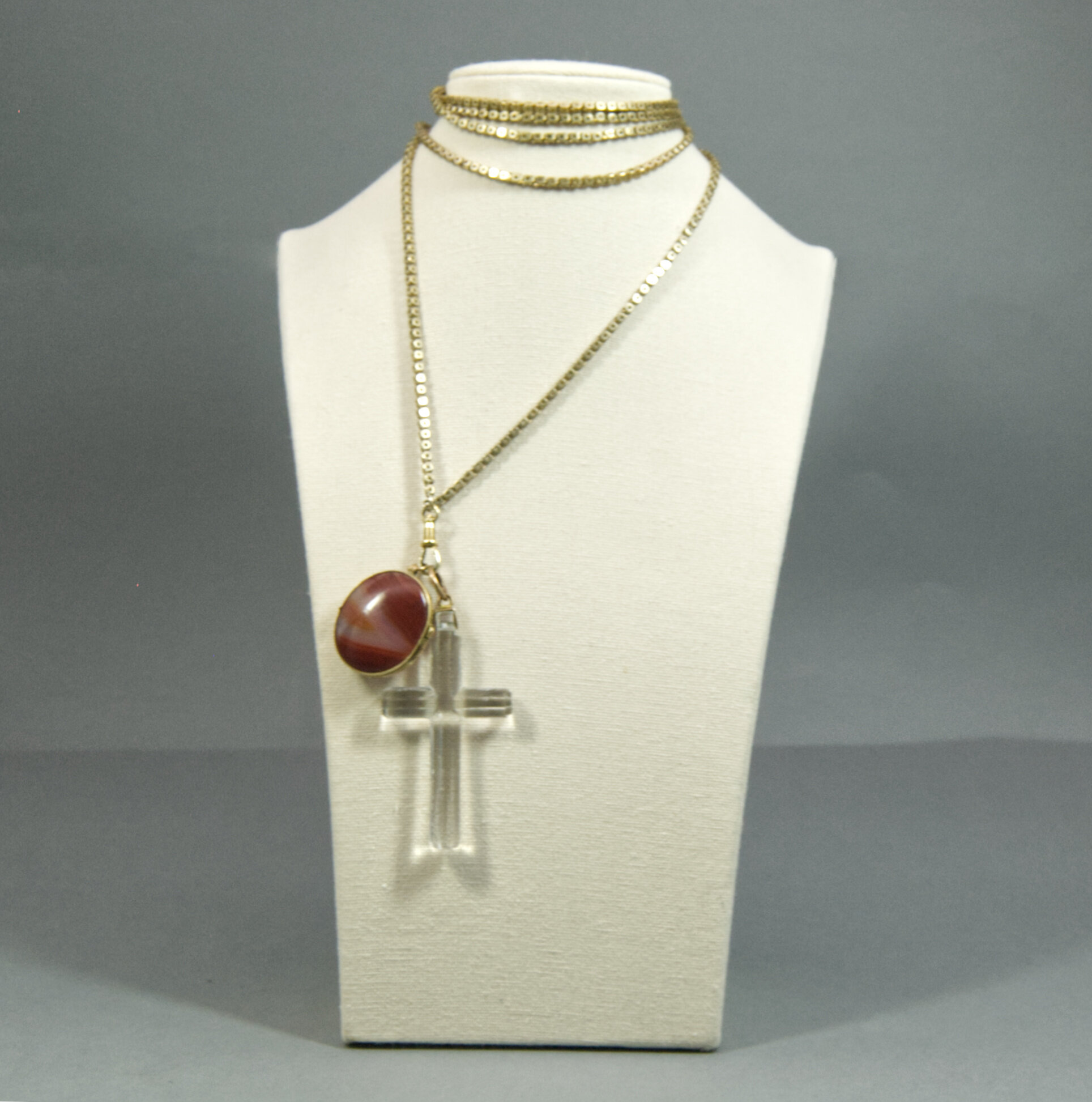
Long Art Deco pinchbeck watch chain with two pendants
Price: £65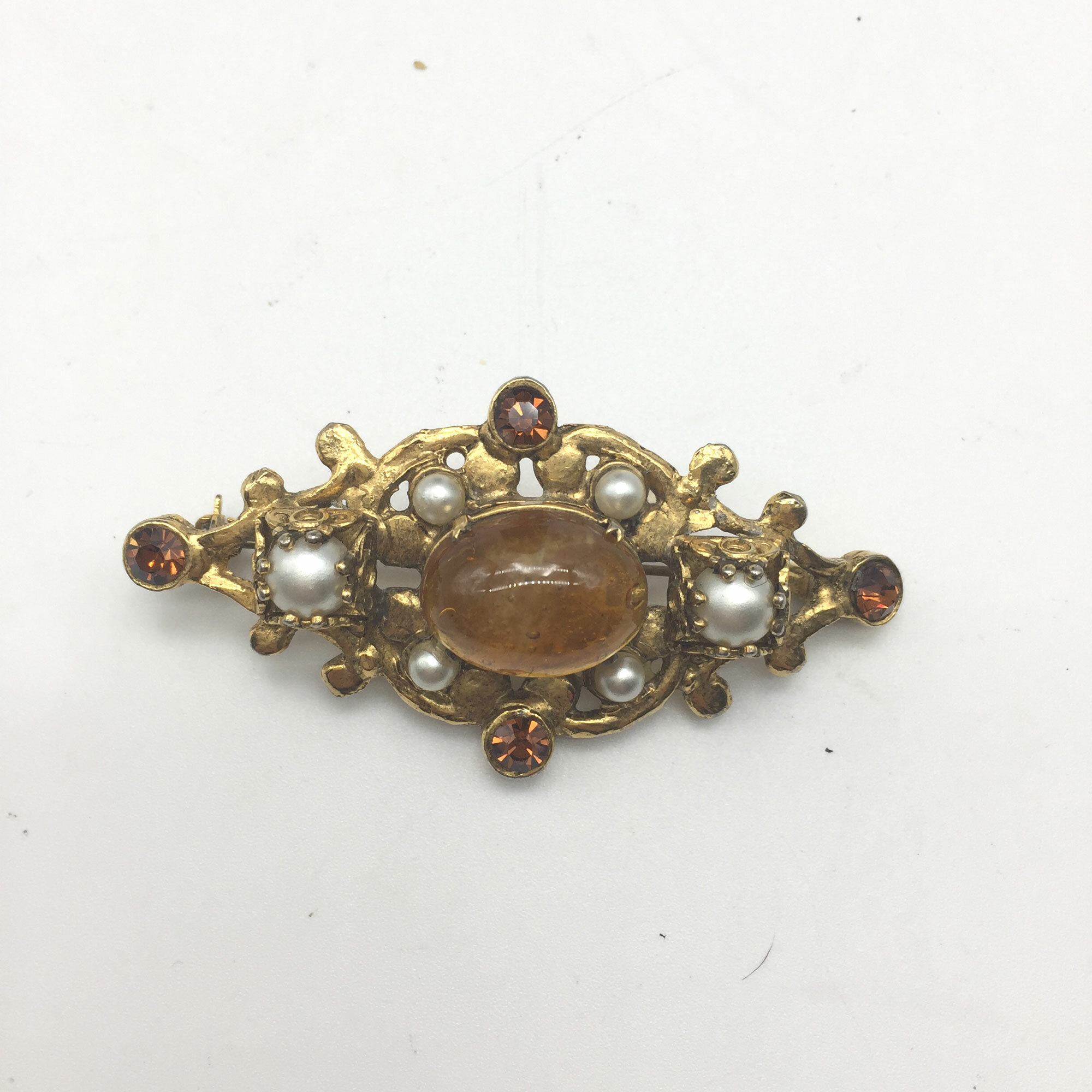
Lovely fleur de lis brooch 1960s
Price: £10
Stoneware ceramic Wall Flagon, Simon Eeles, signed, late C20th
Price: £180Simon Eeles was one of the two sons of David and Patricia Eeles who started the studio Shepherd’s Well Pottery in Hampstead, London in 1955, moving to Mosterton, Beaminster, Dorset in 1962, see ‘British Studio Potters’ Marks’ by Eric Yates-Owen and Robert Fournier (2nd edition 2005 p152). Simon began working with his parents in 1979 and was to soon specialise in stoneware although in later years he took an interest in the Japanese ‘raku’ type glazes for which he gives demonstration classes today. His earlier stoneware pieces seem to have focused on decorative utility items and do not appear to be commonly available now. Priced in the 1980s/1990s at £110 this wall flagon was clearly something of a demonstration piece at the time and remains so today.
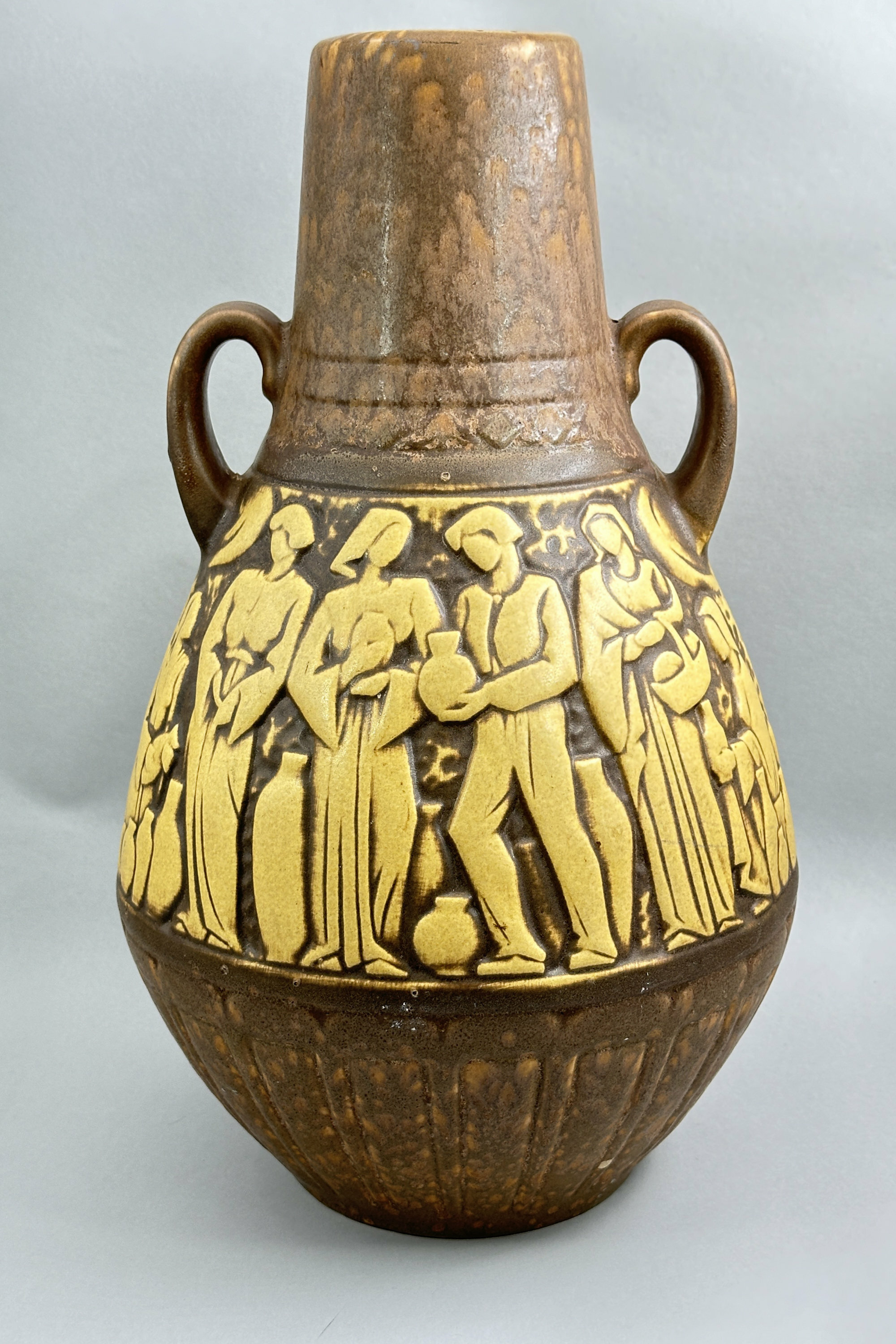
West German Scheurich Vase, Market Scene Pattern, 225-46, 1970s
Price: £150In 1954, Alois Scheurich founded the Scheurich Keramik factory, having been in partnership before then in the firm ‘Scheurich and Greulich’ (S&G) since 1927. While founded later than many of its competitors, Scheurich grew to become the principal exporter of West German ceramics through until the 1980s and beyond, making vases in a wide variety of shapes and designs. Made in the 1970s, this vase has a retrospective feel recalling Soviet designs from the 1920s and 1930s. The figures seem to be grouped in a stylised market scene with various pitchers containing perhaps wine or oil. The symbolism is unclear unless it refers to the vase itself which could be regarded as recalling the form of the Greek amphora. But whatever the ‘meaning’ we have an imposing and unusual decorative item here which stands rather apart from many of the other pieces produced by its manufacturer.
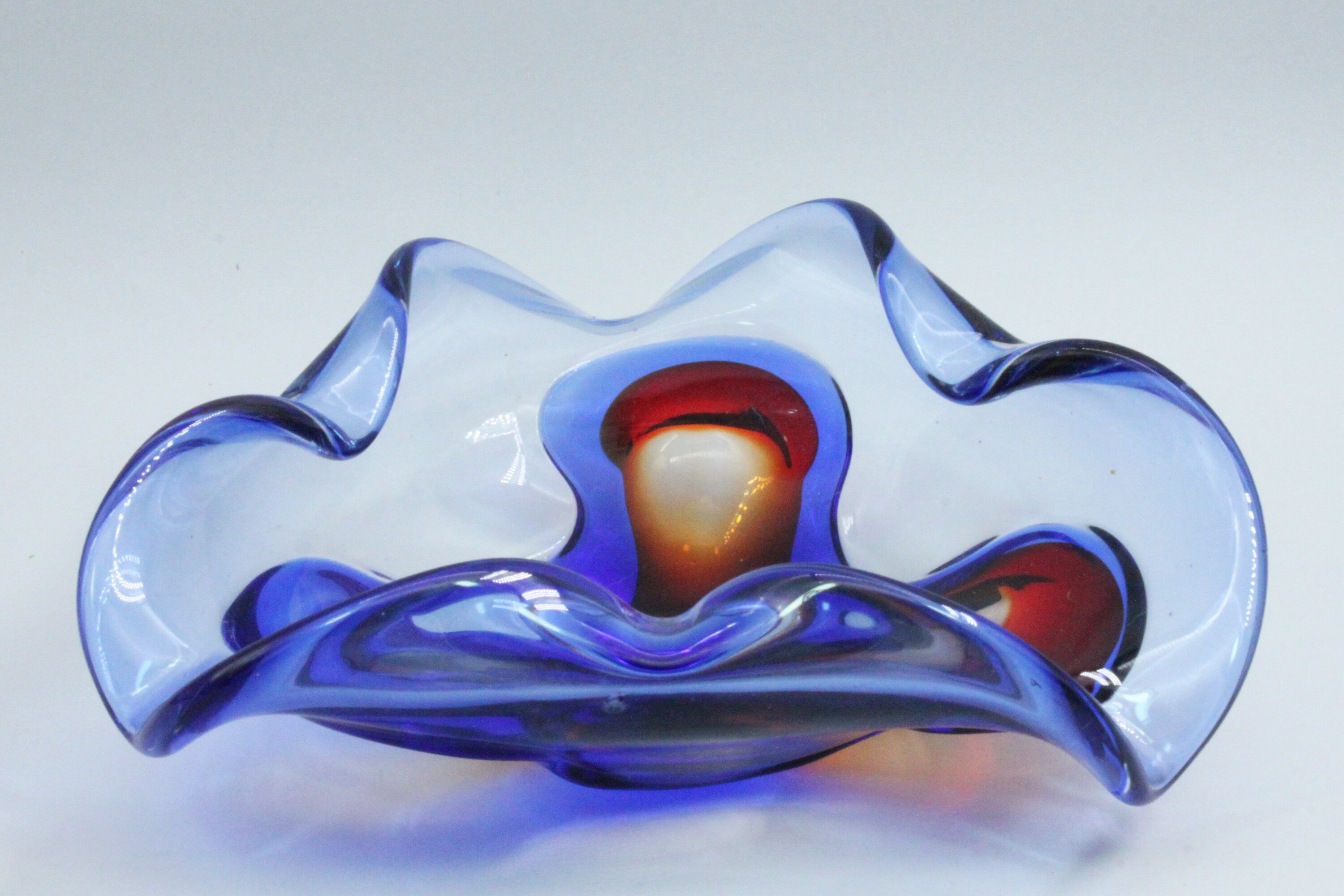
Murano Art Glass Dish, 1960s
Price: £55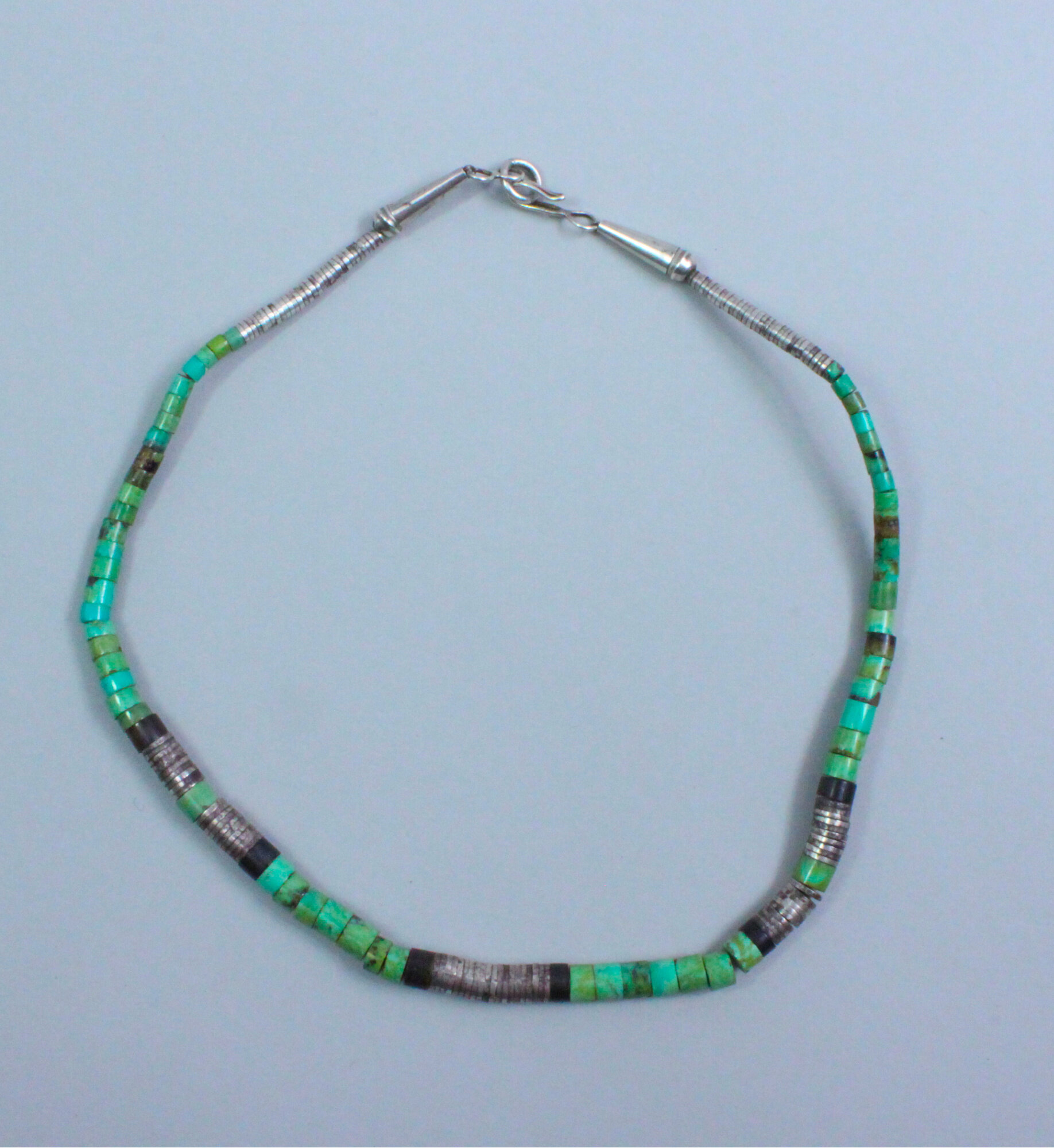
Tibetan turquoise and silver necklace 1930s
Price: £45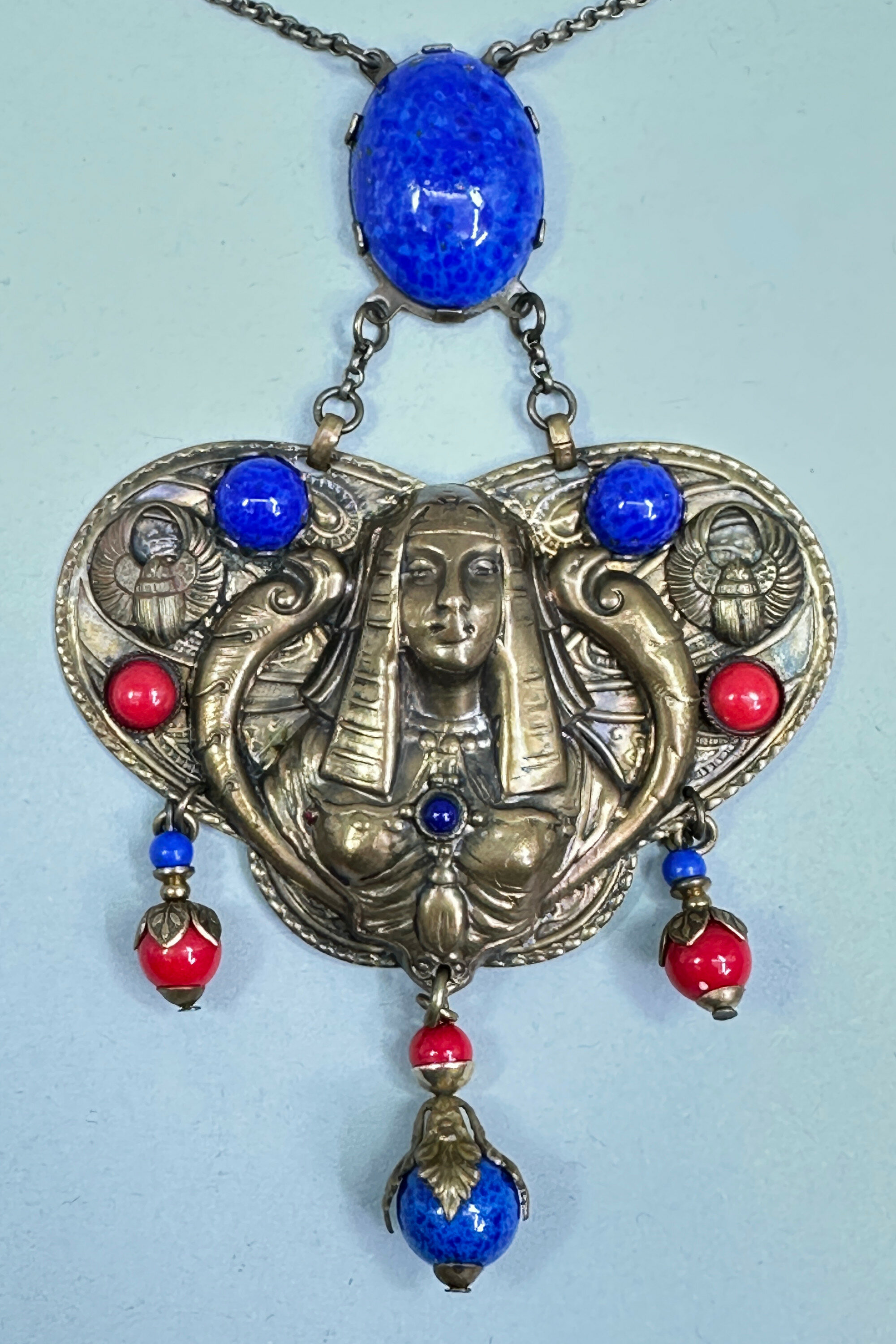
Czech Egyptian Revival Necklace with glass mounts and drops, Edwardian circa 1910
Price: £150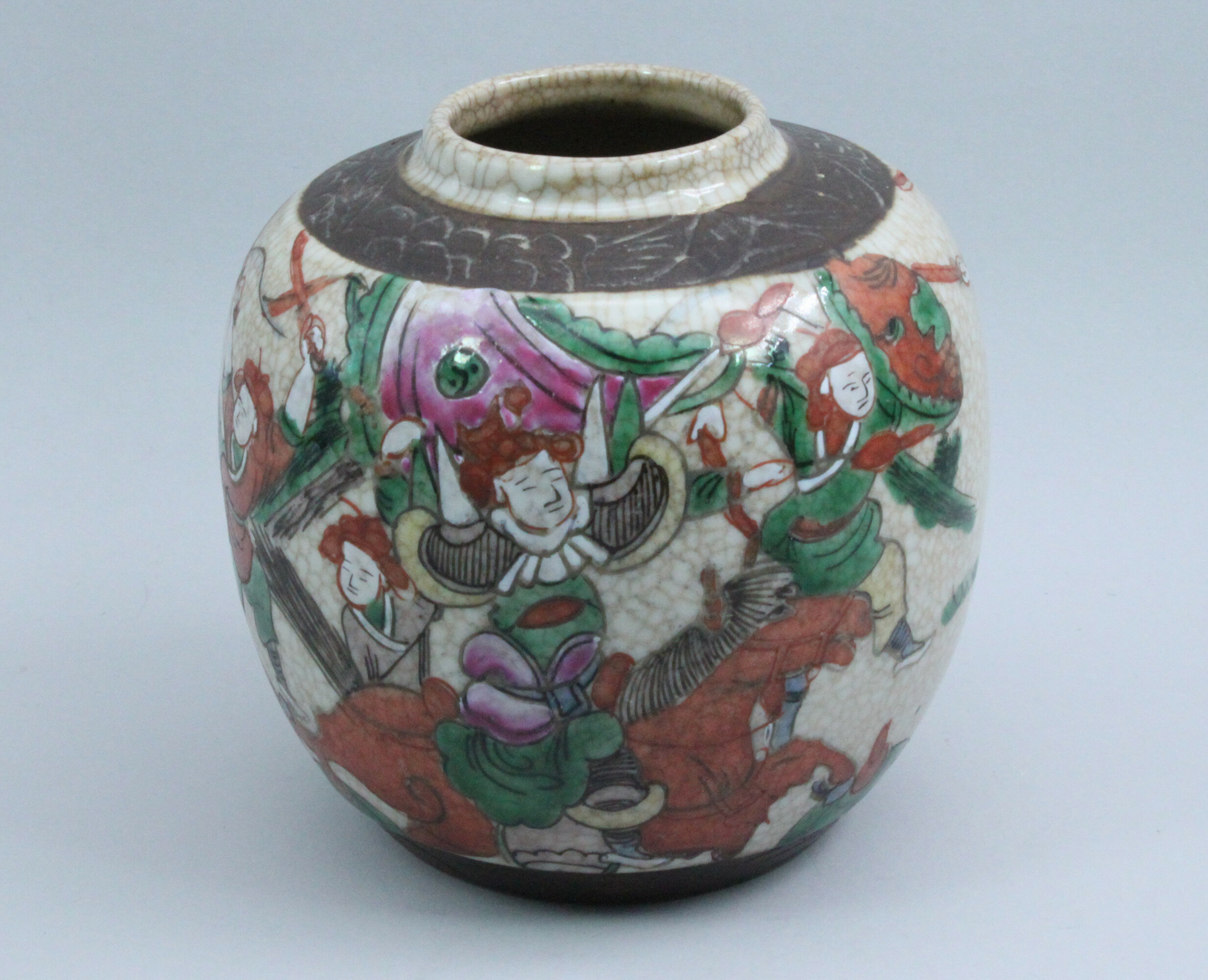
A Chinese Crackleware Famille Verte Ginger Jar decorated with Warriors circa 1880
Price: £45'Crackleware' glazed pieces, usually with 'bronzed bands, were a staple output of the Chinese potteries from the mid nineteenth century onwards and were produced in a wide variety of mainly vase shape forms, both in polychrome and blue and white and intended as decorative pieces for the Victorian rooms of the West. As with other ceramic types, the quality deteriorated and this piece is typical of late nineteenth century productions of a more modest level of craftsmanship but still retaining a naif charm. As with many ginger jars, this one lacks its original domed cover which would have been decorated to match.
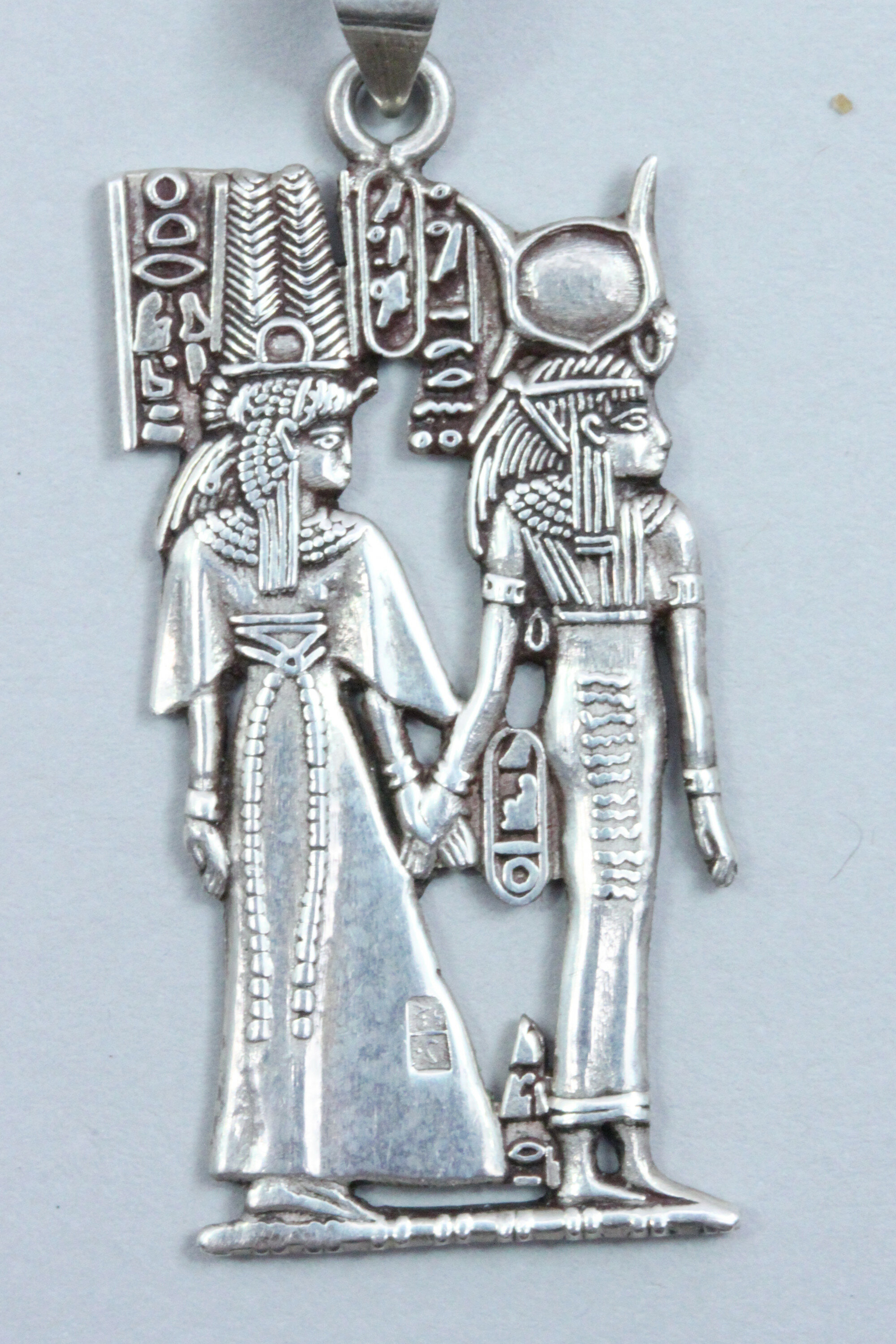
Silver Pendant, Tutankhamun and Ankhsenamun, Egyptian 1950s
Price: £35
Ewenny small vase
Price: £25There has been a pottery at the small Welsh town of Ewenny since 1610, the area around being, at the time, a fertile source of clay. In the early 1800s Evan Jenkins married Mary, the daughter of then owner John Morgan, and this began a period of ownership by the Jenkins family which continues today, the studio and shop being run by Alun Jenkins and his daughter Caitlin, who is the eighth generation member of the business (see image XXXX). Their mark can be seen at ‘British Studio Potters’ Marks’ by Eric Yates-Owen and Robert Fournier (2nd edition 2005 p157). Production has tended to concentrate on modest utilitarian items, hand potted and finished with the distinctive glazes for which the studio is known which involve dipping the pot in one glaze adding another with the splash technique and firing the item so that the two glazes fuse. The effects seen on this vase are typical of their work as is also the clear evidence of hand throwing. Ewenny pieces are made and sold today, but the current catalogue does not list items exactly similar to this, so a late twentieth century dating is the most likely.
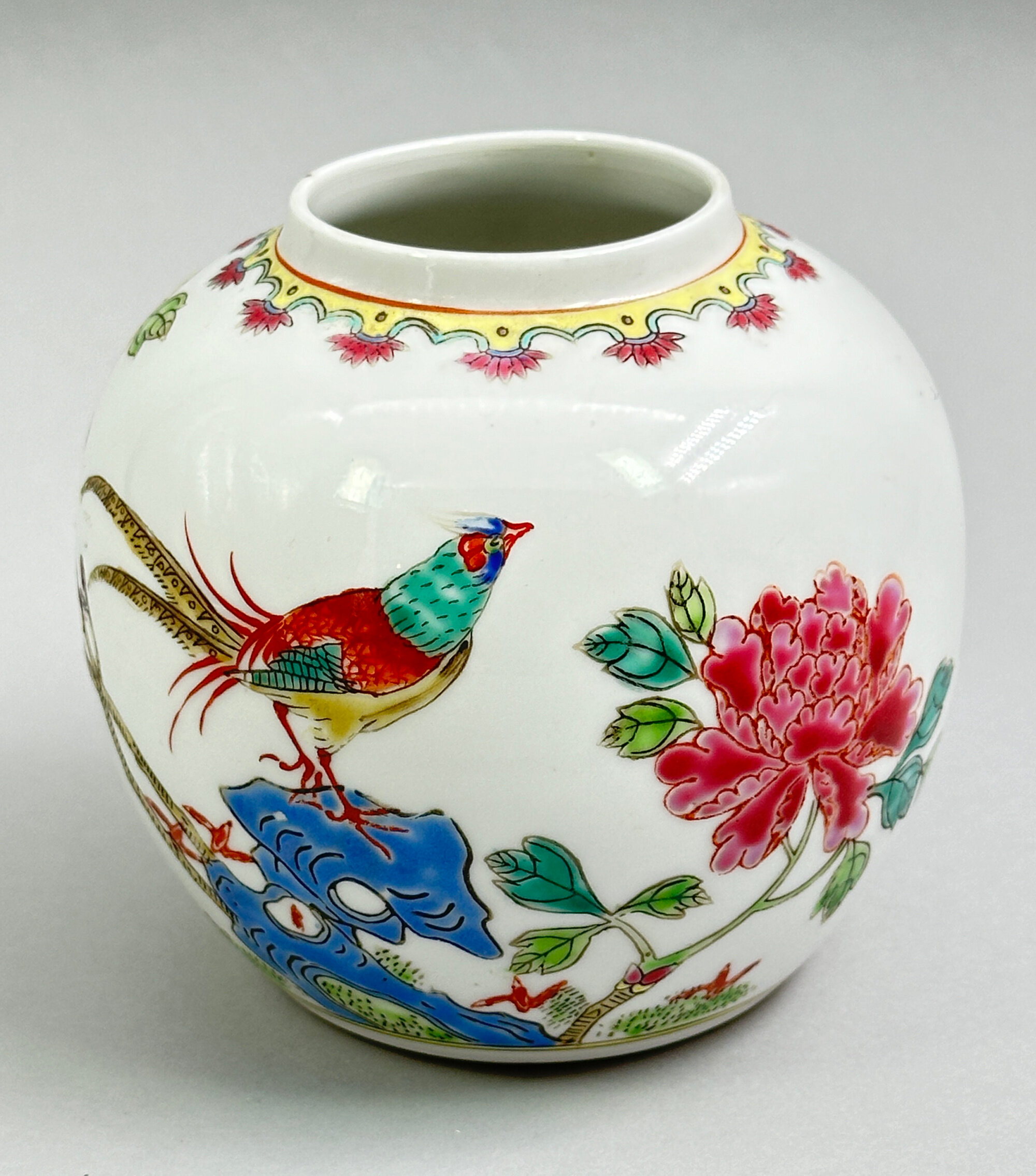
Small Chinese Ginger Jar decorated in Famille Rose enamels, second half C20th
Price: £25The stamped mark to the base reads ‘Zhongguo Jingdezhen Zhi (China Jingdezhen Made)’ with the letter ‘V’ between two lines. In the early 1950s almost all the factories in Jiangxi, the province where the kiln town Jingdezhen is situated, were merged into larger units, each made up of ten to fifteen previously independent factories. From this time factory numbers such as we have here (=V=) came to be used and many pieces are found with a wide variety of letters and numbers indicating the various cooperatives. The quality of the productions varied and it is a reasonable assumption that increasing years witnessed a decline. While other examples of this type of jar exist, some with their original domed covers, this piece is of the very best quality, indeed the work matches earlier pieces in the style very closely, and a dating to the mid 1950s seems quite plausible. It shows that the Chinese potters continued to produce to a high standard when they chose to do so and provides a pleasing memento of the closing era of a tradition of porcelain production stretching back long into the past.

Three Chinese Canton Enamel Dishes, Nineteenth Century
Price: £45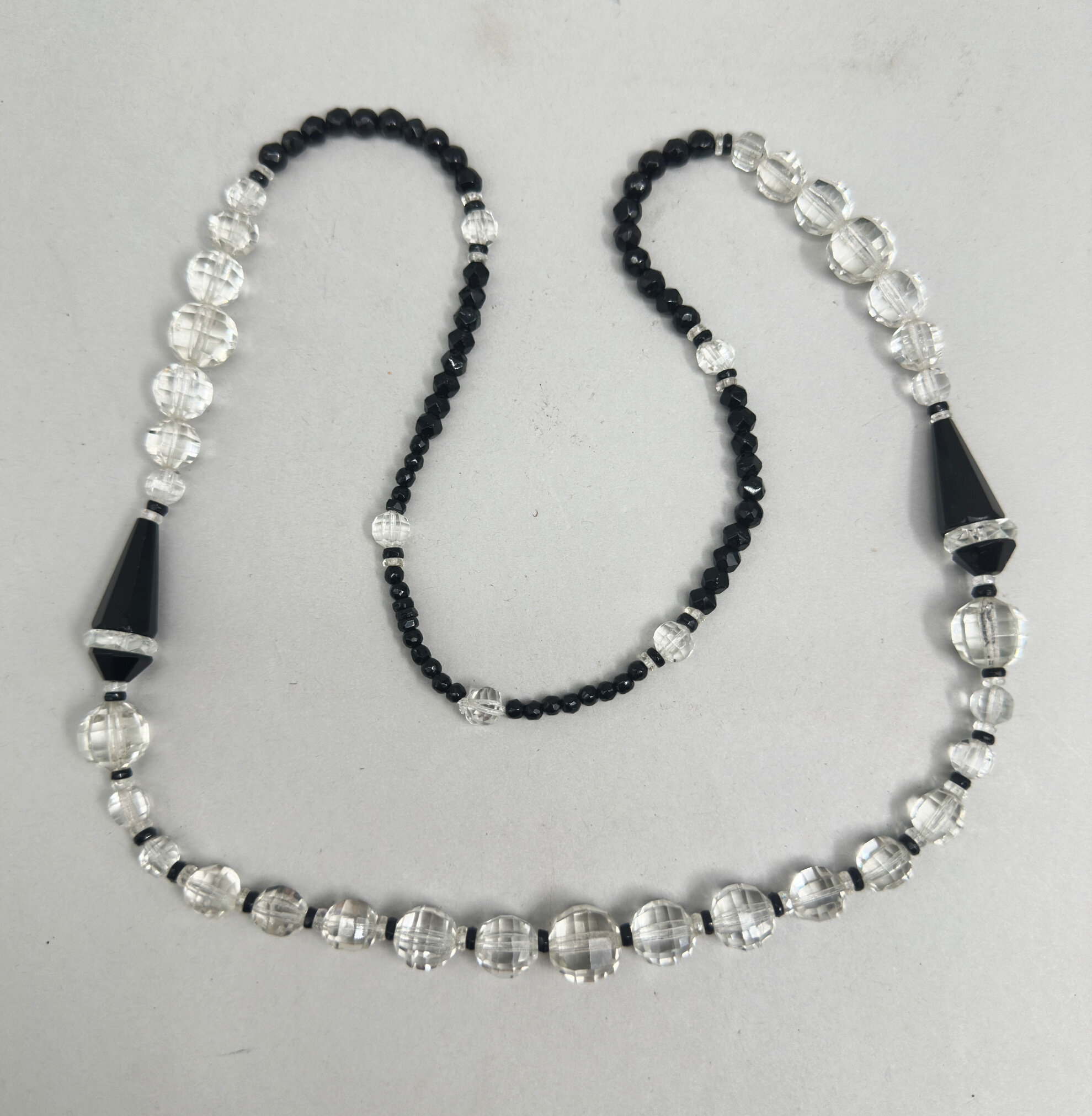
Outstanding Art Deco necklace with French jet and rock crystal beads c1920
Price: £175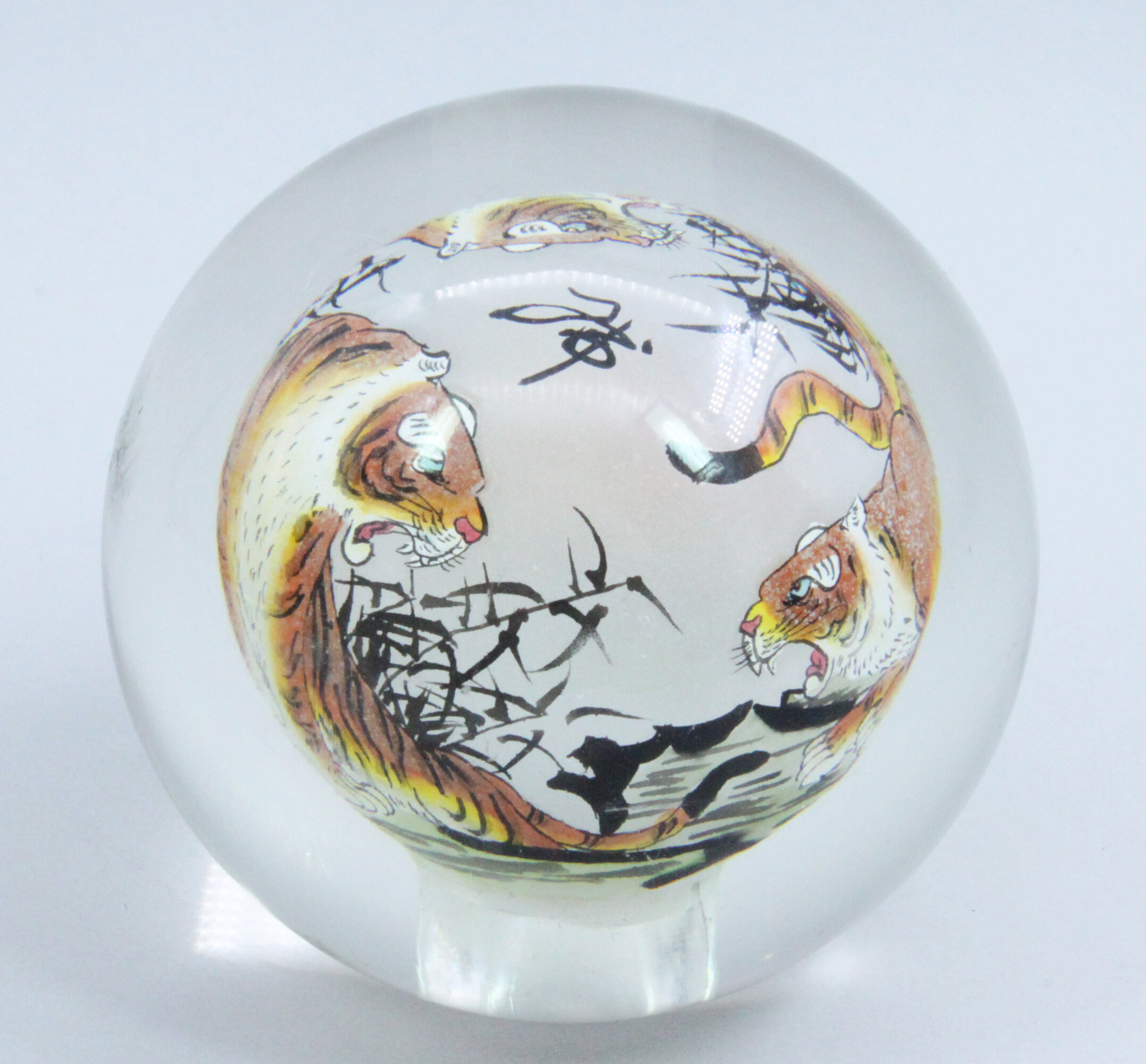
Chinese Reverse Painted Glass Globe depicting tigers, Modern
Price: £45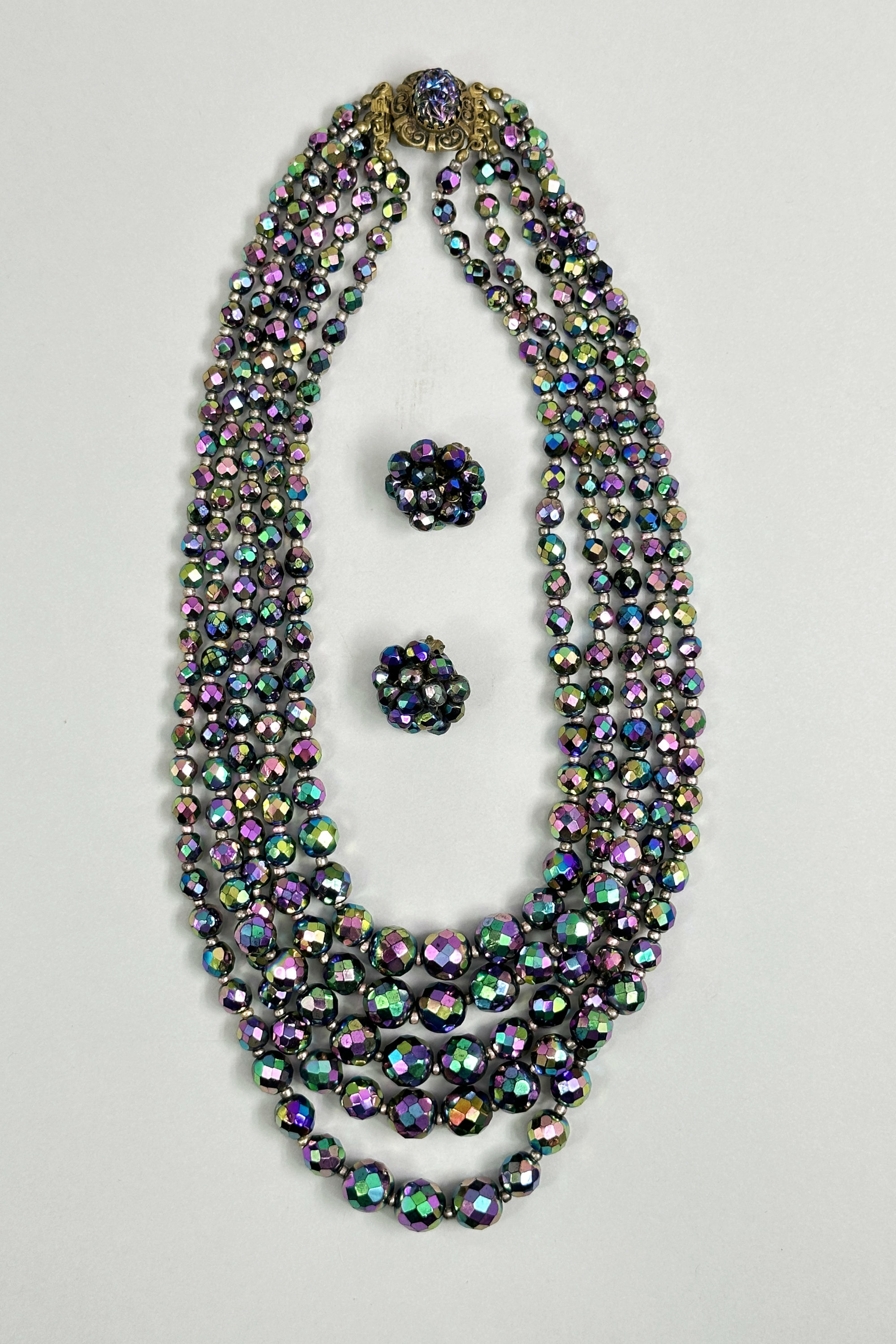
Show stopping suite of necklace and earrings c1960
Price: £85
Pair of Glass Candlesticks, Davidson Chippendale, 1930s
Price: £25Chippendale glass was designed and patented in the USA in the early years of the 20th Century and imported into Britain. The moulds were purchased by a Charles Pratt and Davidson’s used them to produce this range of glassware purchasing the exclusive rights to manufacture Chippendale glass when they realised its popularity. Various forms were included in the range and manufactured by the pressed glass technique for which the firm had become famous. The mould marks of this pair can be clearly seen at the bases (see image 4). The clean angular lines are typical of art deco designs and Davidson’s produced here a model which was both practical and decorative.
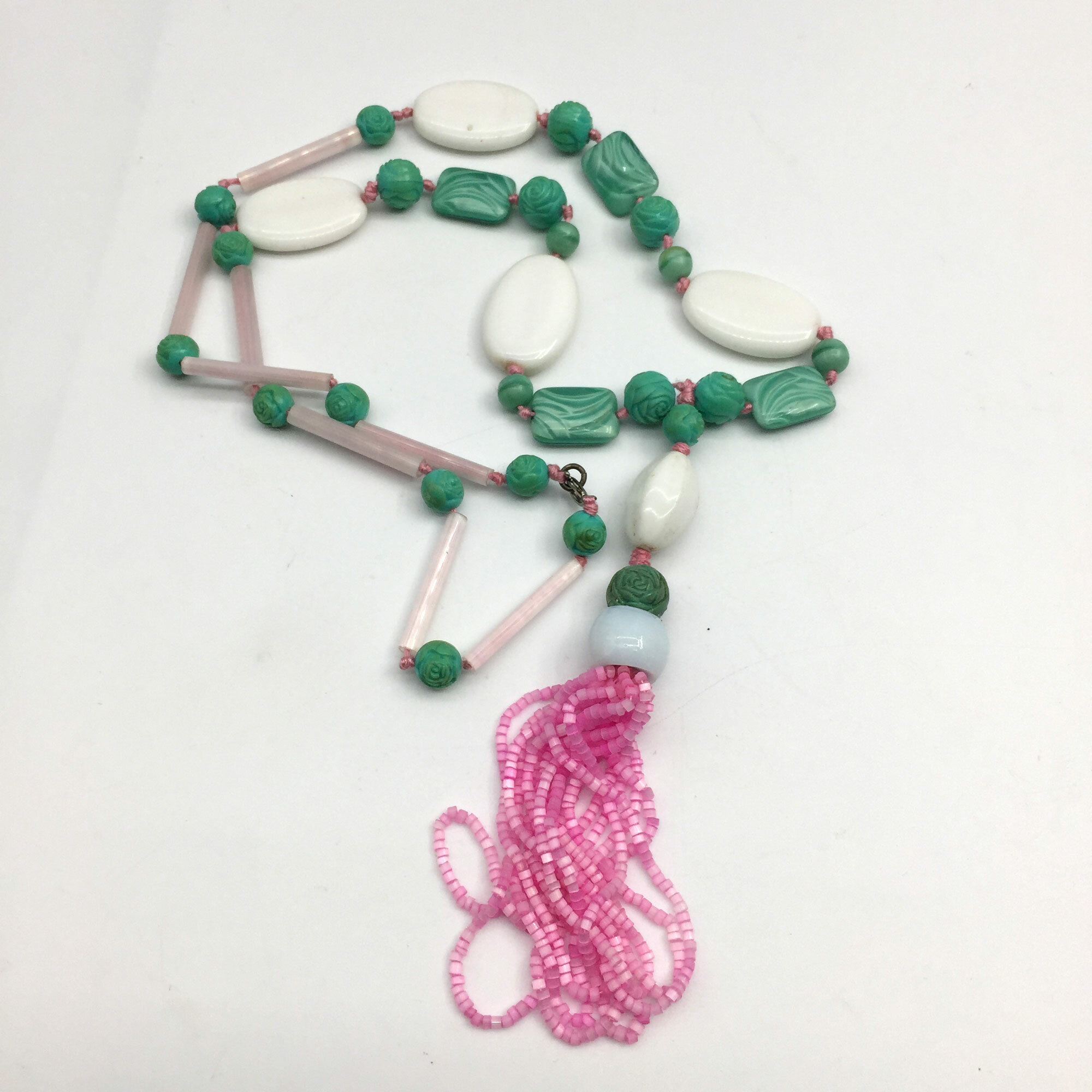
Art Deco moulded glass necklace
Price: £25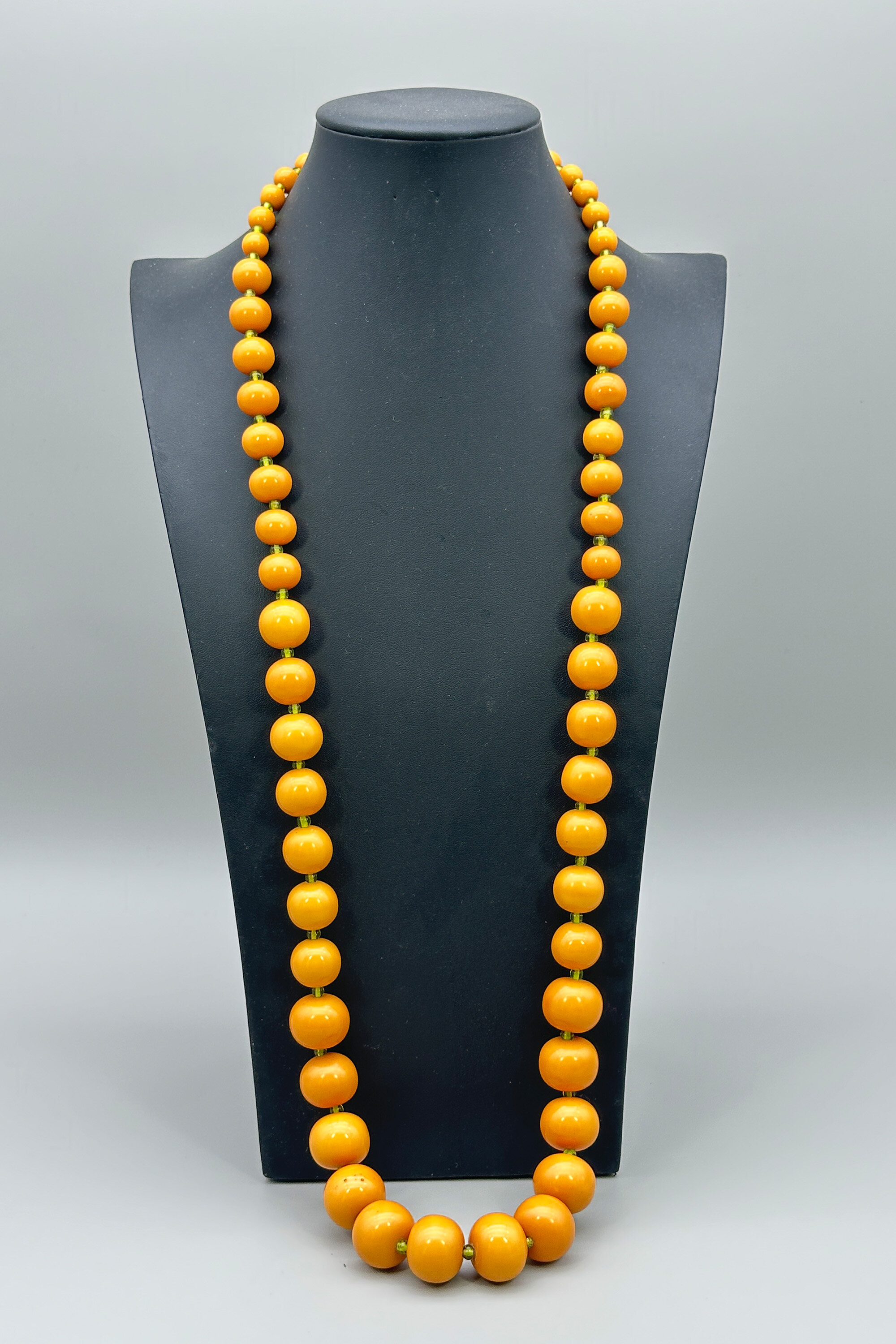
Long strand of butterscotch amber coloured beads c1960
Price: £25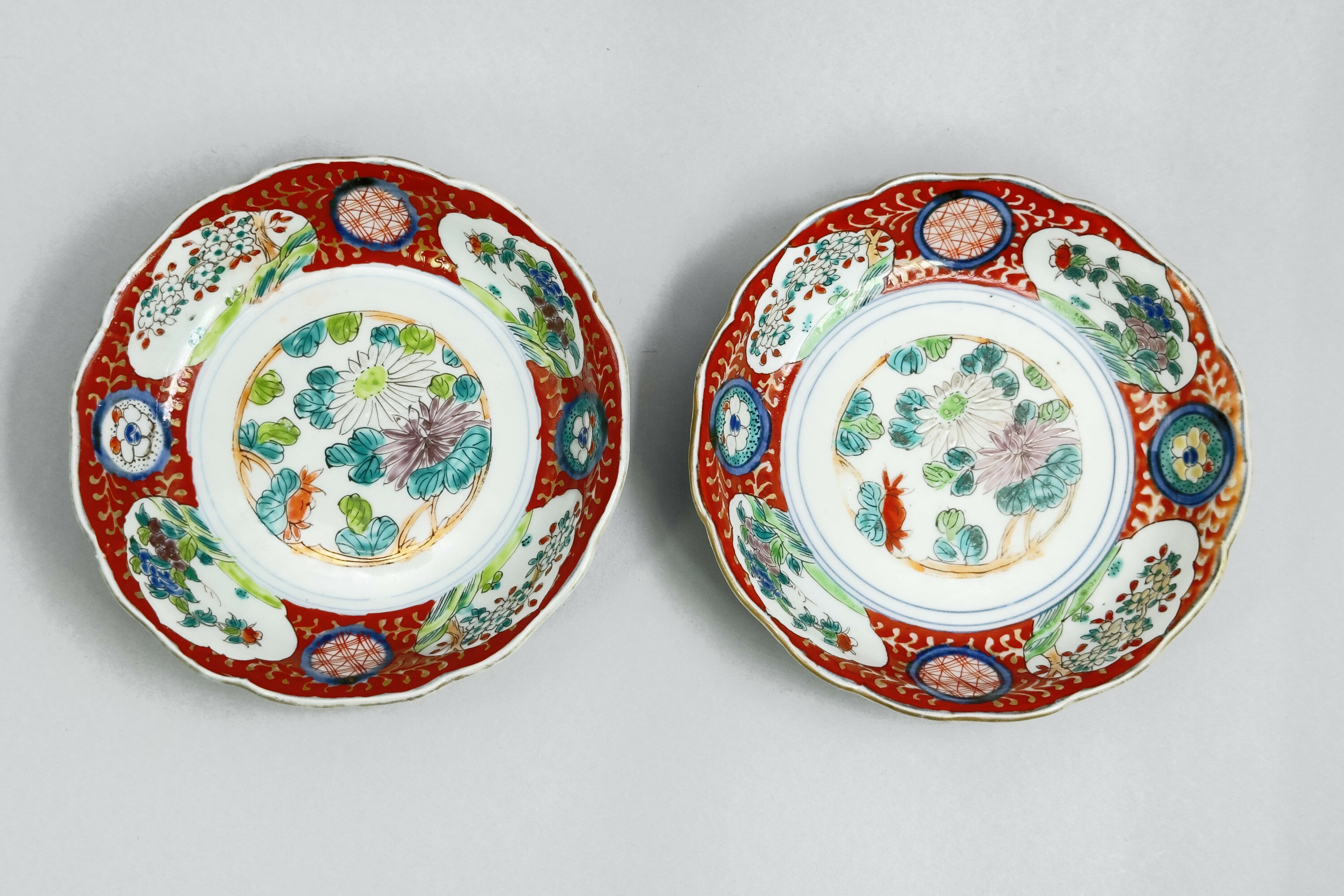
Pair of Japanese Arita Shallow Bowls circa 1880
Price: £75The town of Arita in the former Hizen Province, northwestern Kyūshū island, was a major centre for the production of porcelains in Japan. Best known for blue and white pieces it also produced polychrome wares as well, including the familiar imari colourings. While similar to Imari, the wider palette of colours used here is usually termed ‘Arita’ and the decorative appeal of the style is clear. These bowls probably come from an original set of five and their quality is much above average. Dating is to the Meiji era (1868 - 1912) probably around 1880.
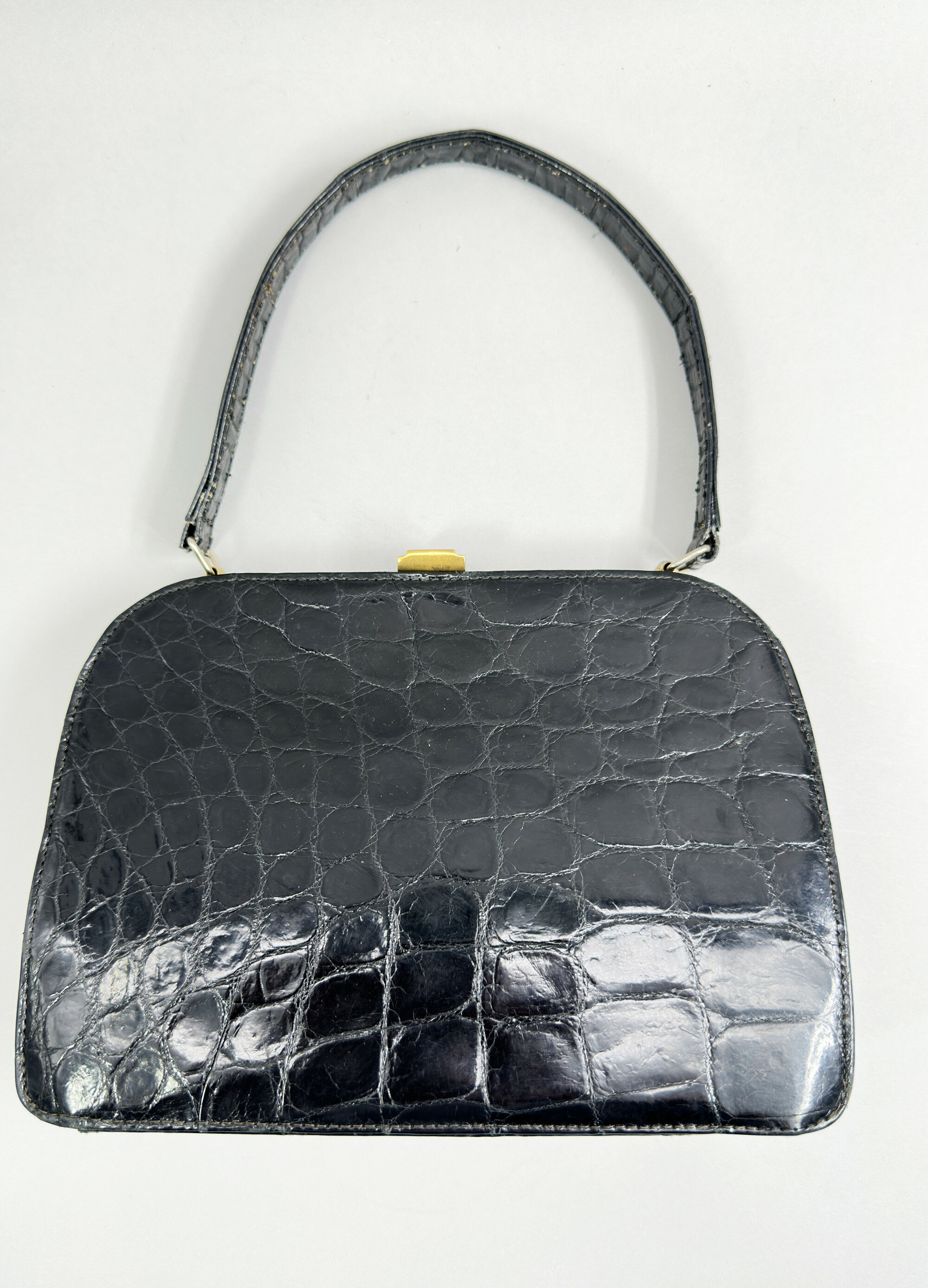
Classic black crocodile handbag 1940s
Price: £75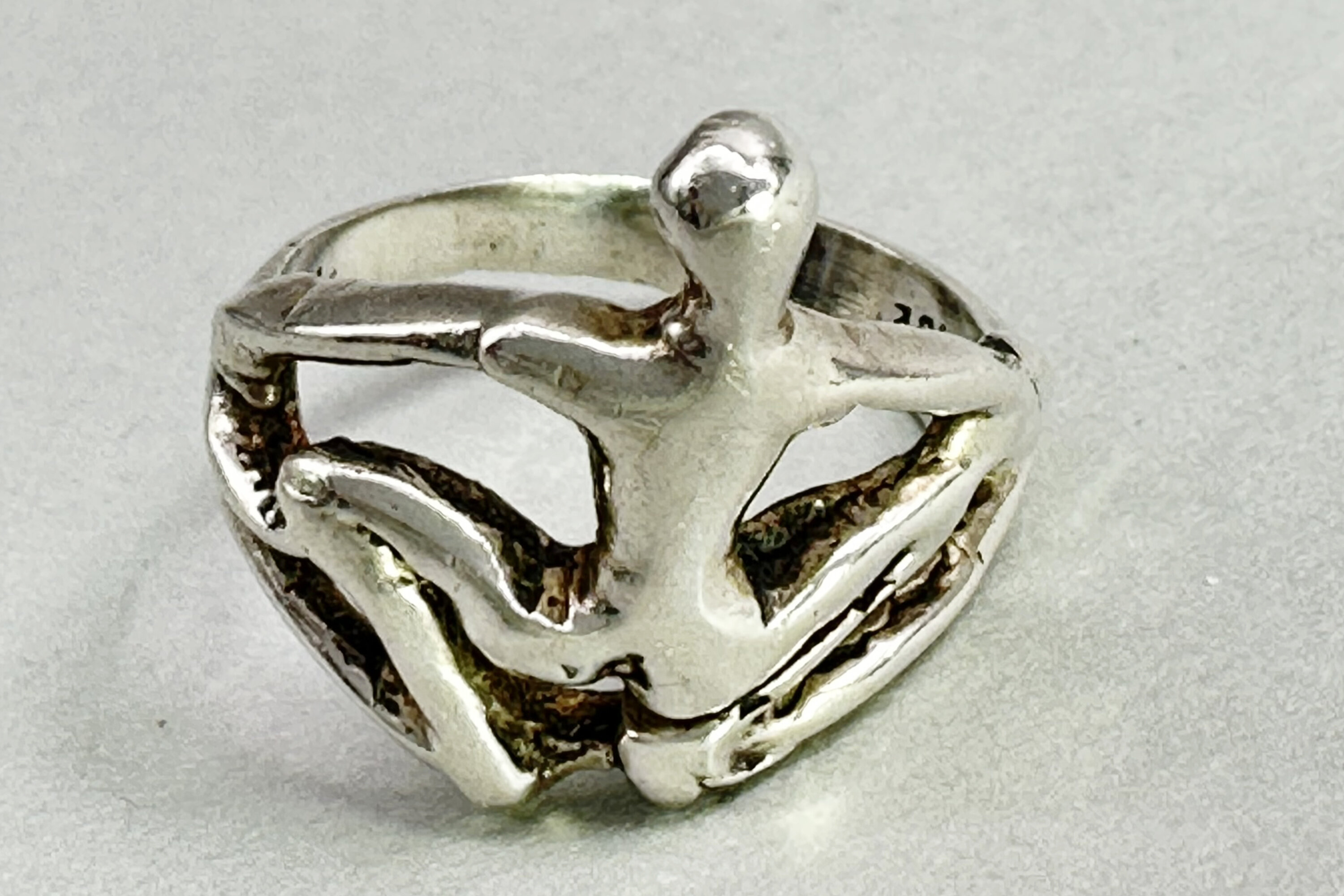
Very unusual Taxco figural ring, Taxco, c1980
Price: £45
West German Keramik Jug with drip glaze, second half C20th
Price: £45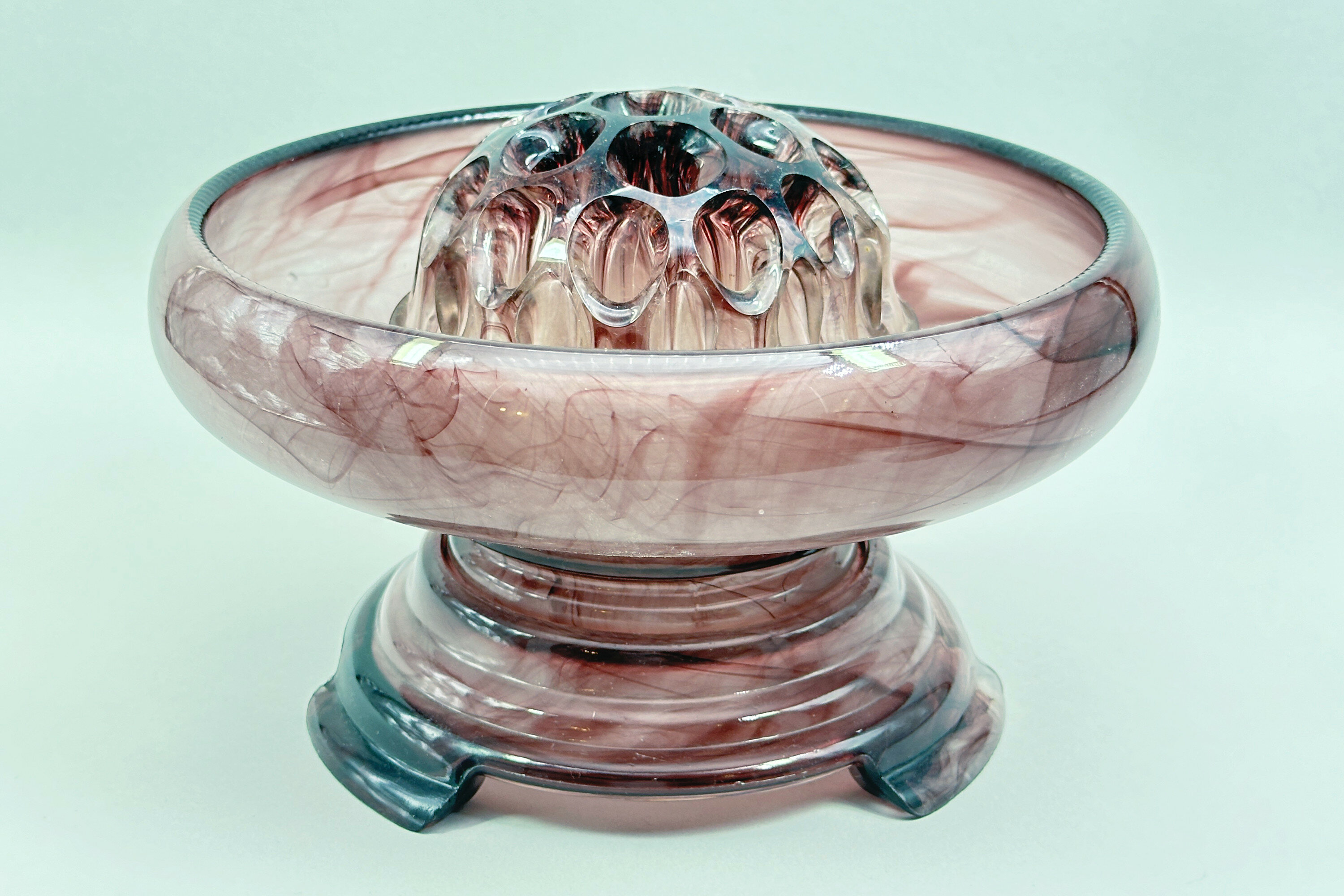
Art Deco Davidson purple cloud glass bowl, stand and frog, 1930s
Price: £75This model can be seen in the firm's catalogue for 1931 where the bowl and stand are combined with a separate pierced flower holder in the same style. No doubt the size of the ‘frog’ was up to the purchaser who could choose from a range of dimensions which probably explains the slightly different proportions here to the catalogue image which otherwise illustrates our example extremely well, even down to the milled edging to the rim of the bowl. With its archetypal shape and colouring this piece would be an excellent addition to any Art Deco collection as well as providing a striking and decorative item for a contemporary interior.
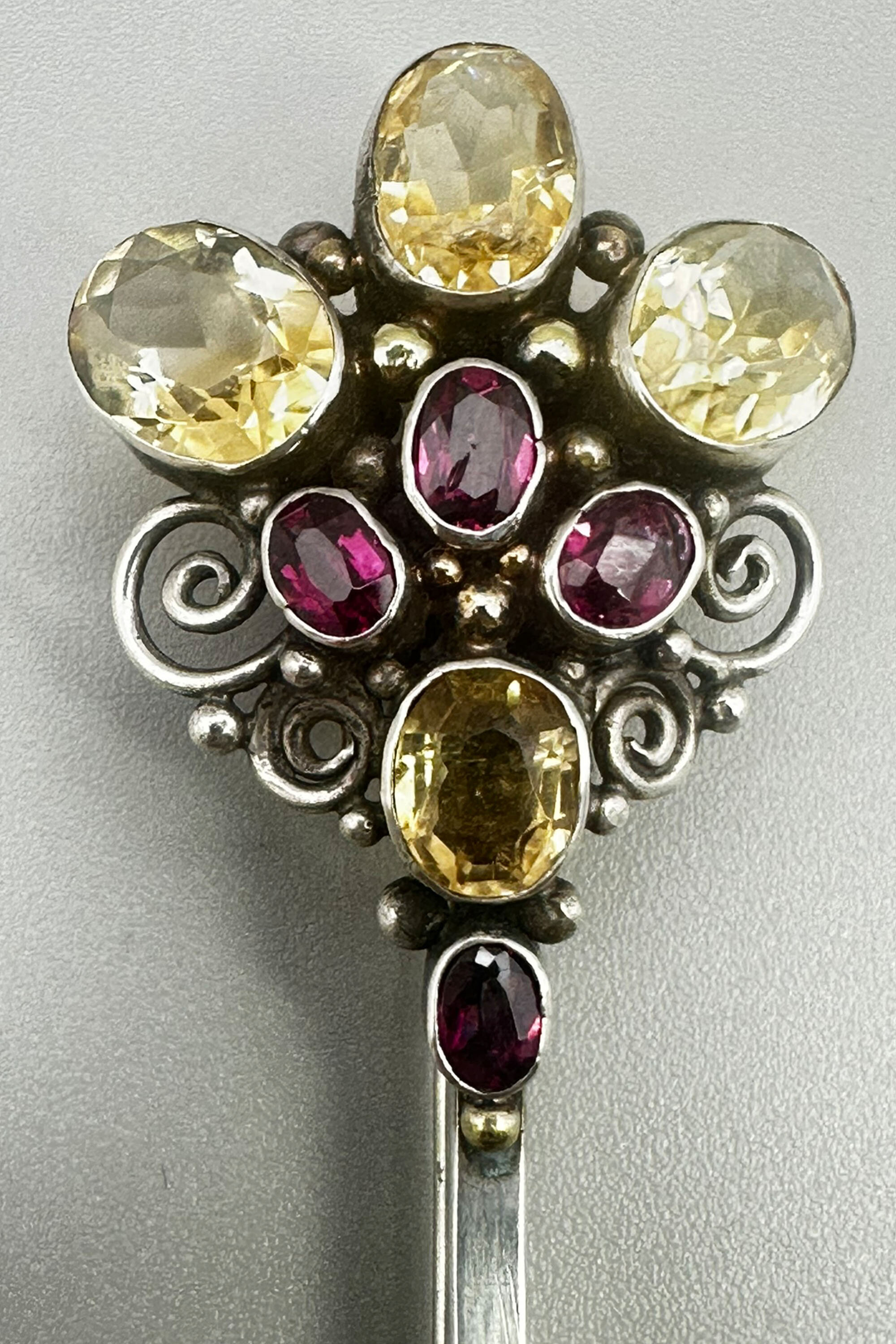
Art Deco citrine and pink sapphire brooch c1920
Price: £175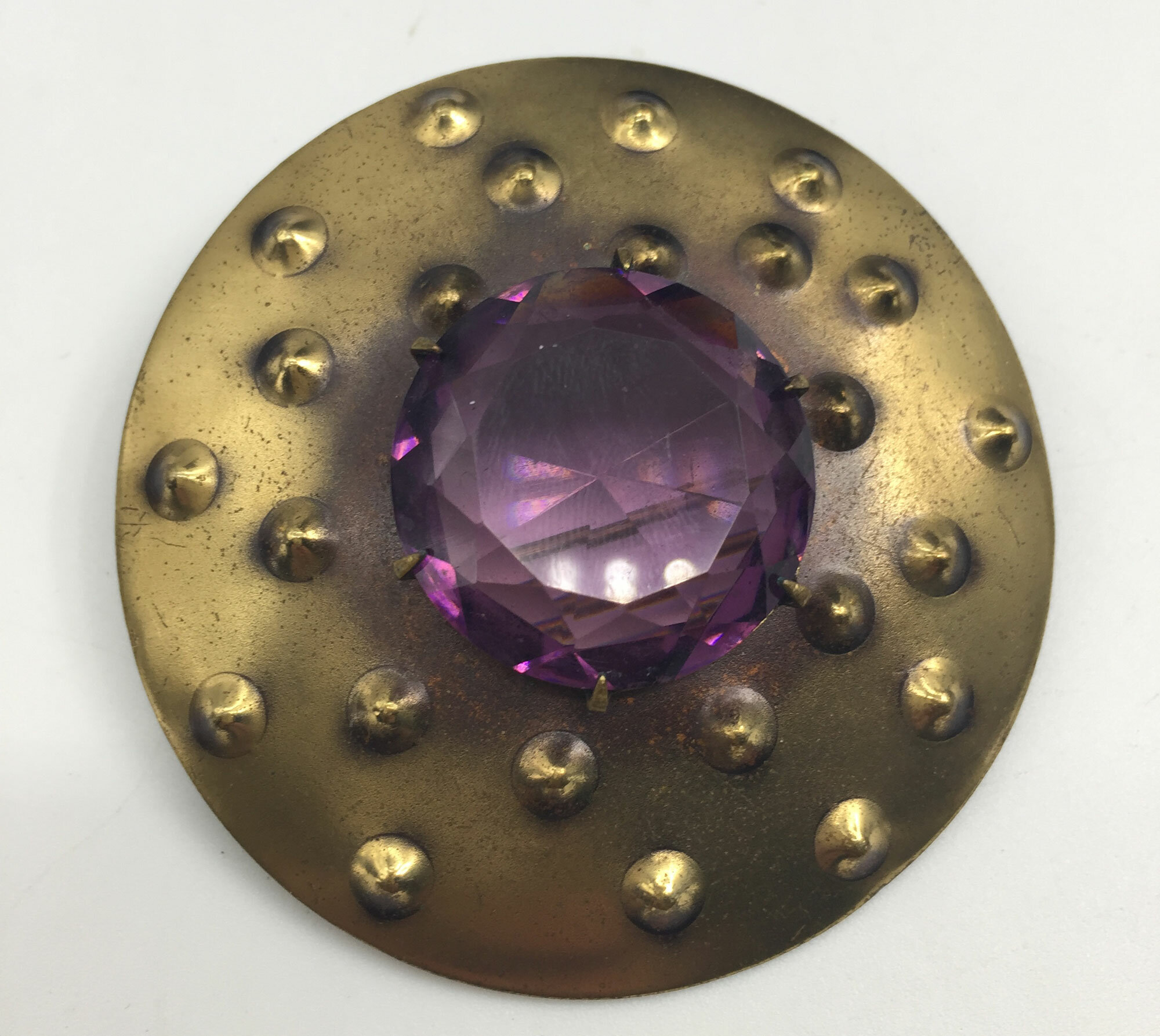
Art Deco Scottish shield brooch
Price: £35
Twister glass Bowl, Kjell Engman for Kosta Boda, signed and with label, late C20th
Price: £180Kosta Boda, previously known as Kosta Glasbruk, is a Swedish glassmaking company founded by two foreign officers in Charles XII's army, Anders Koskull and Georg Bogislaus Staël von Holstein, in 1742.It is located in Kosta, Sweden. Early production consisted of window glass, chandeliers and drinking glasses. From the 1840s, the factory was at the forefront of new trends and technical developments, producing pressed glass, and in the 1880s setting up a new glass-cutting workshop. In 1903, the company merged with the Reijmyre glassworks but both retained their own names and Kosta went on to maintain its reputation as one of the leading Swedish manufacturers with a range of fine art glass and tableware by distinguished designers such as Vicke Lindstrand, artistic director from 1950-1973.
Kjell Engman (see image 11) has been a designer at Kosta Boda since 1948. Also a professional rock musician, his works are often held to display a dancing feel and joie de vivre derived from his musical background. On the Kosta Boda website he writes “In my view, the glass is the pen for writing my stories. I don’t want to depress my audience; rather, I want to offer them joy and fantasy. My art should make people smile; it should be something positive.” Perhaps something of his sense of fun can be seen in this bowl, one of the largest of the range produced by Kosta Boda. which incorporates colour with movement and is often termed ‘Twister’. These bowls seem not now to be available from the firm direct and probably date to the late twentieth century. This example is of exceptional size and in pristine condition, an imposing centrepiece for a modern interior.

Danish silver floral brooch, Max Standager c1960
Price: £45
A Celtic or Pictish Brooch decorated with Horses, St Justin of Cornwall, circa 1980
Price: £10Inverurie is a town in Scotland where Pictish carved stones are found in the graveyard dating from the 7th Century. The Picts were a tribe of peoples living in the East and North of Scotland. Little is known of their origins but they were called 'Picts' by the Romans because of their painted and tattooed bodies. The Inverurie horse is the inspiration for this brooch. The actual design of the three horses was created by George Bain (1881-1968) the Scottish artist and teacher, famous for chronicling Celtic Art.
St Justin of Cornwall is well known for the production of 'craft' pieces in a variety of forms and materials. This piece probably dates to the 1980s and certainly cannot be found in their current catalogue.
PLEASE NOTE THAT THERE IS FREE UK SHIPPING ON THIS ITEM. For international buyers the shipping cost will be reduced by the UK shipping cost, so don't worry if you are outside the UK, you still receive this benefit!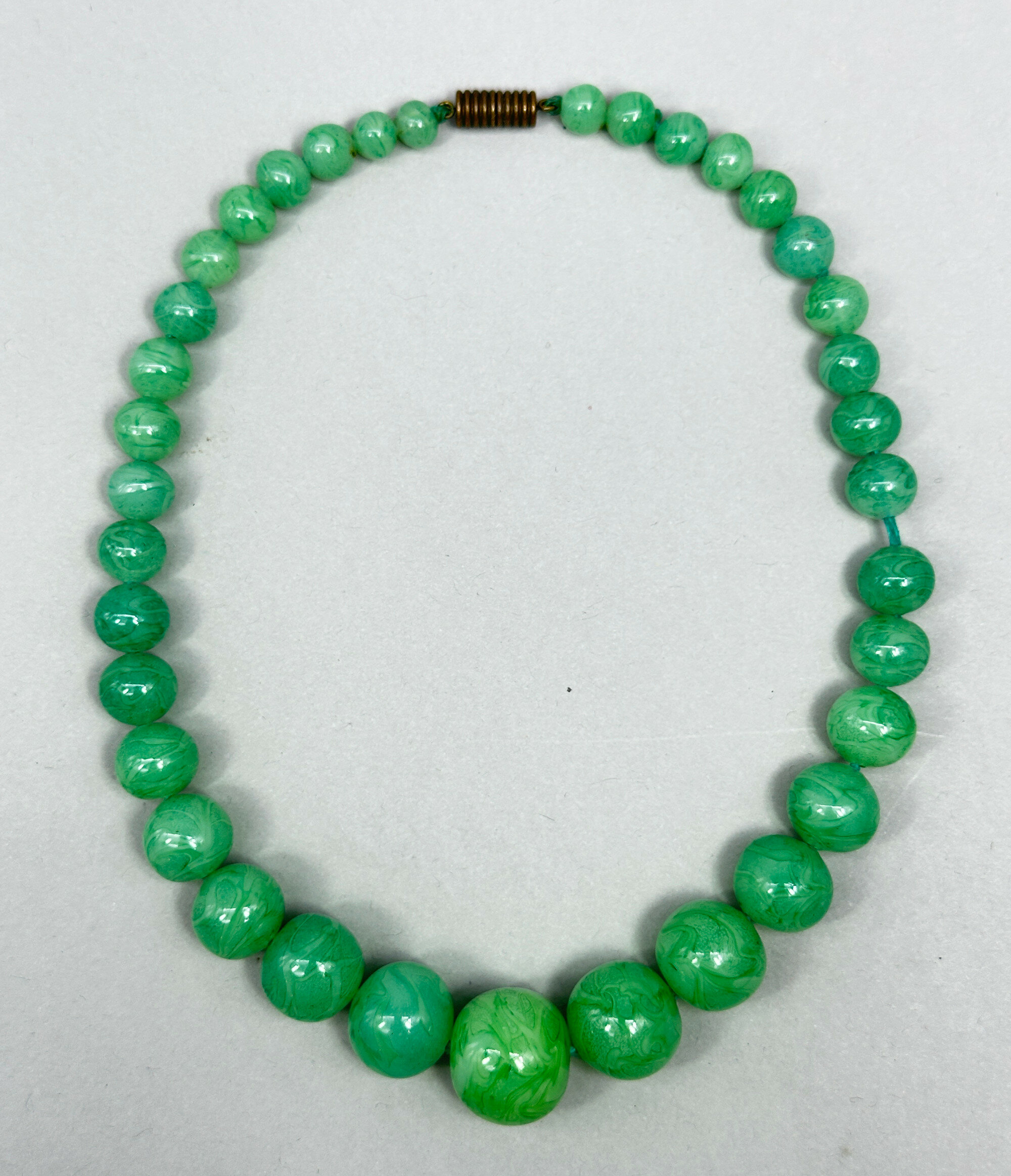
Strand of large Peking glass beads c1920
Price: £25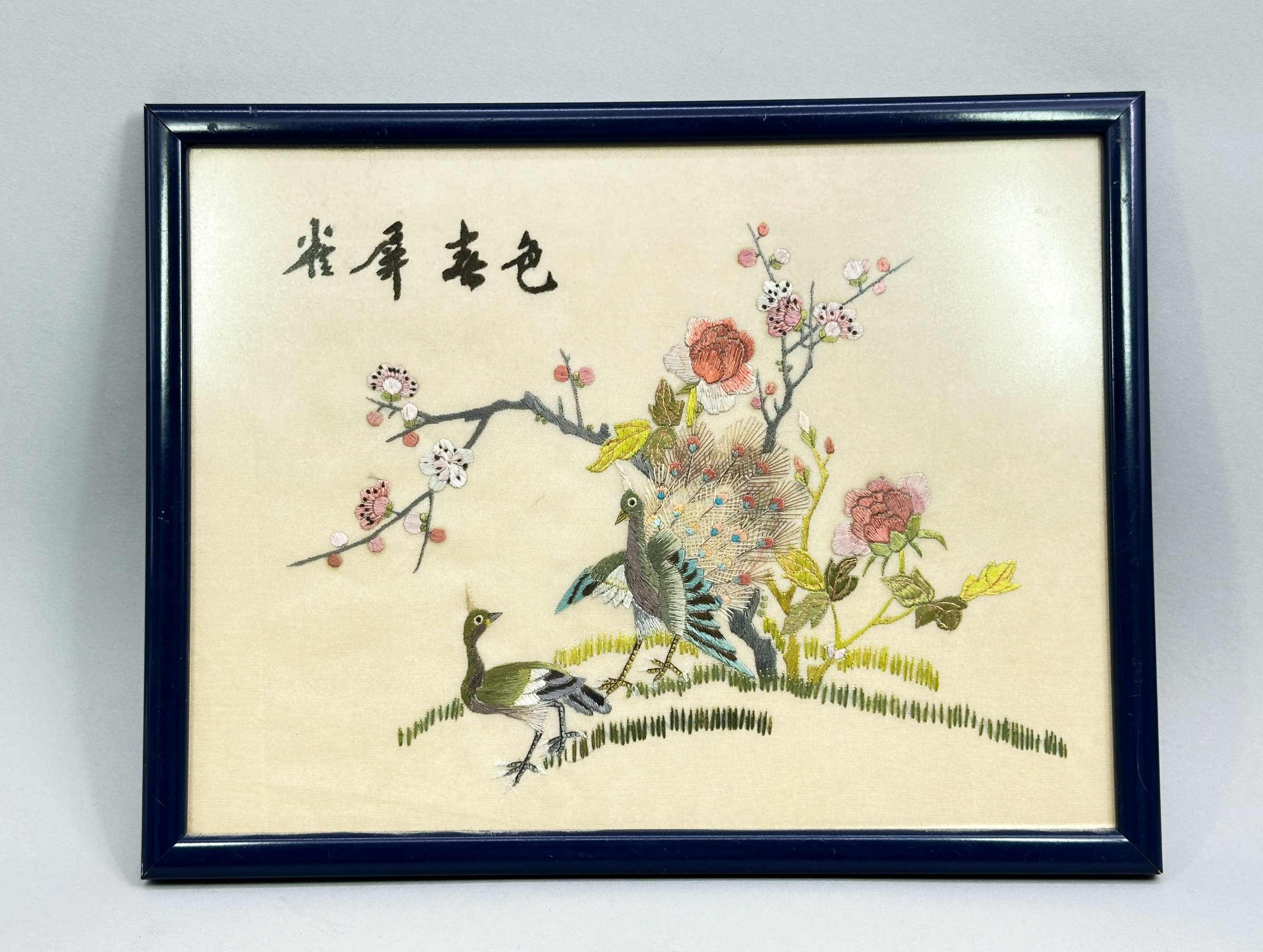
Framed Chinese Embroidery Silk Textile, signed, second half C20th
Price: £25
Mods at Clacton 1964, Photograph by Terry Disney for the Daily Express
Price: £45It was, though, a newsworthy confrontation and press photographers were sent in to record events. The most notable of these was Terry Disney who worked for the Daily Express newspaper. Disney was a distinguished and prolific photographer from the 1960s onwards and many of his striking images survive, not least those capturing the major personalities of the entertainment world at the time, including the Beatles themselves. His images of the ‘mods’ (he seemed less interested in the ‘rockers’) capture the atmosphere of the scenes vividly and this photograph is an excellent example of his work on that Easter weekend (for another see image 5). Often only obtainable under licence, this print is an ideal opportunity for a collector to acquire a near iconic image. It is offered with a very basic frame which might well be replaced with something which would enhance the photograph more sympathetically.
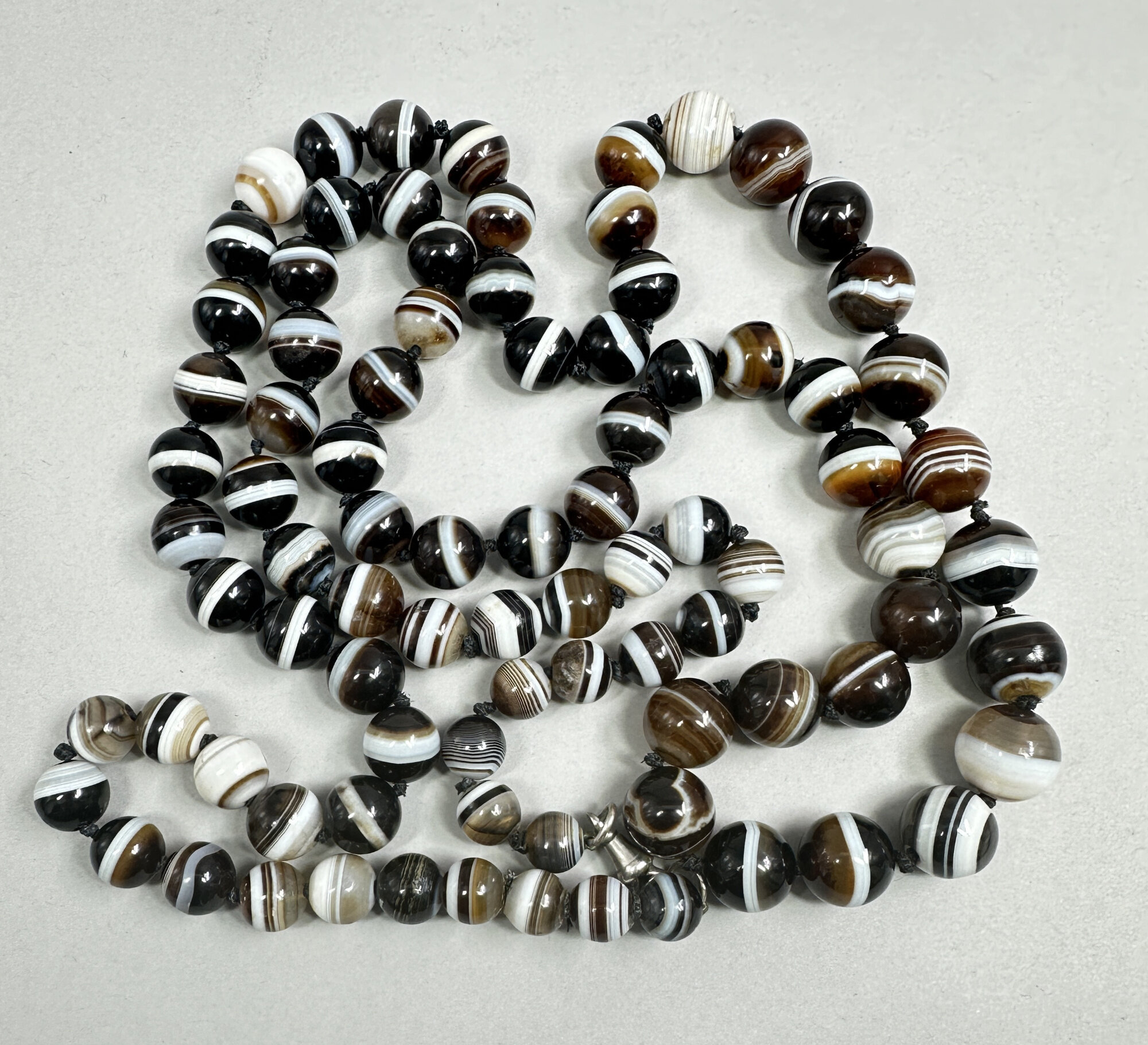
Outstanding Victorian Scottish agate opera length necklace
Price: £1500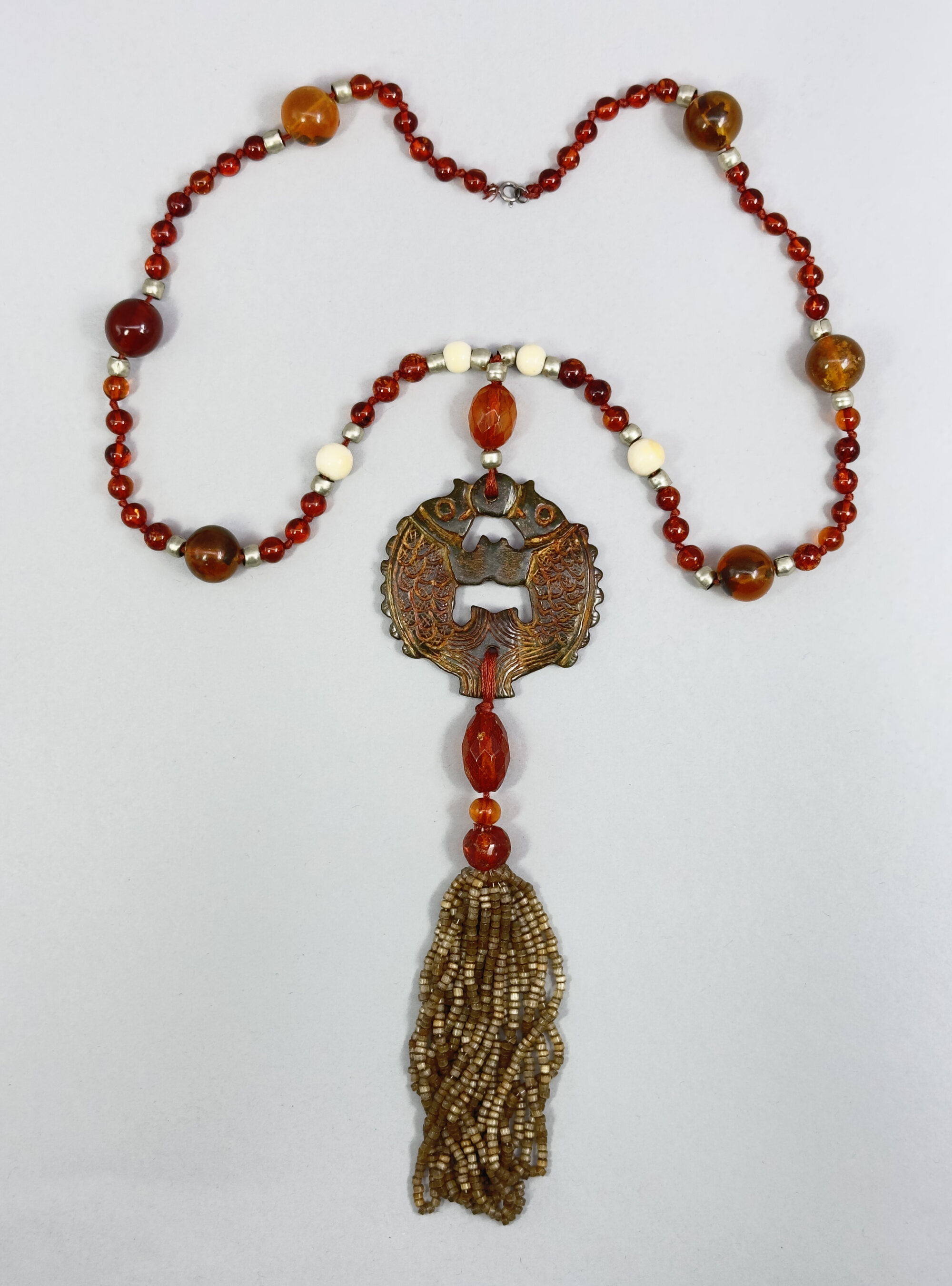
Necklace with soapstone pendant and amber beads
Price: £65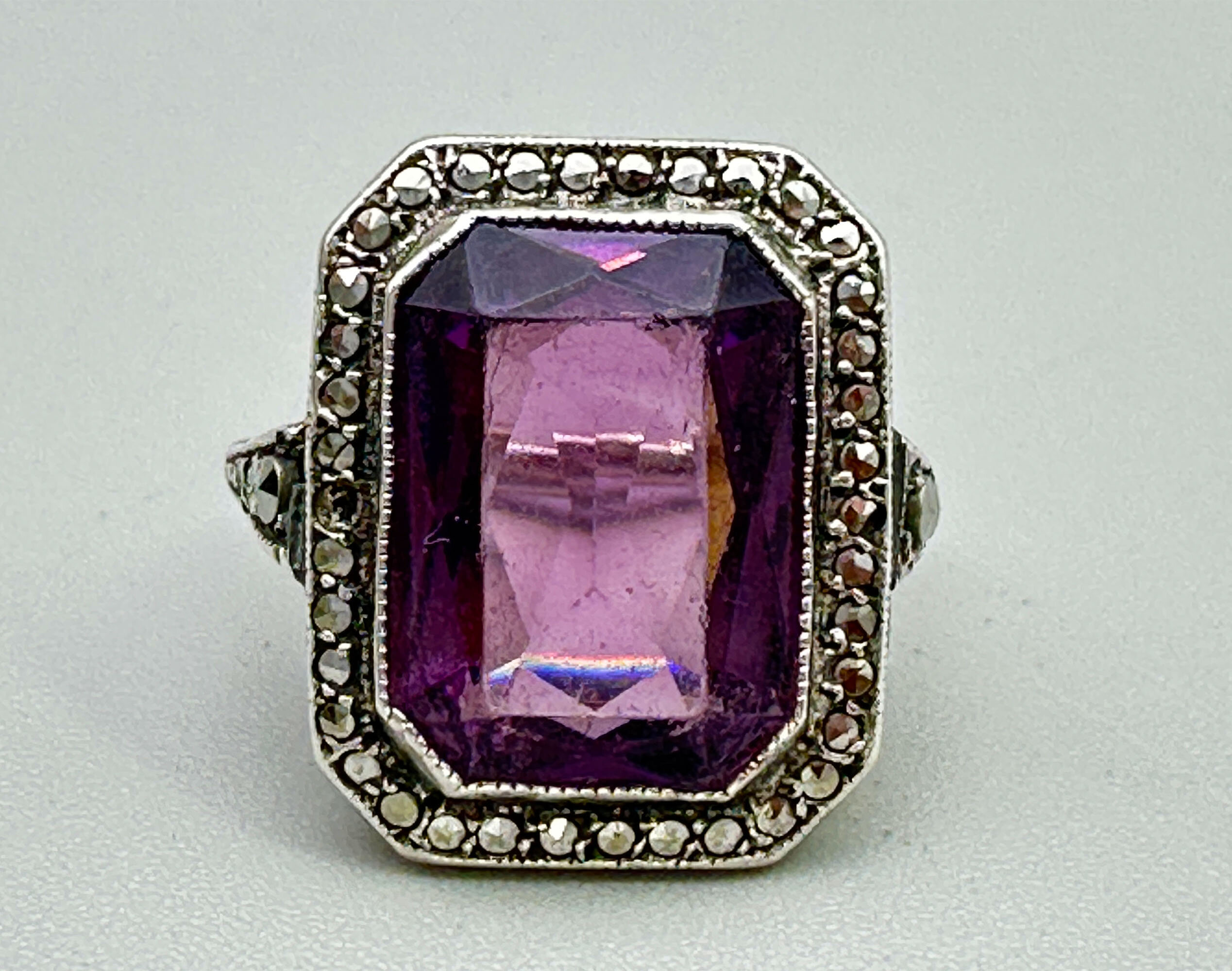
Art Deco emerald cut paste stone ring c1920
Price: £55
Green Leather Jewellery Box with Bramah Lock, early C20th
Price: £55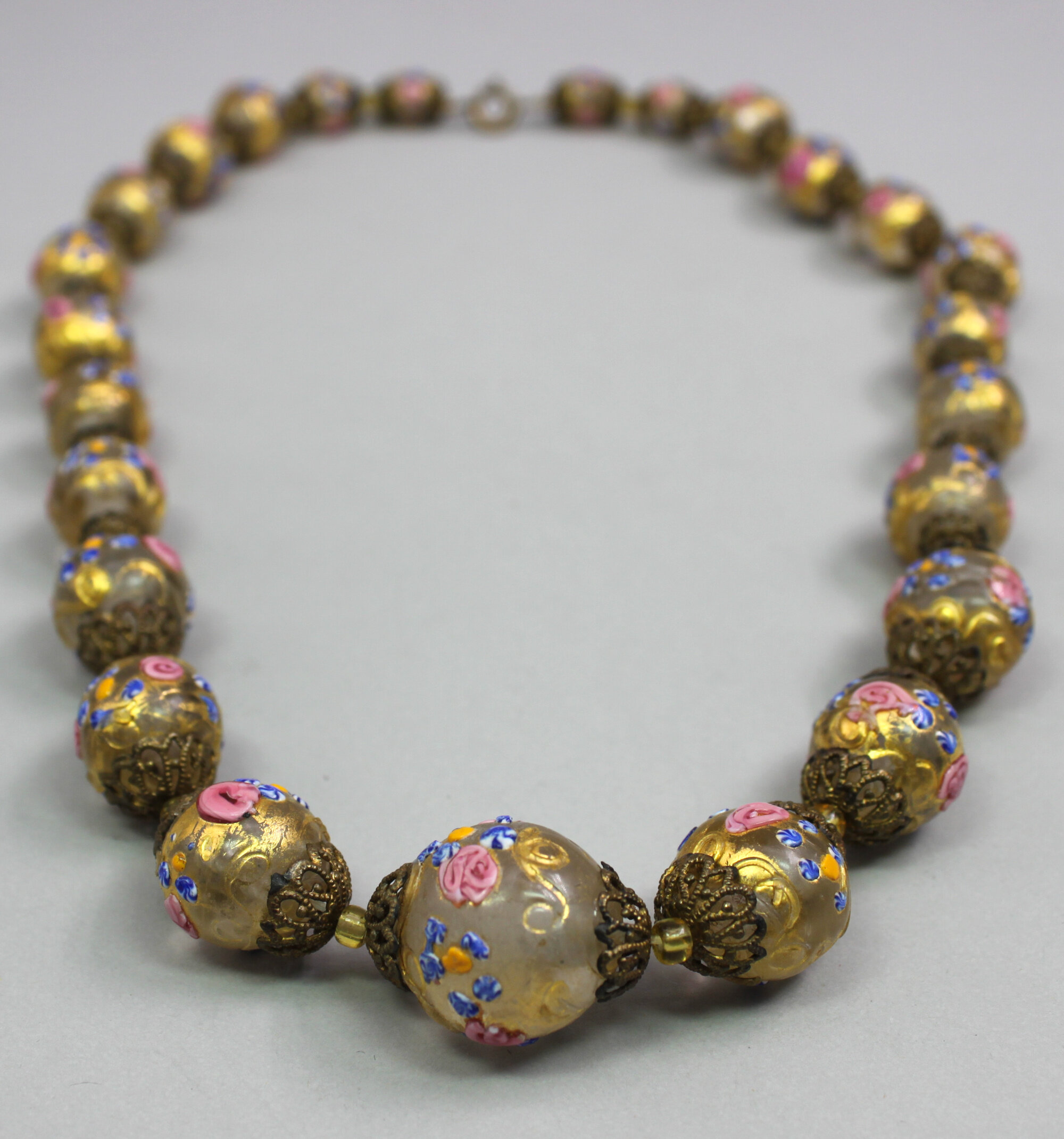
Victorian Grand Tour Wedding Cake glass necklace
Price: £125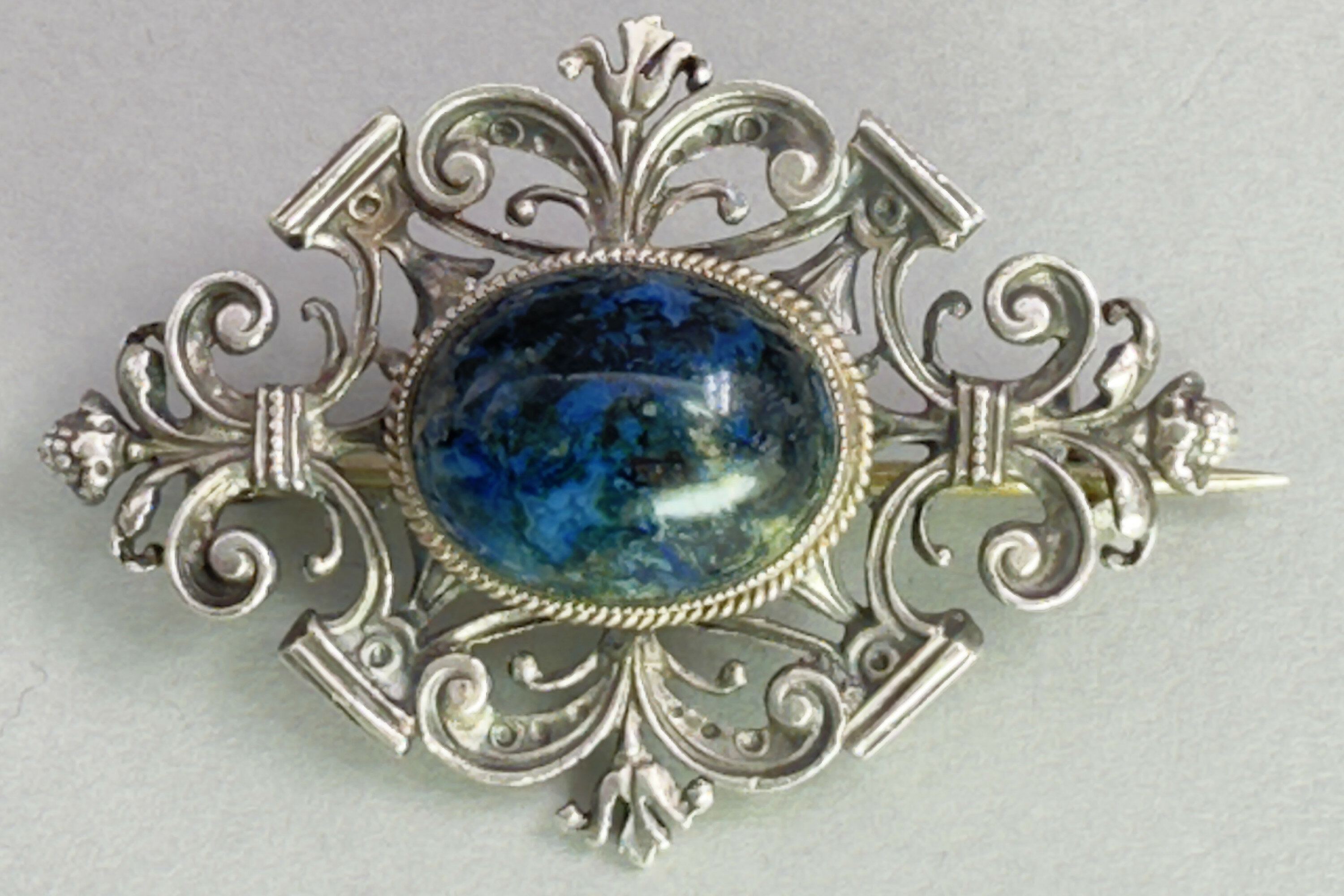
Florentine style lapis and silver brooch c1900
Price: £35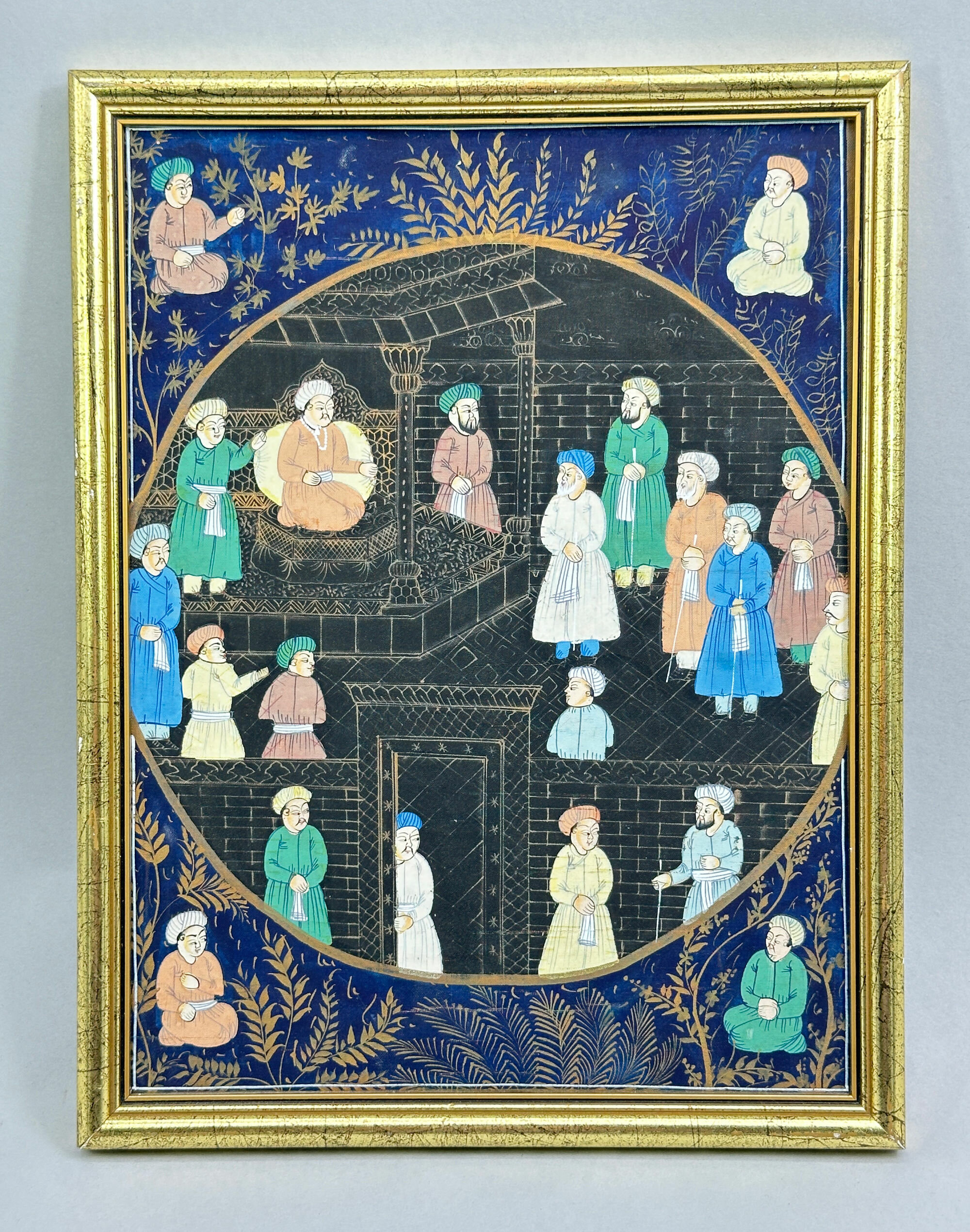
A Mughal style Gouache Painting depicting a Dignitary and Attendants, C20th
Price: £75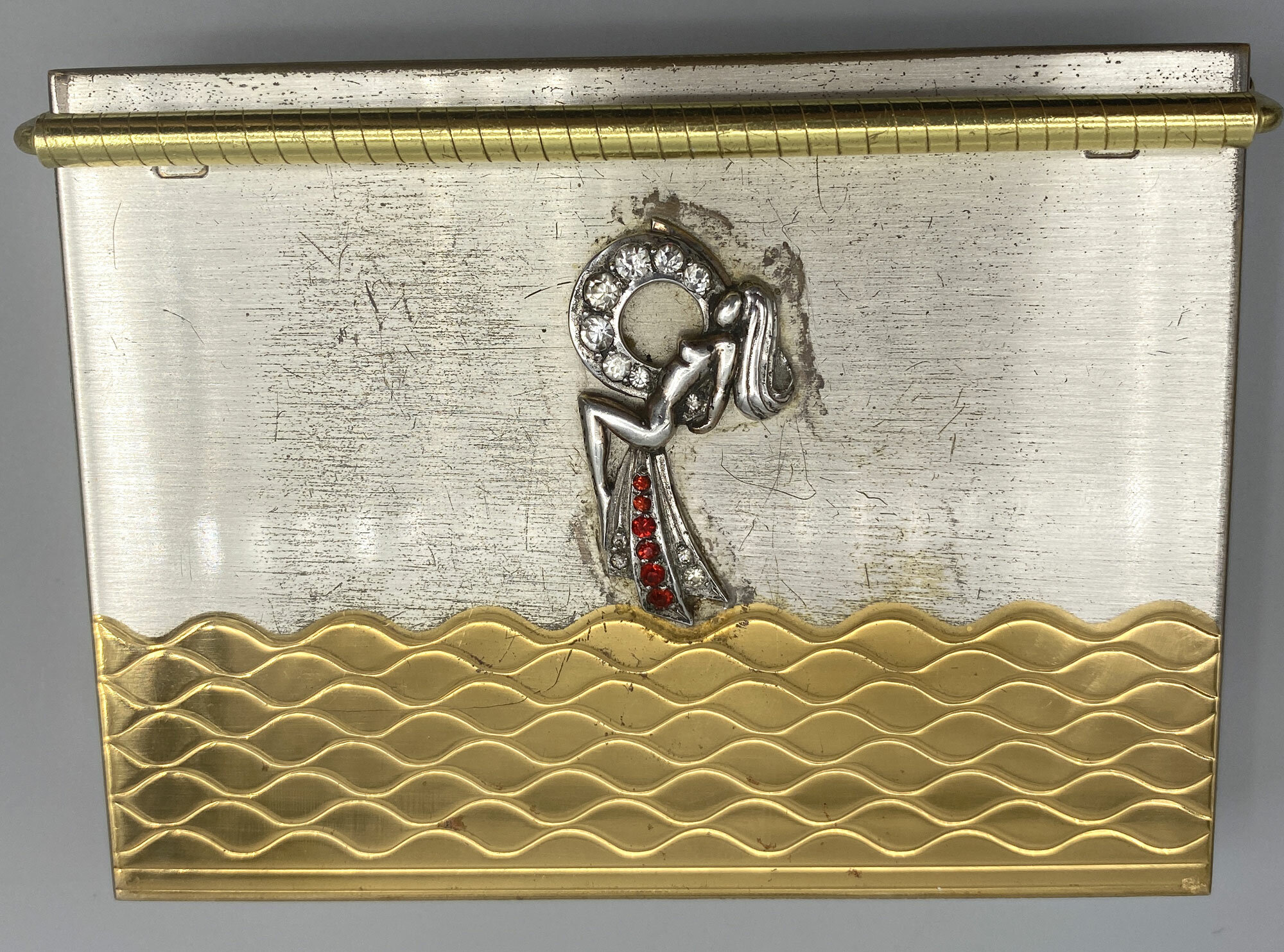
Unusual large evening minaudiere by Volupte USA 1950s
Price: £25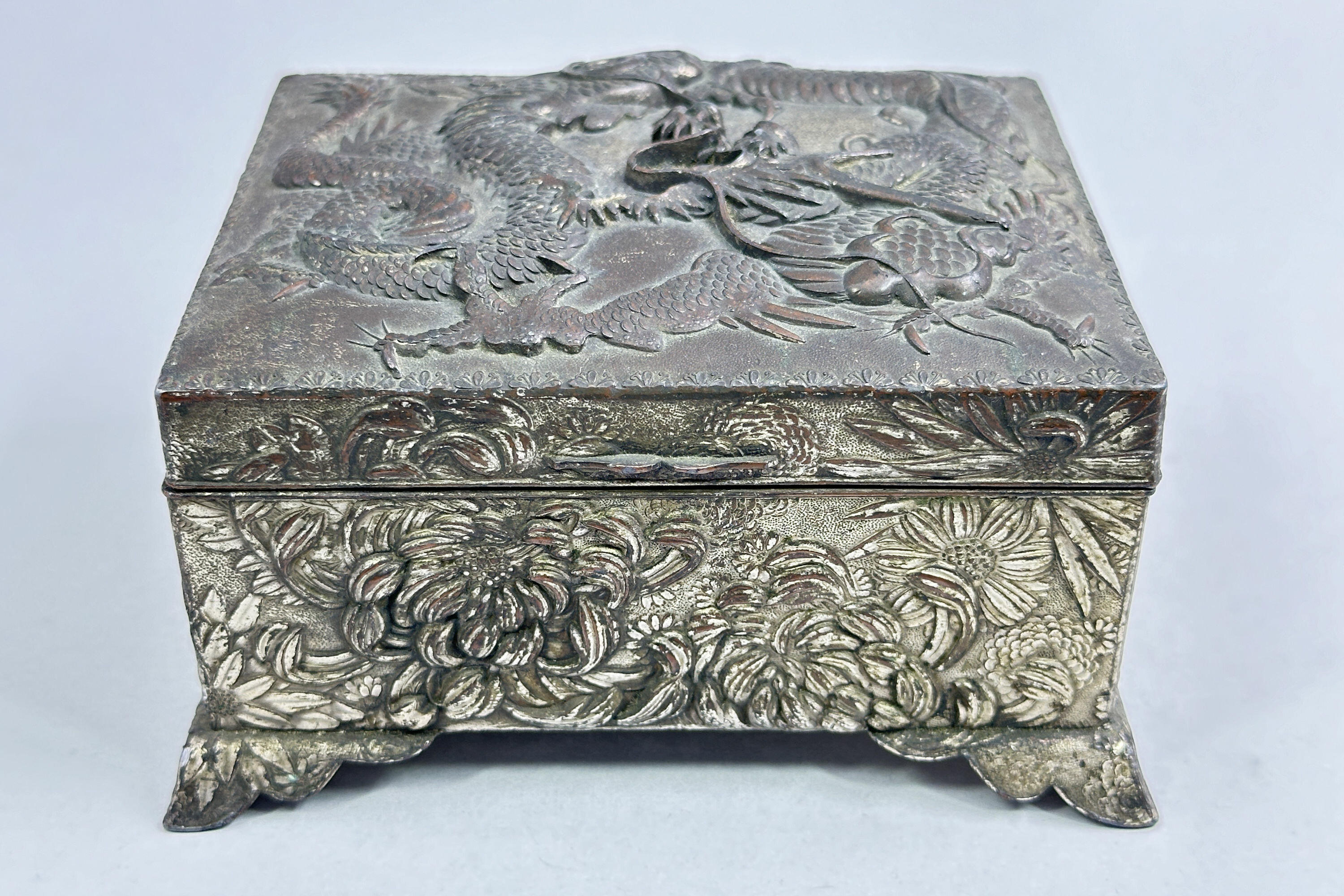
Oriental Silver Metal Box decorated Dragons and Chrysanthemum, C20th
Price: £25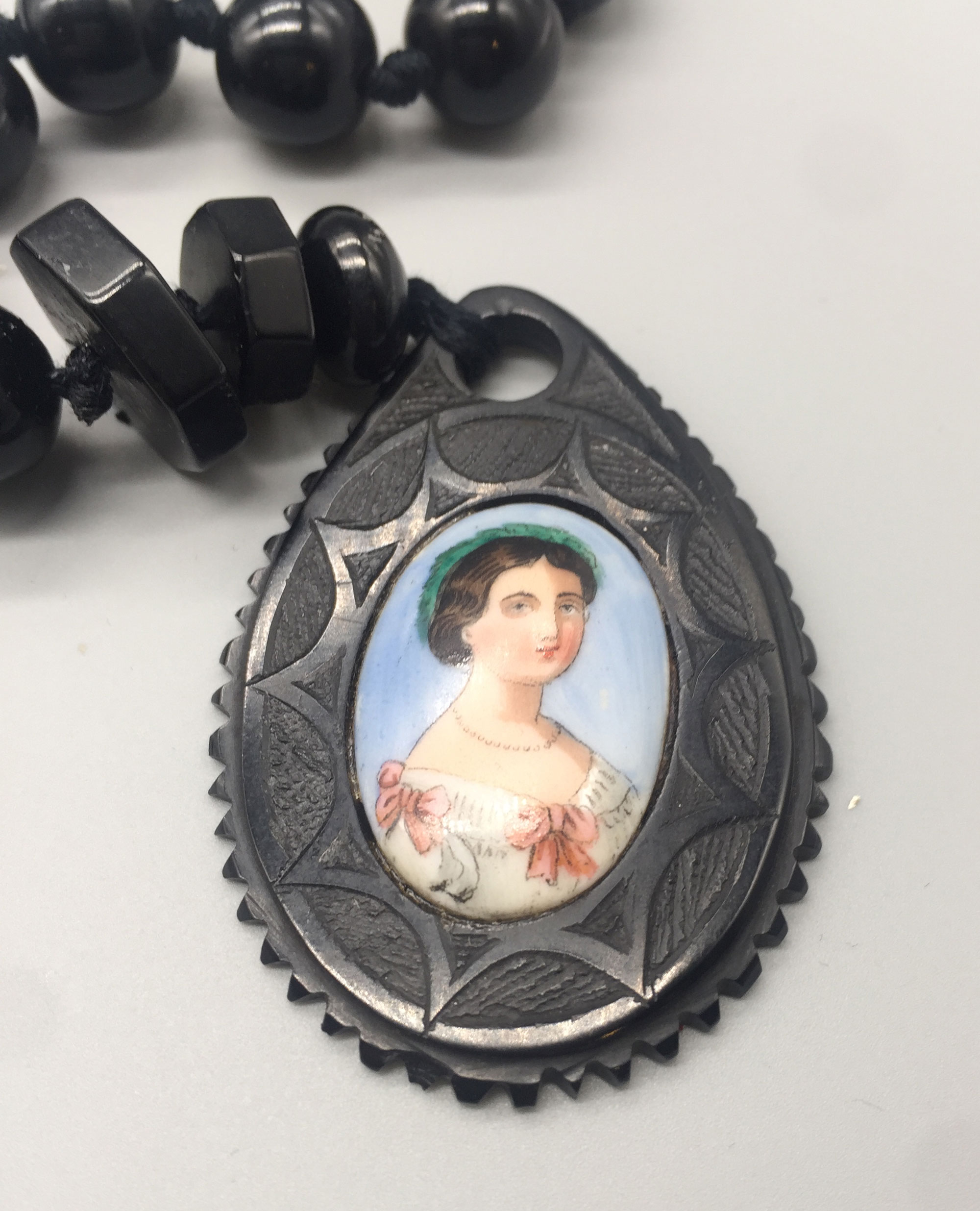
Victorian Whitby Jet mourning necklace with portrait plaque
Price: £125
Studio Pottery Vessel by David White, signed DW, late C20th
Price: £180The mark is for David James White (1934-2011) who established Broadstairs Pottery with his wife in 1978 (see lot XXXX) and then sold this in 1983 to concentrate on his own work which focused on high-fired porcelain decorated with a blend of crackle glazes in a range of colours with a high sophistication of technique, see ‘British Studio Potters’ Marks’ by Eric Yates-Owen and Robert Fournier (2nd edition 2005 p534). This vessel, a form he produced in a variety of colourings of which this is perhaps one of the most pleasing, is an excellent example of his work which rivals some of the best creations of earlier Chinese potters in the standard of finish achieved.
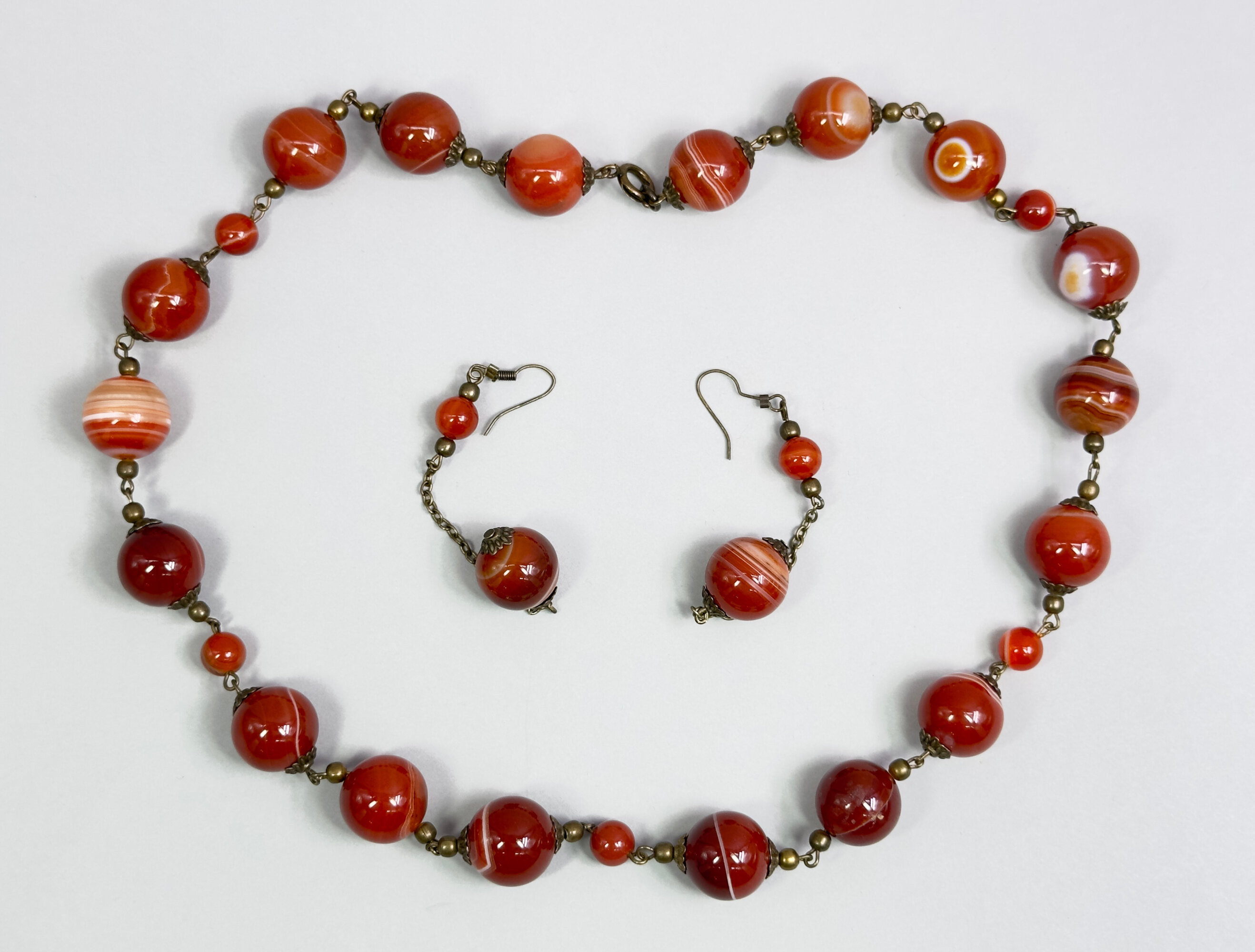
Suite of Art Deco banded carnelian necklace and earrings c1920
Price: £95
Ring Tail Lizard Skin Minaudiere with a strap handle marked JD, 1930s
Price: £95This example opens out on one side (the clasp is rather stiff) to reveal a mirror and two lidded powder compacts (complete with the guaze liners) and a holder for a comb (now missing) and on the other where there is a cigarette holder and a compartment presumably for matches. On the lid of this is a pouch doubtless intended as a purse. At the end is a pull out lipstick holder with a small strap and the piece hangs from a strap handle marked with the initials JD.
The piece is in remarkable condition for its age and recalls an era of elegance which a contemporary user might emulate on some special occasion.
